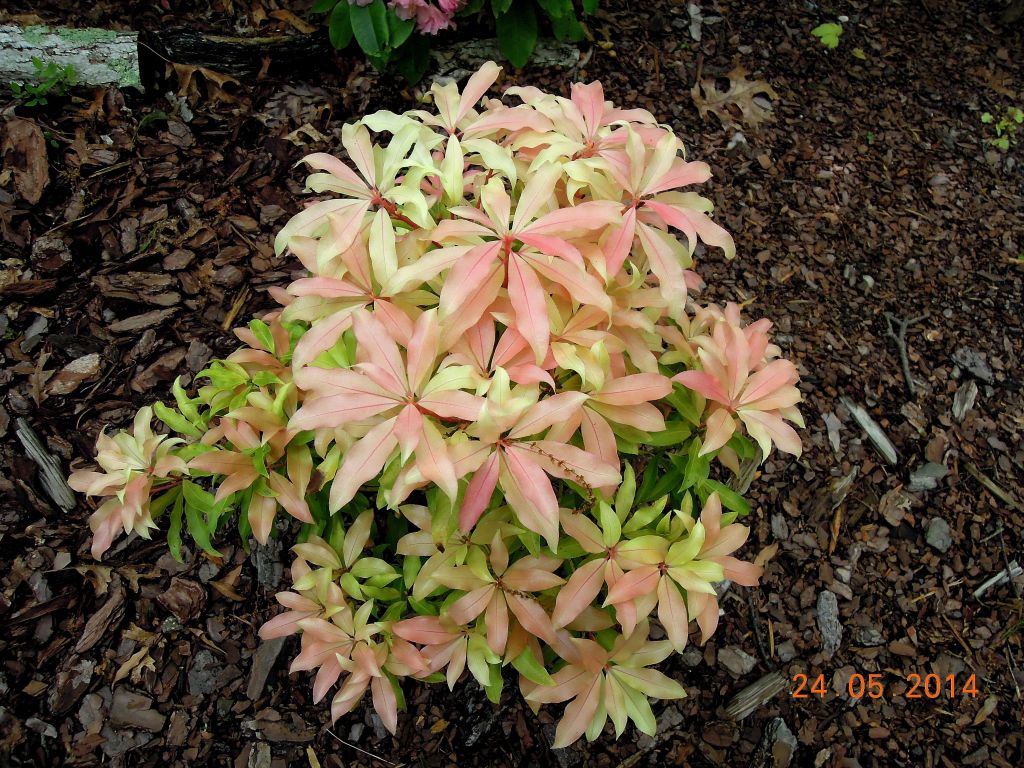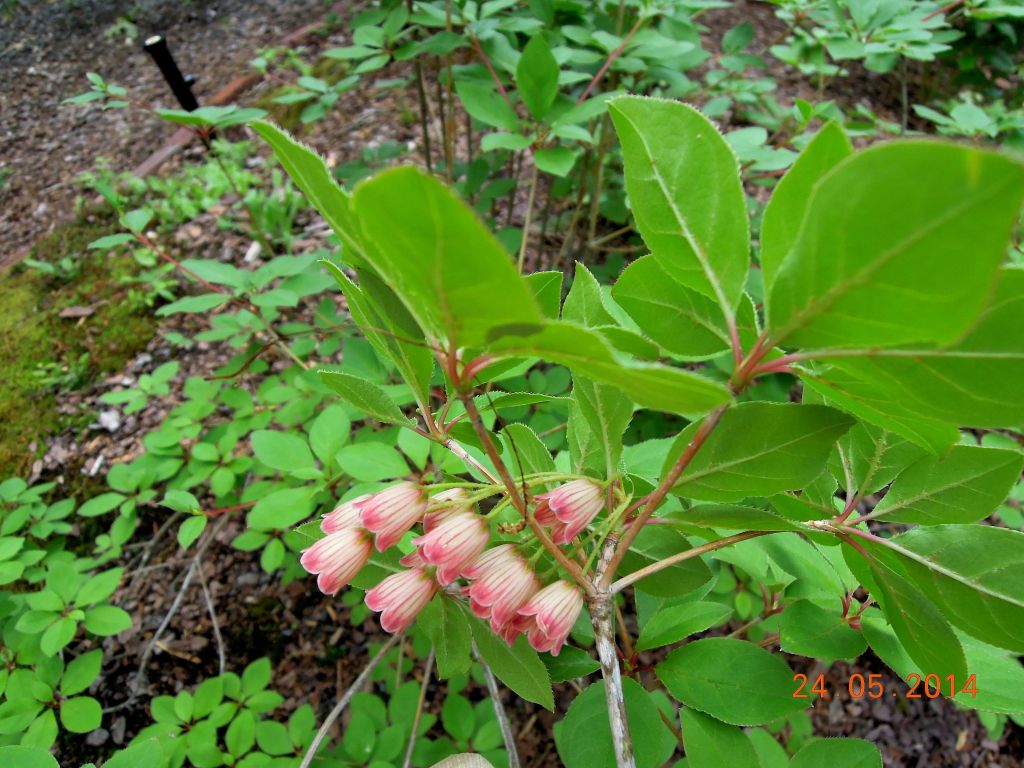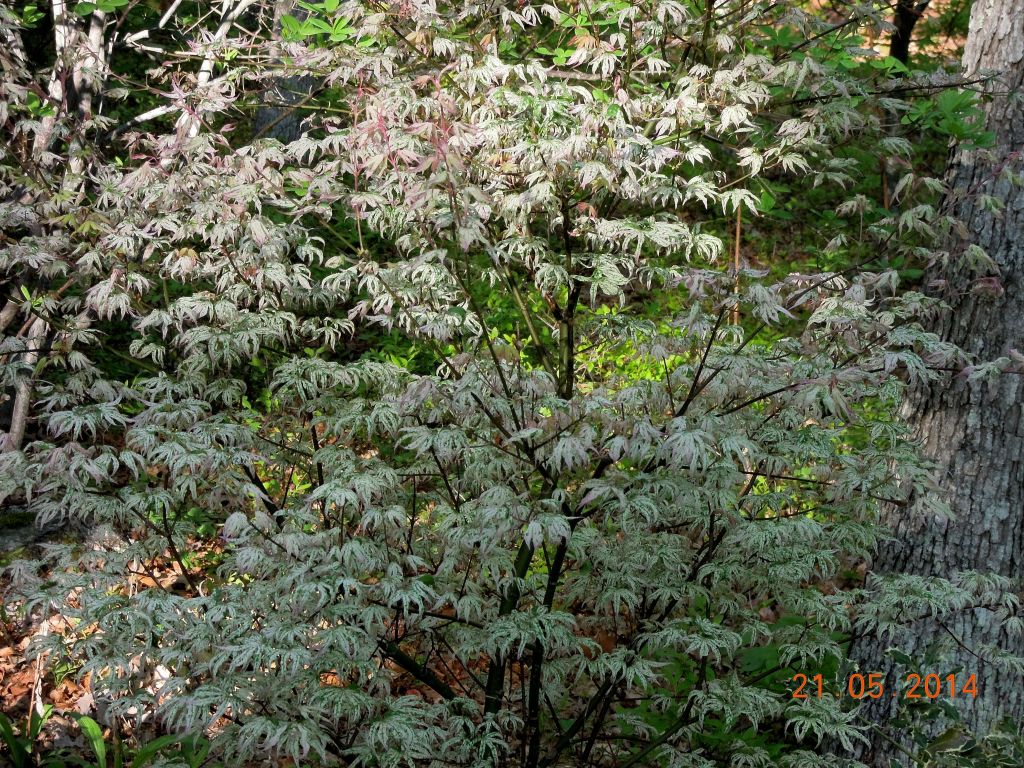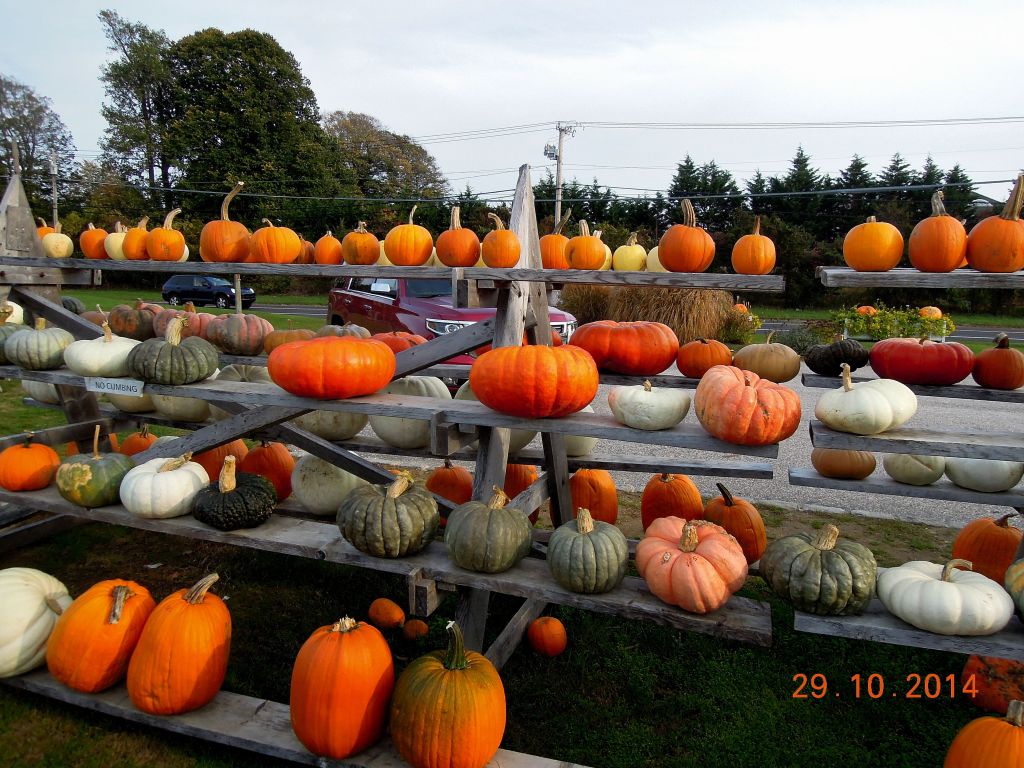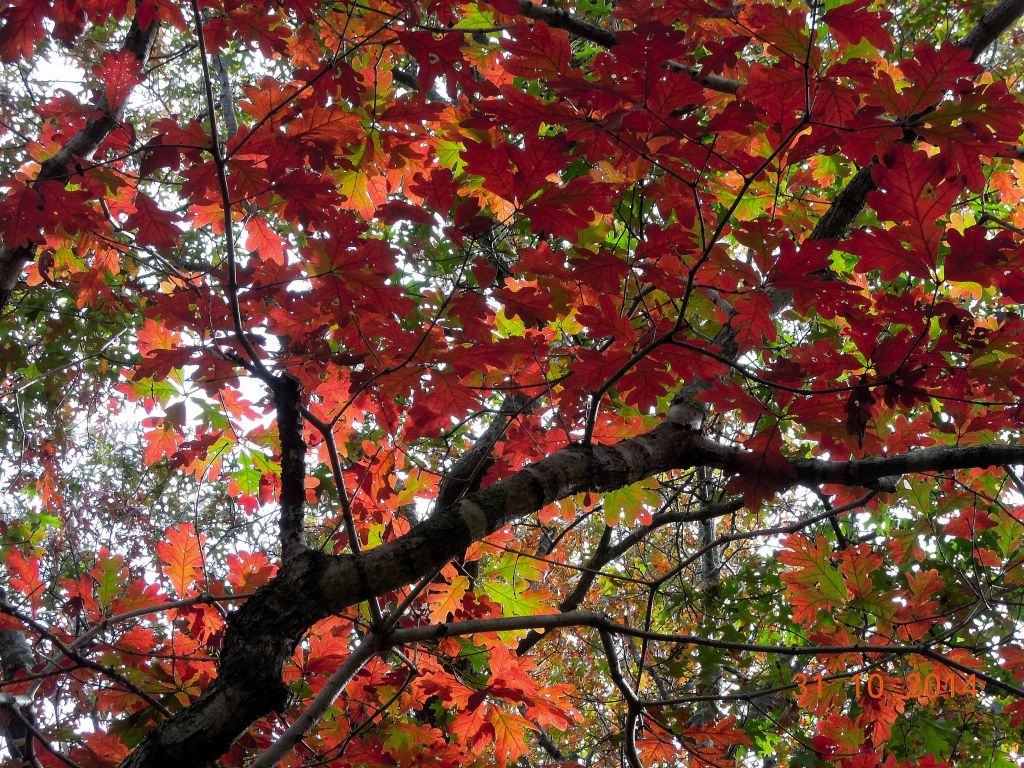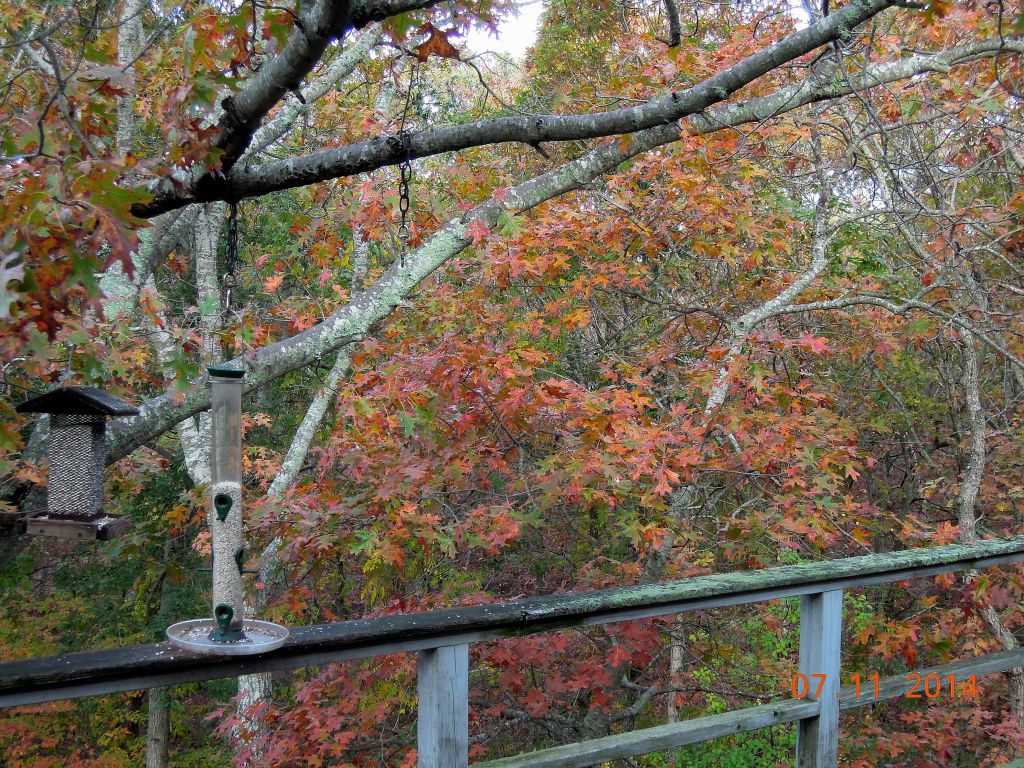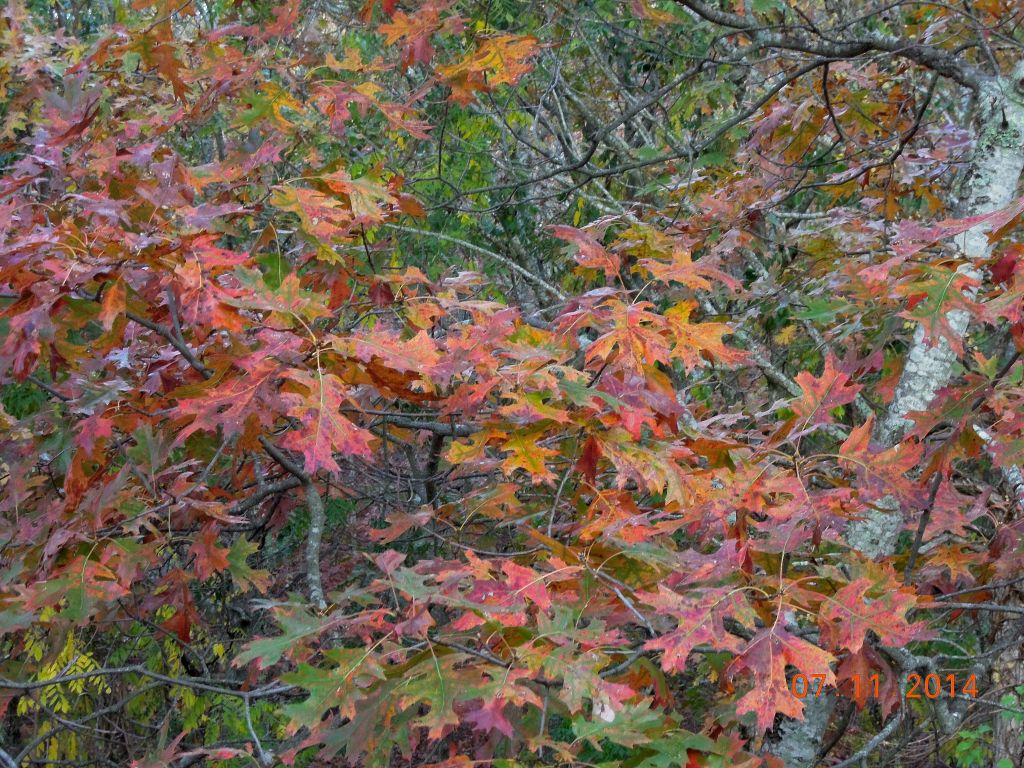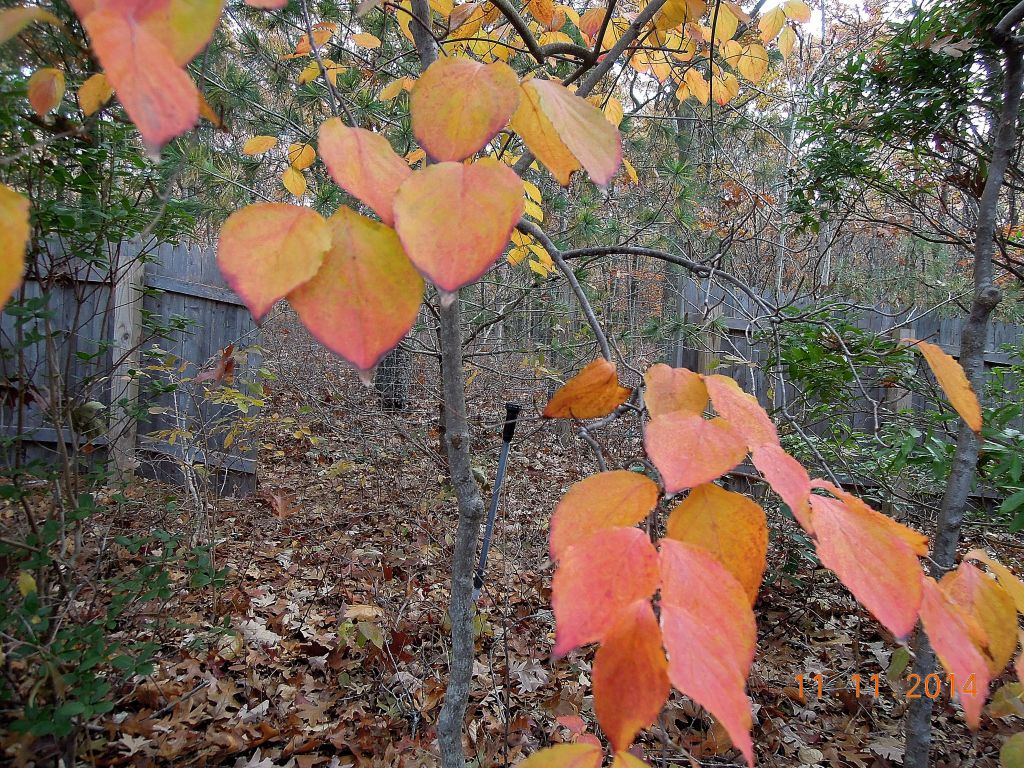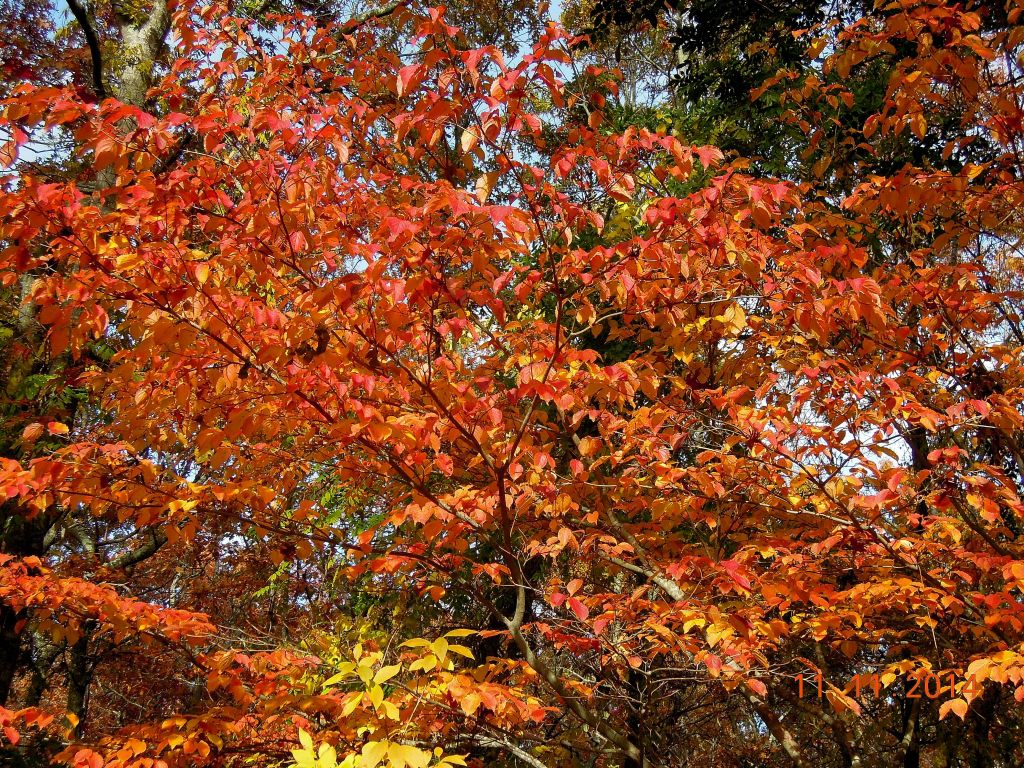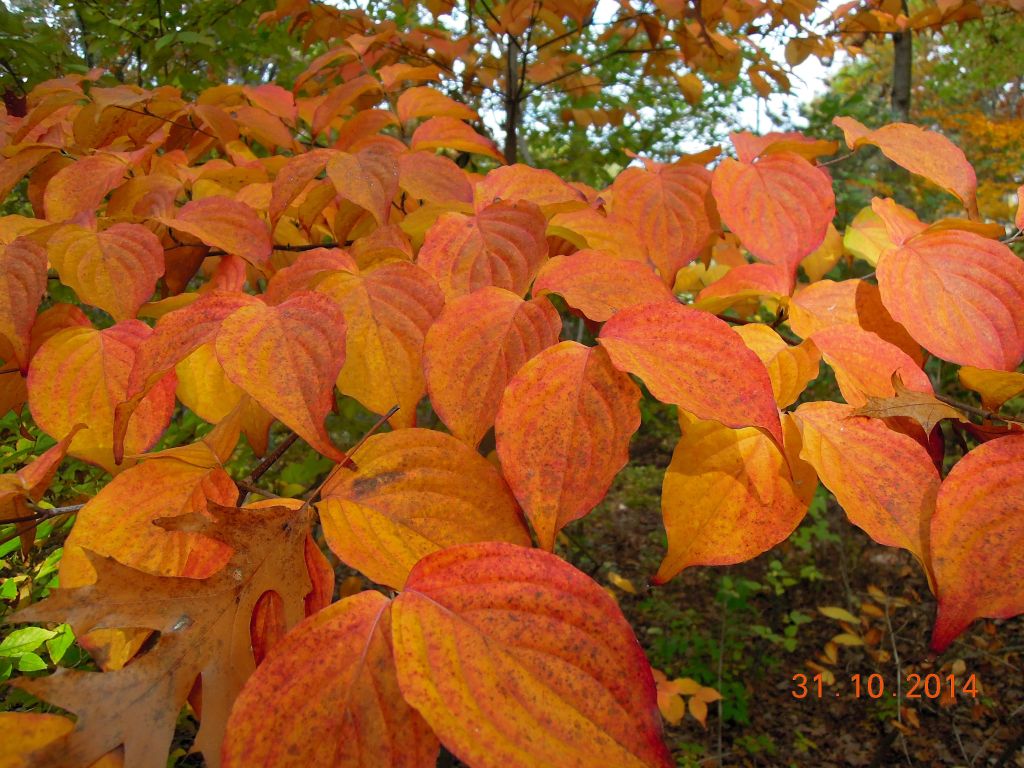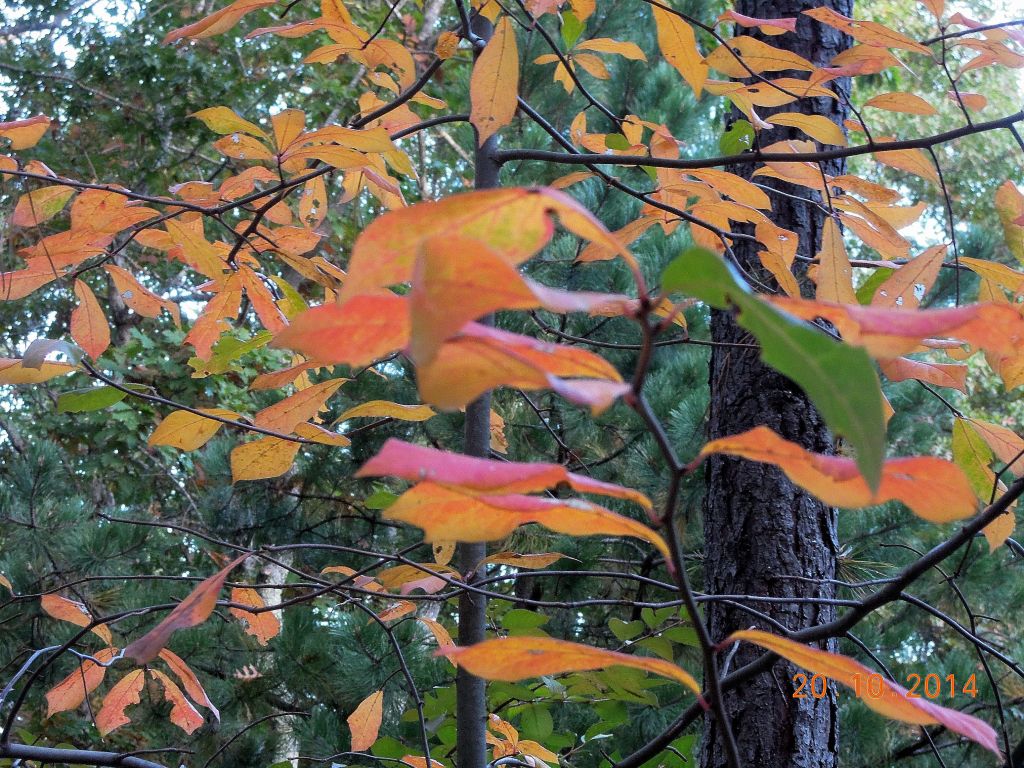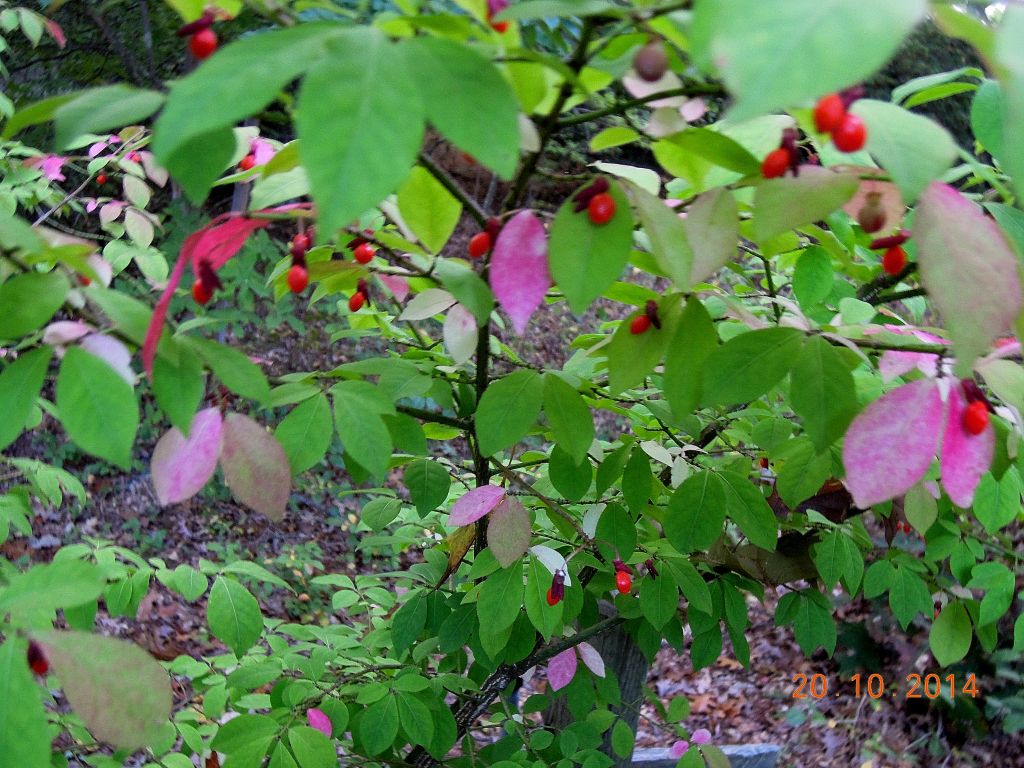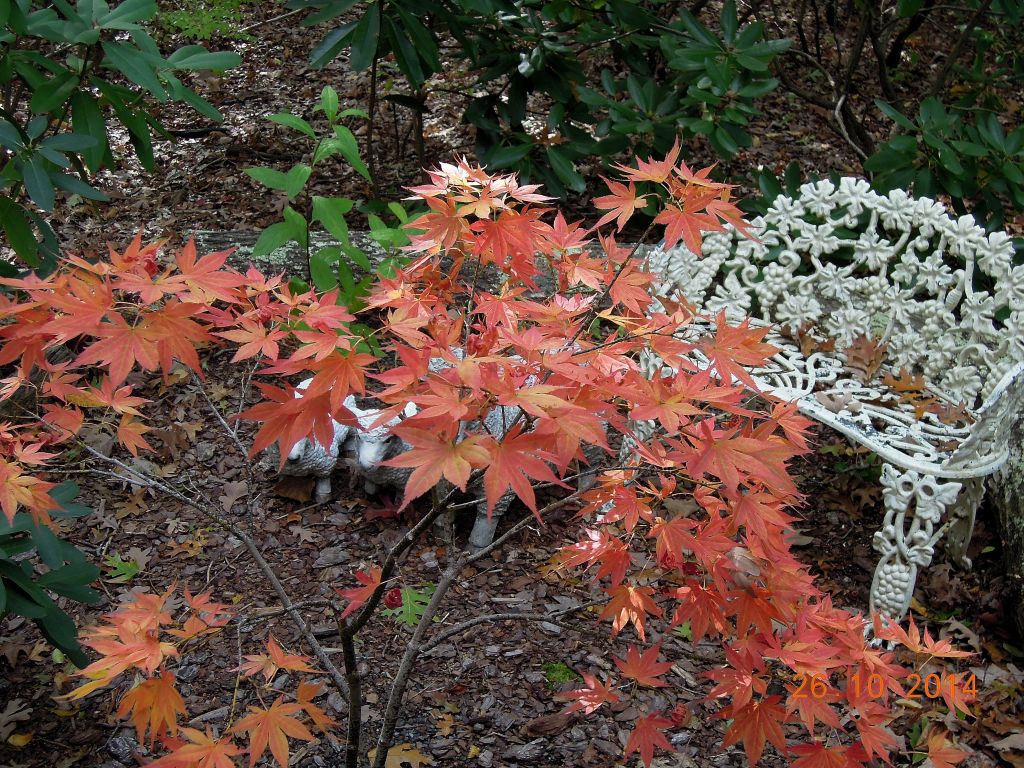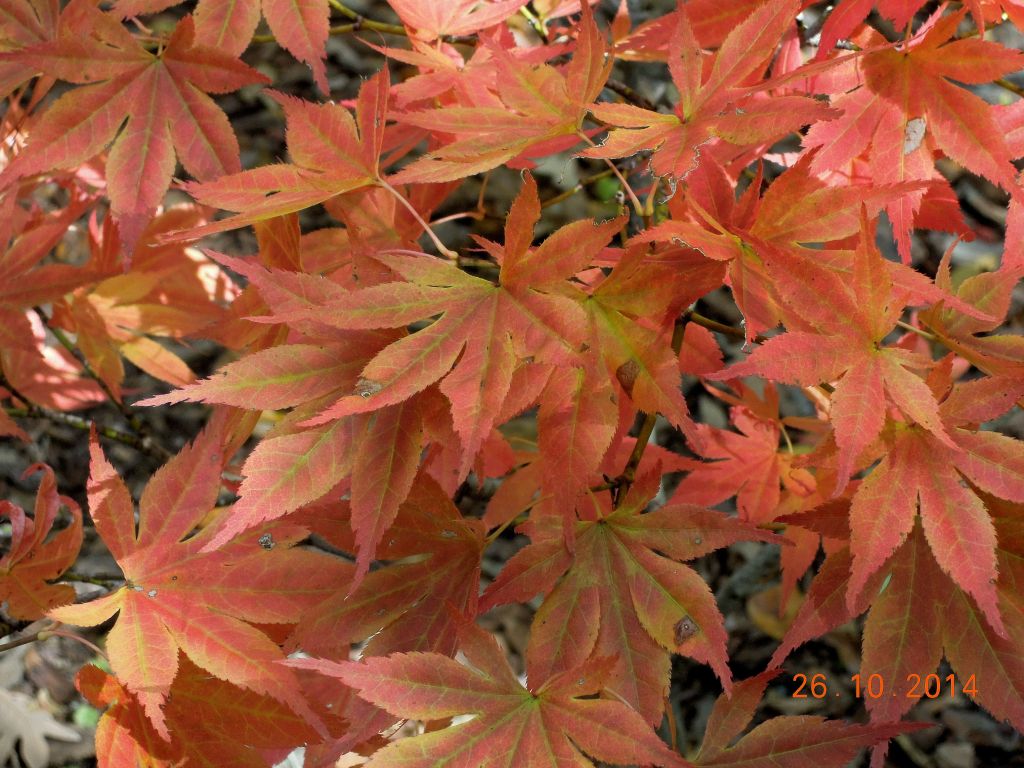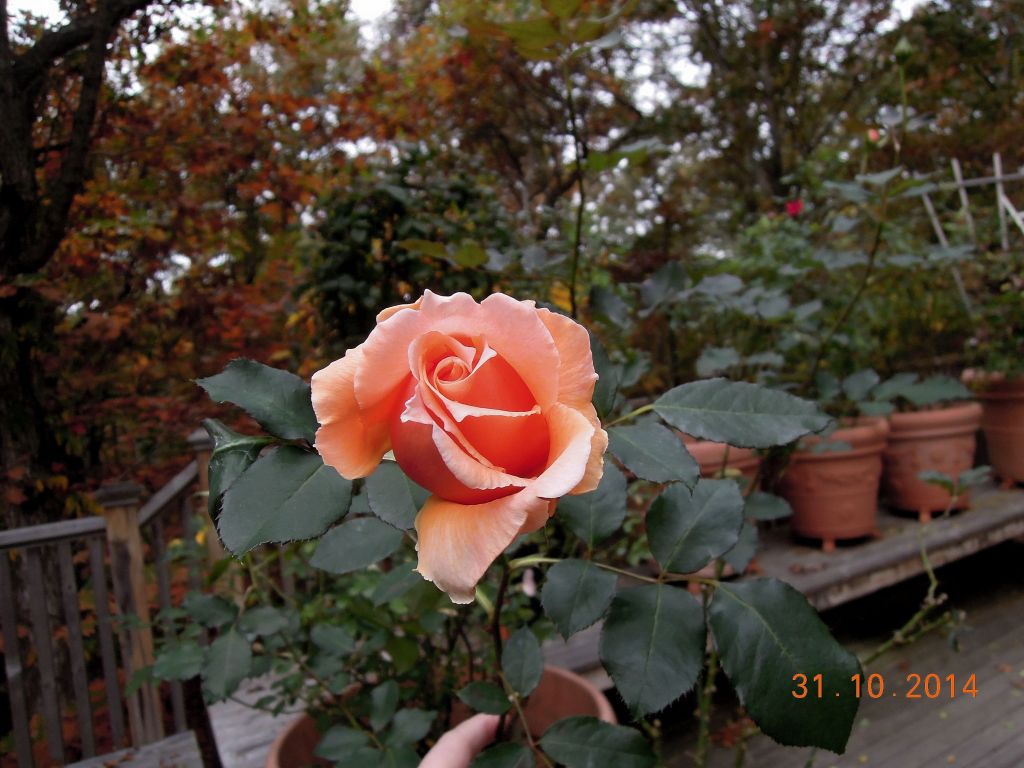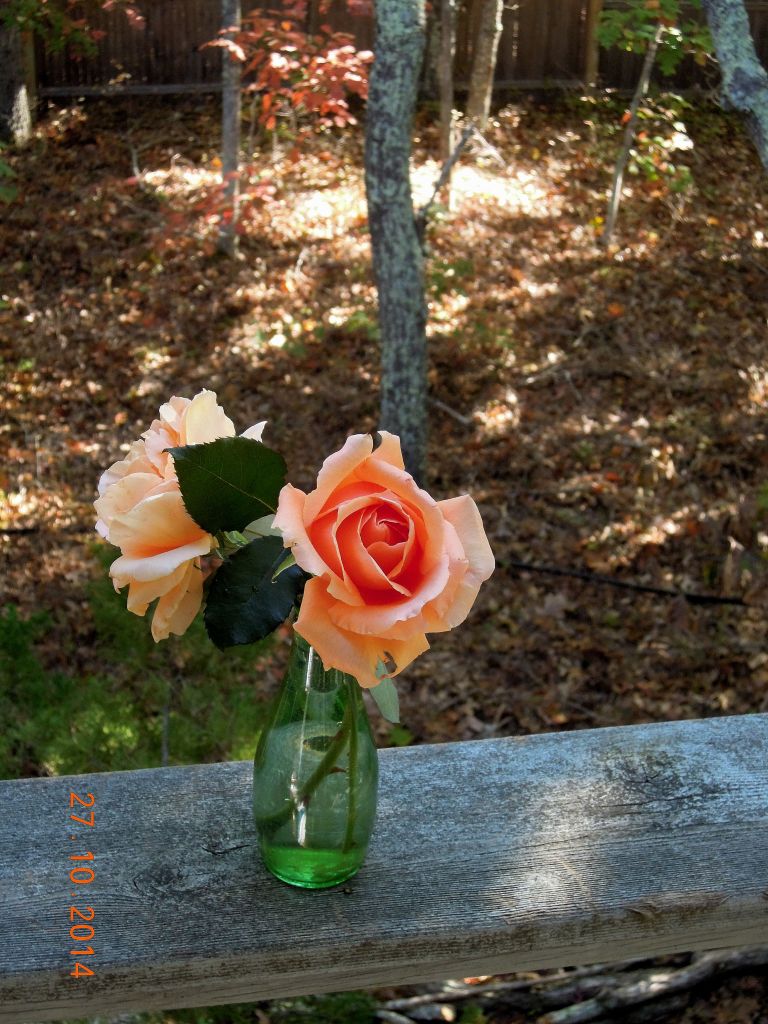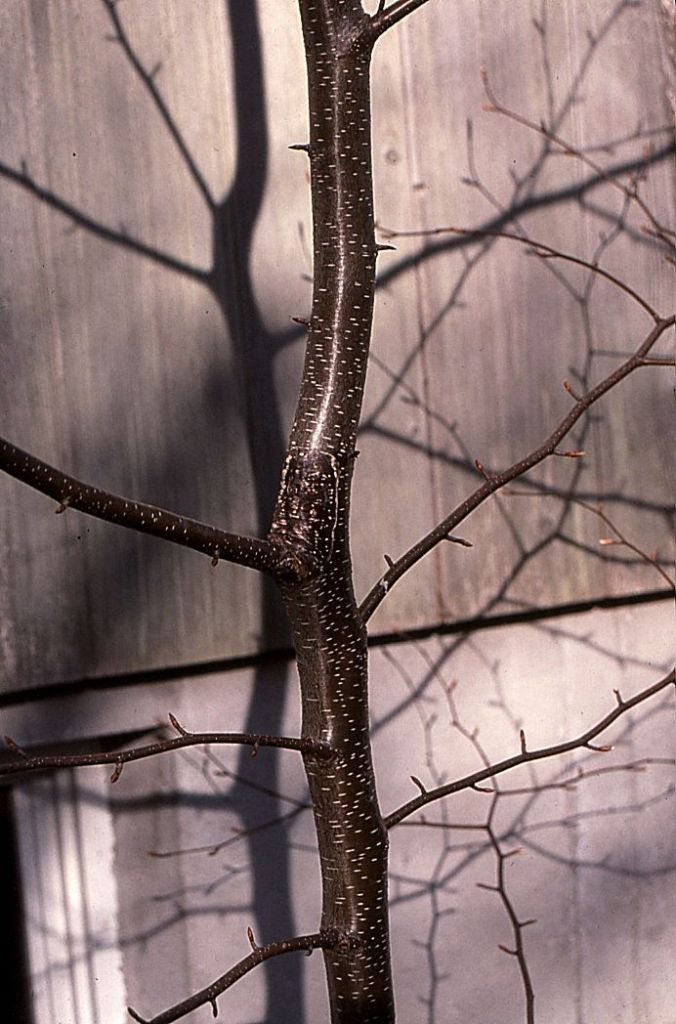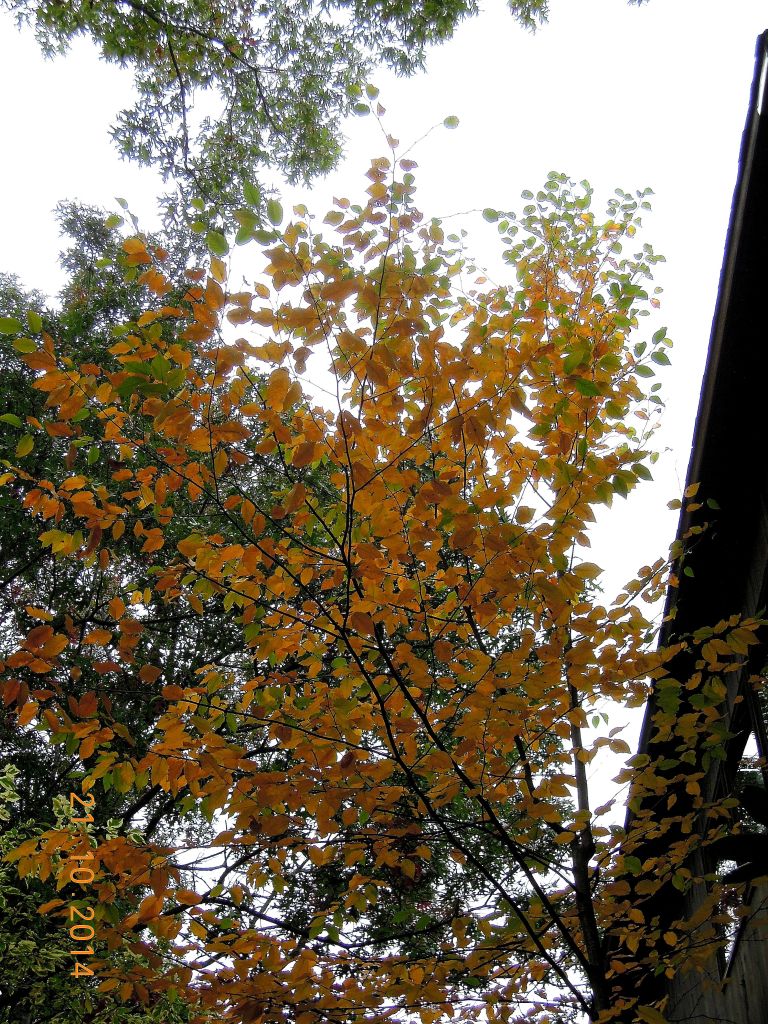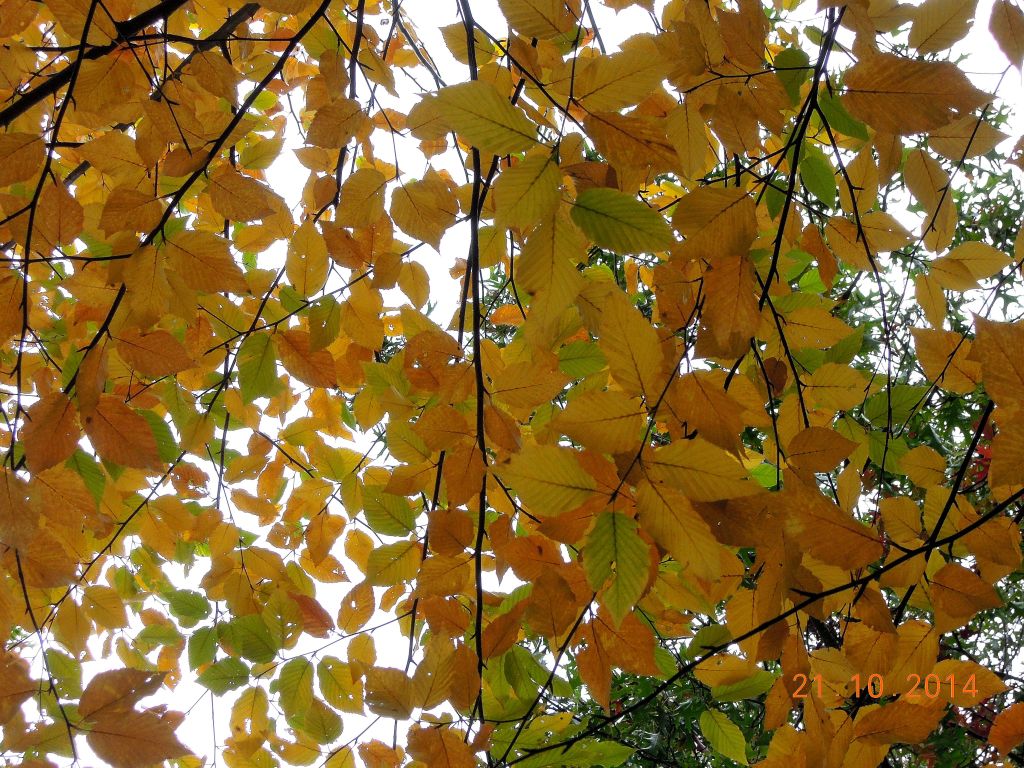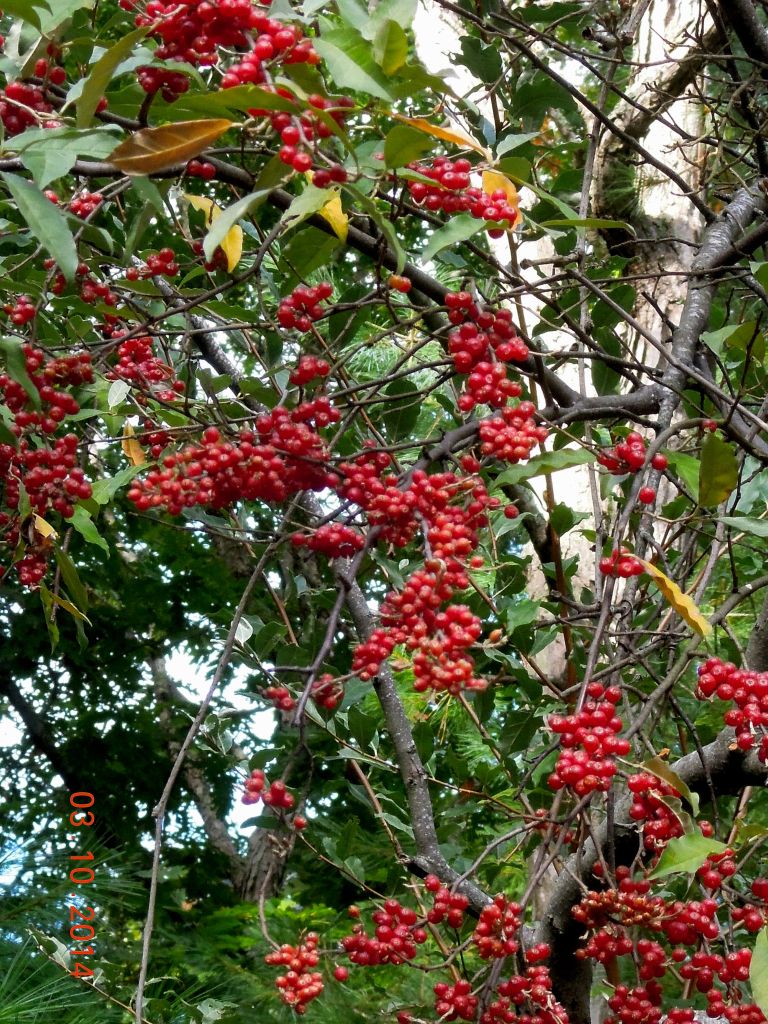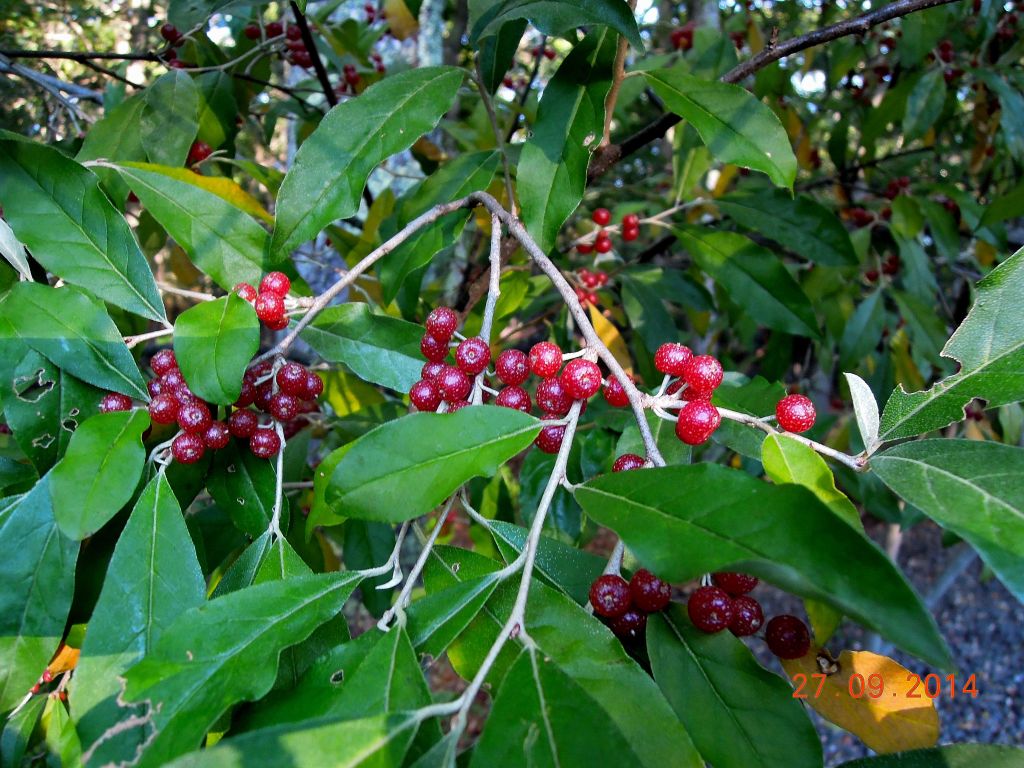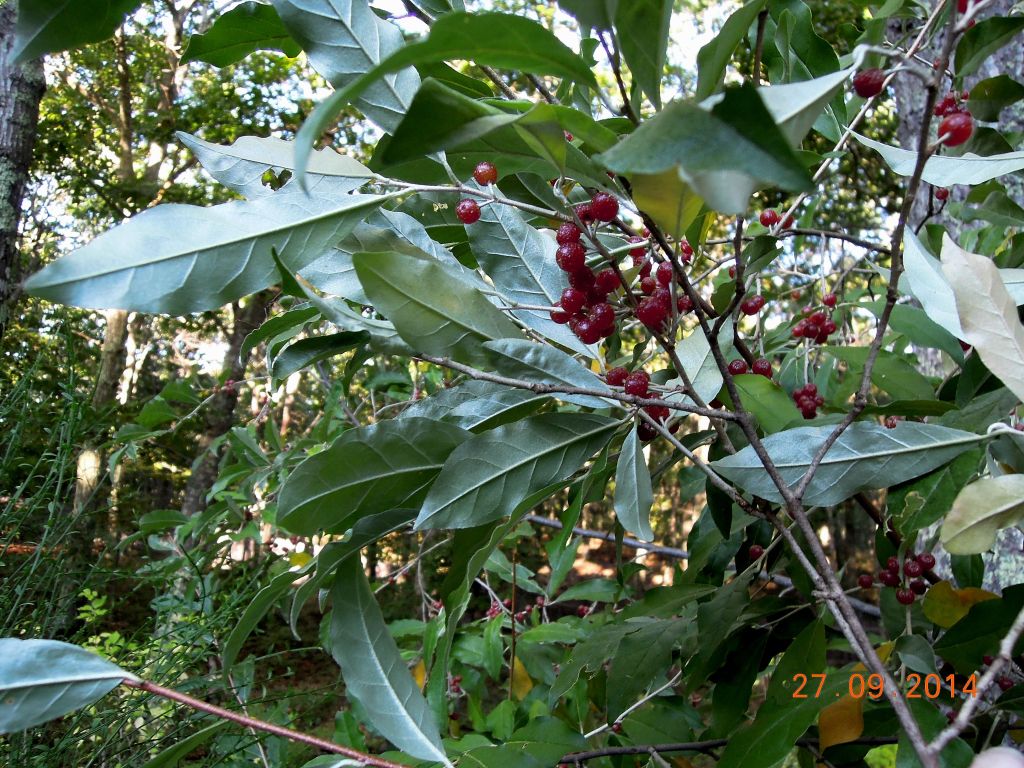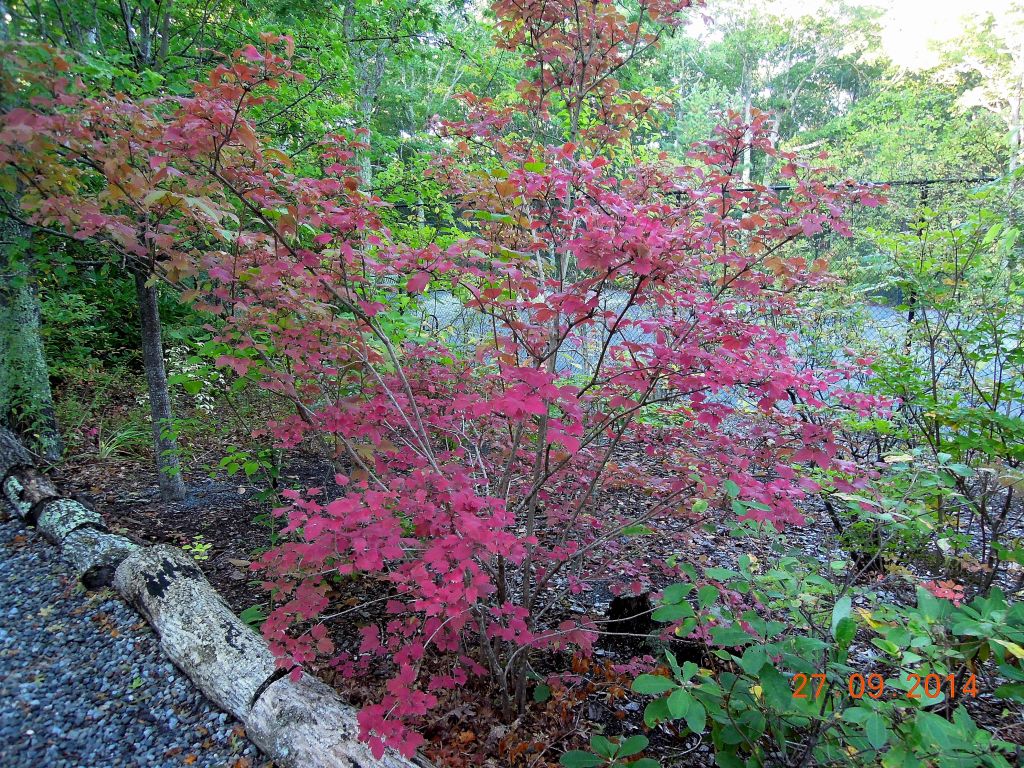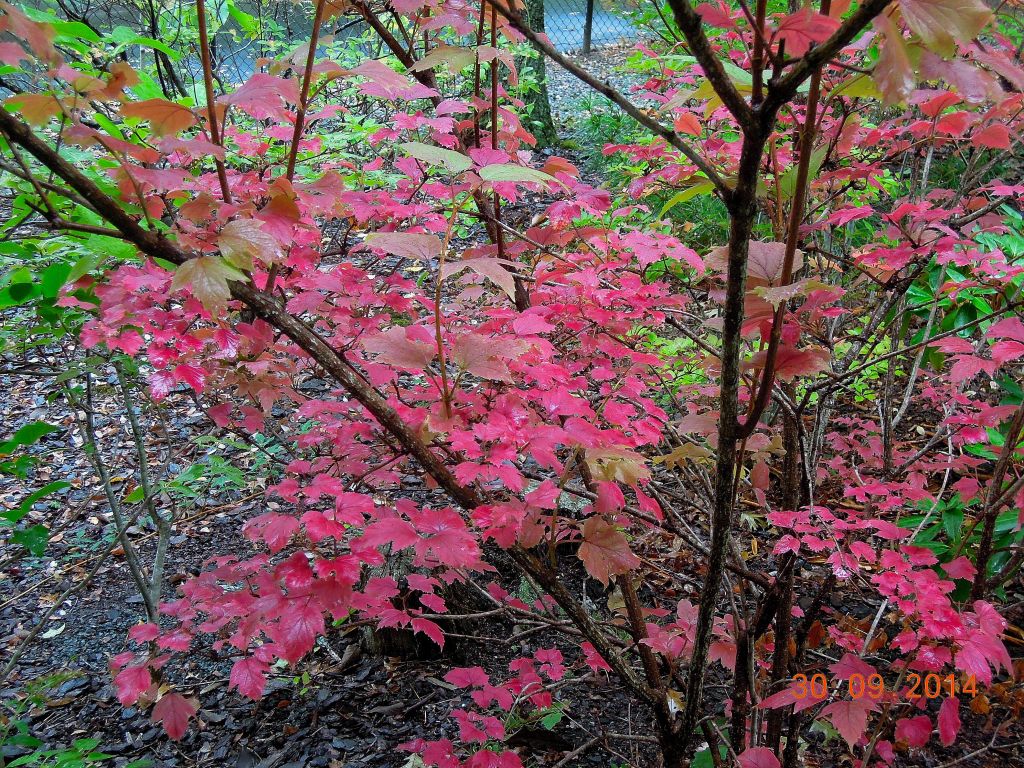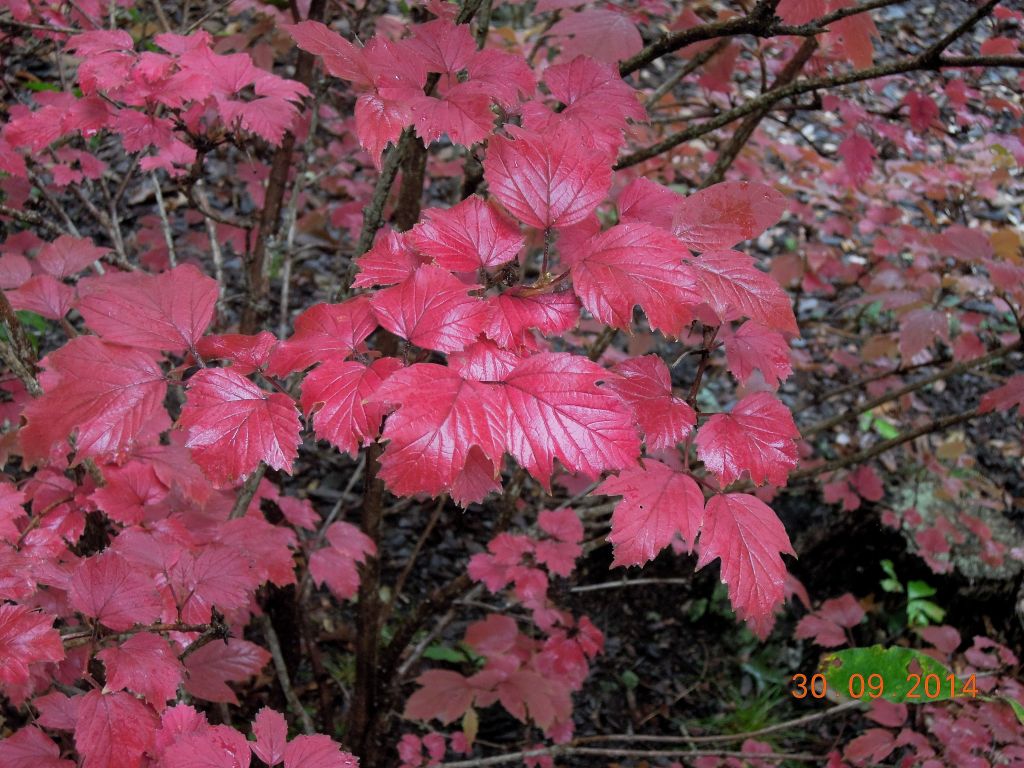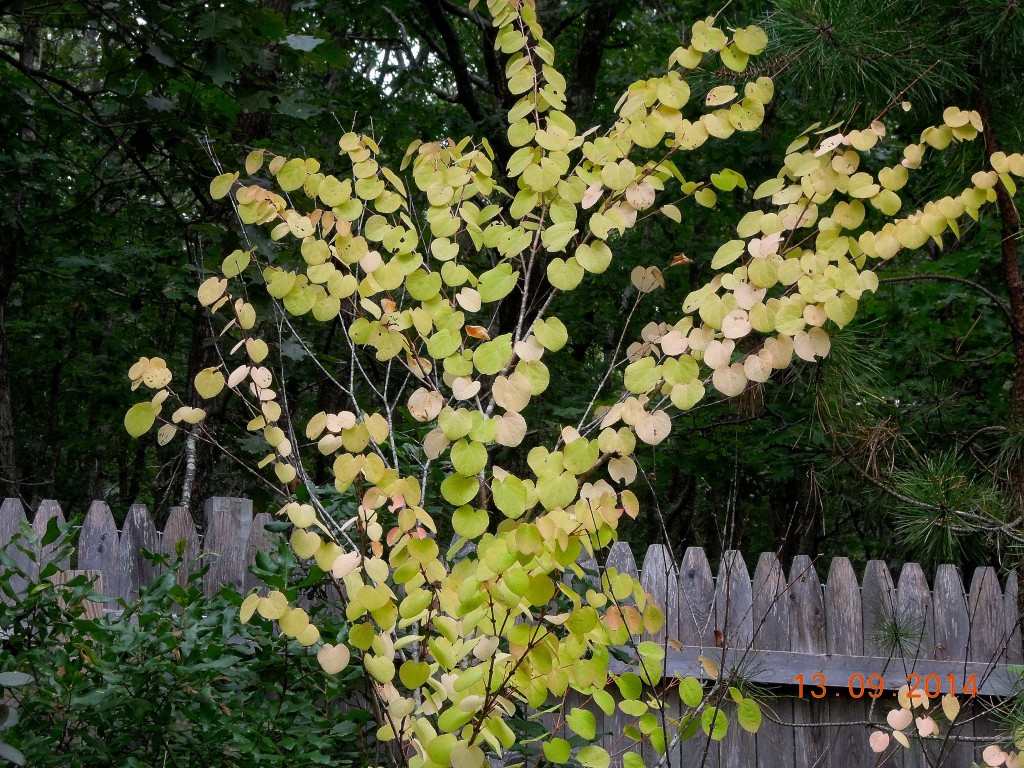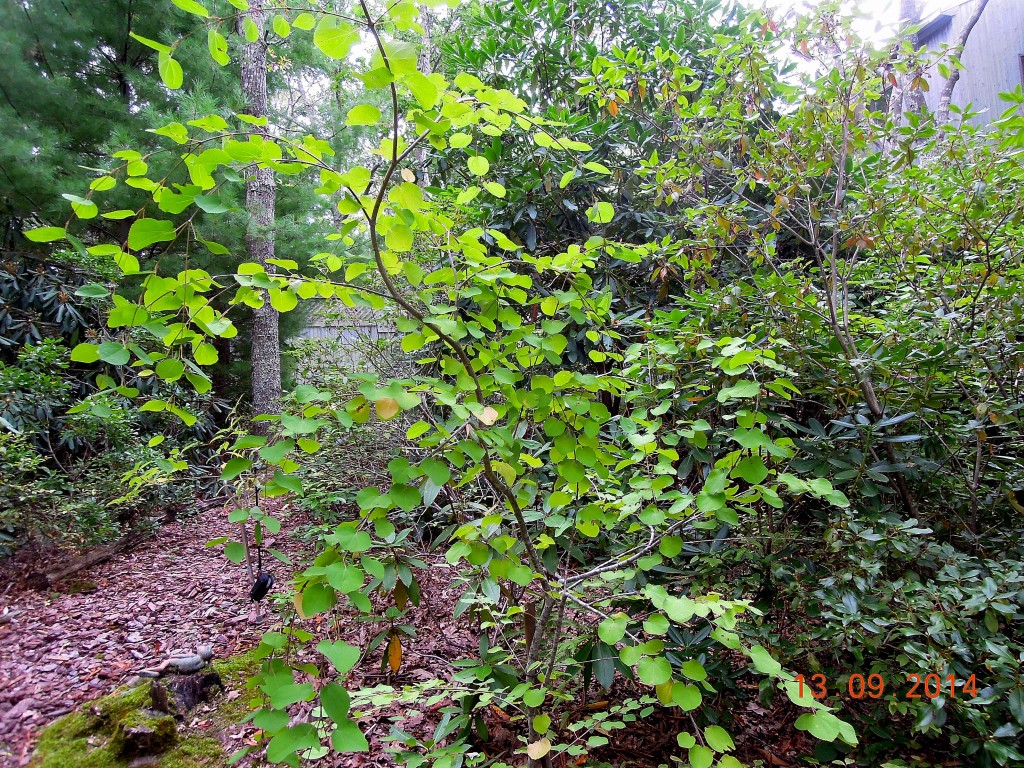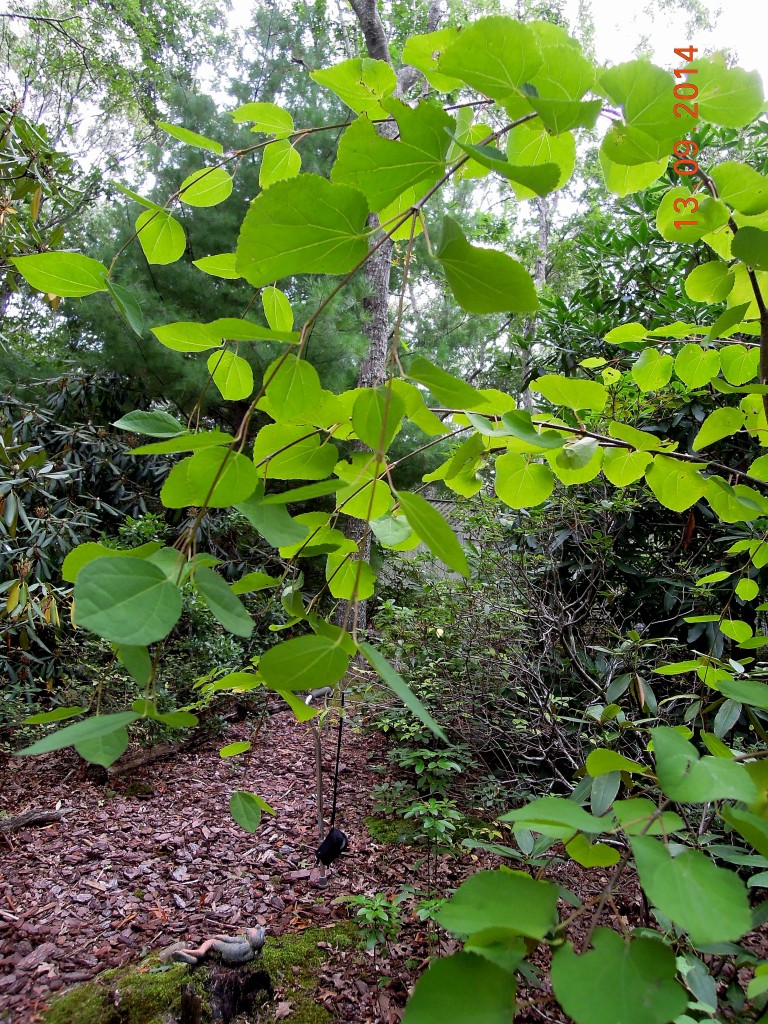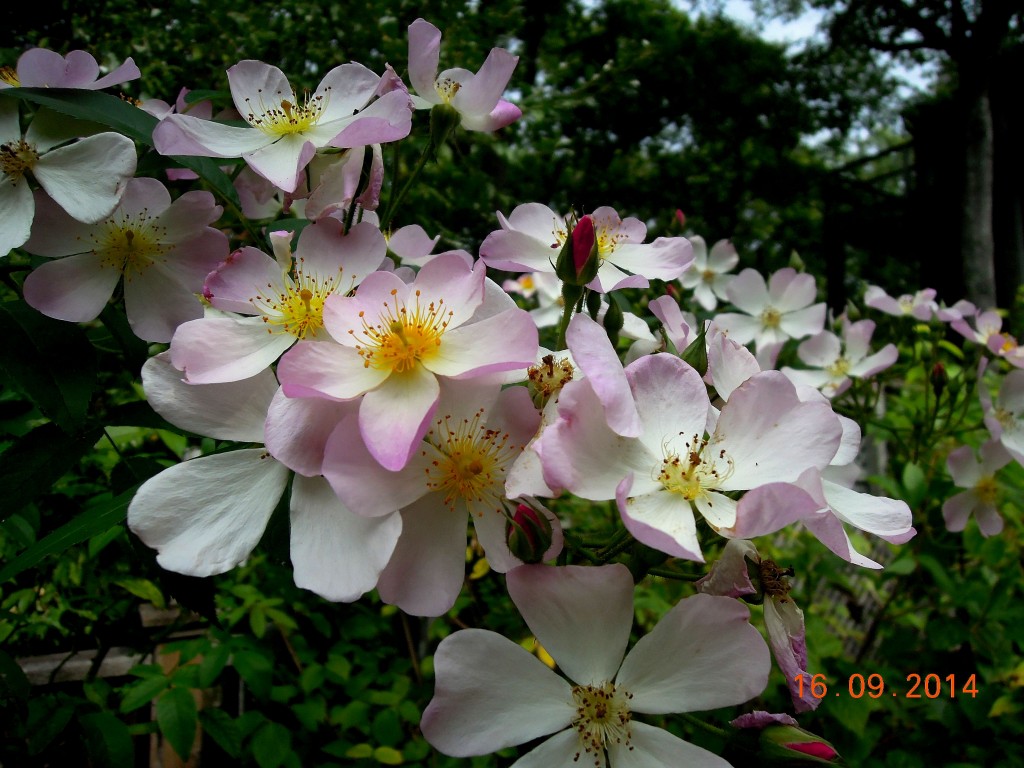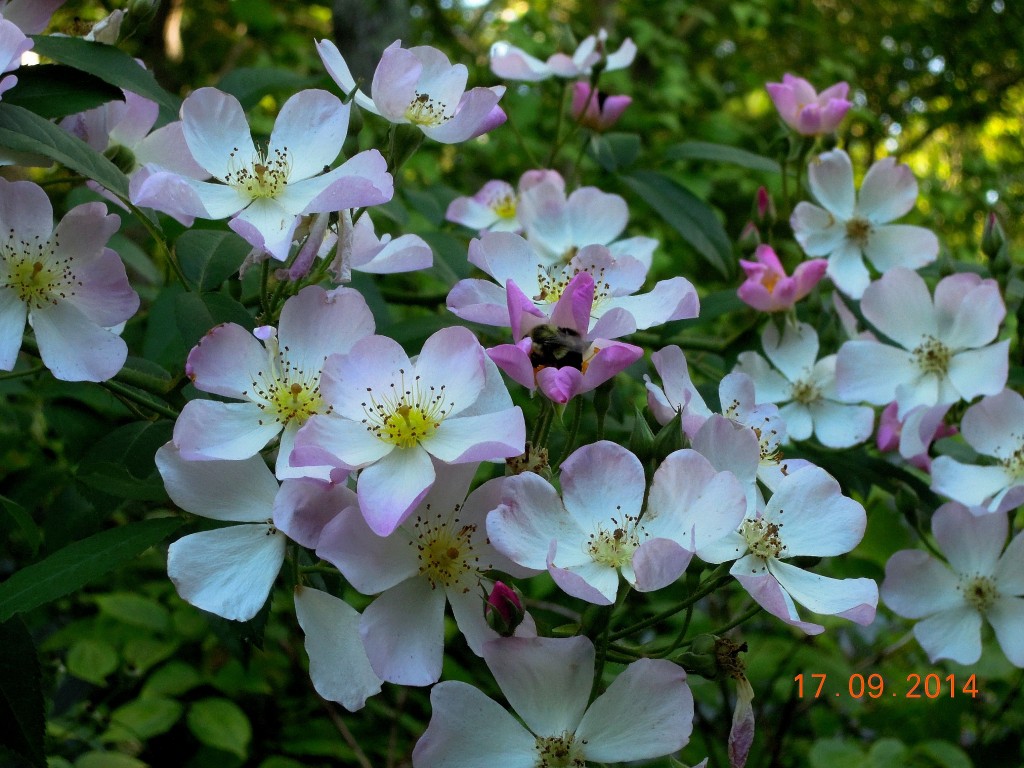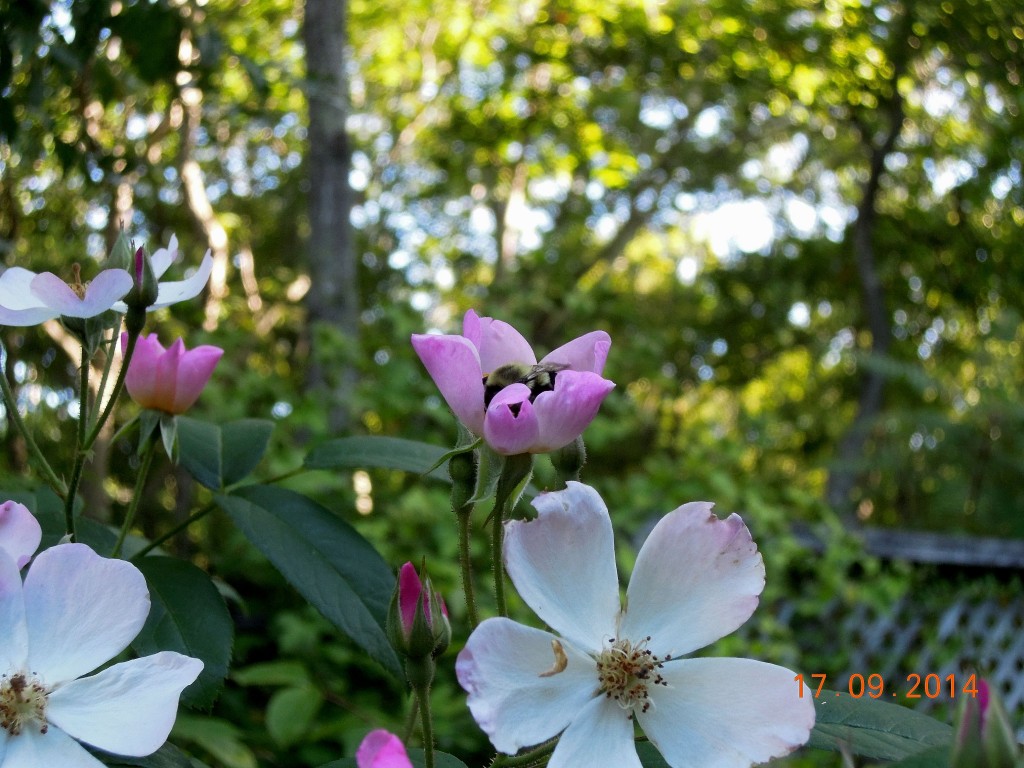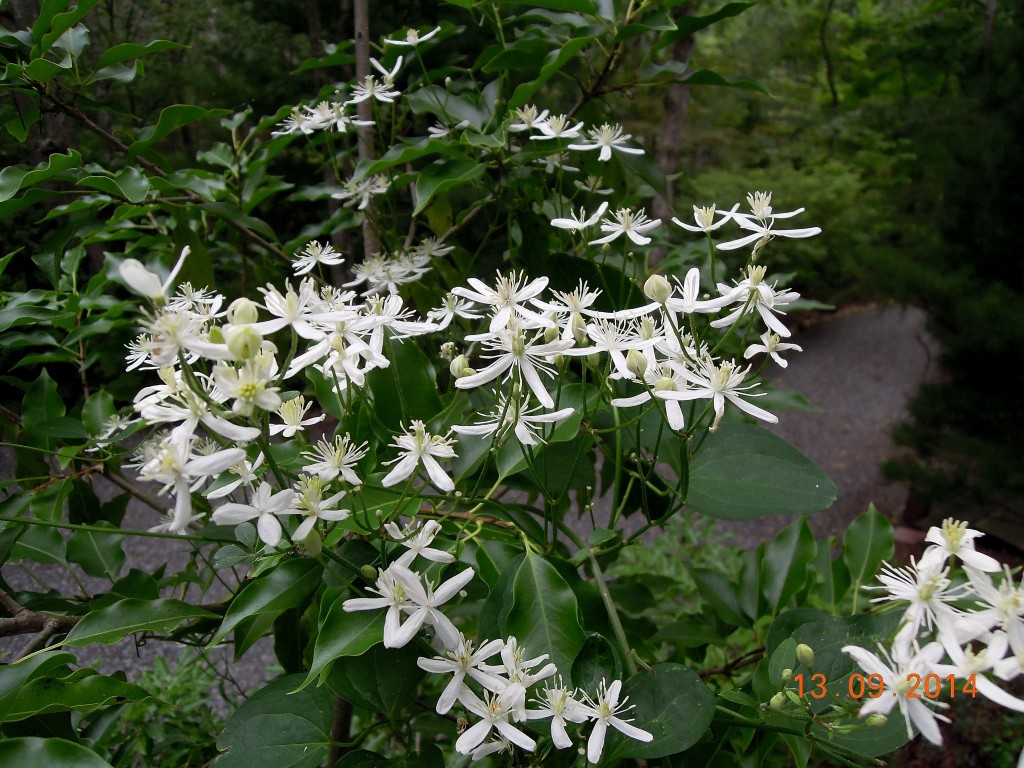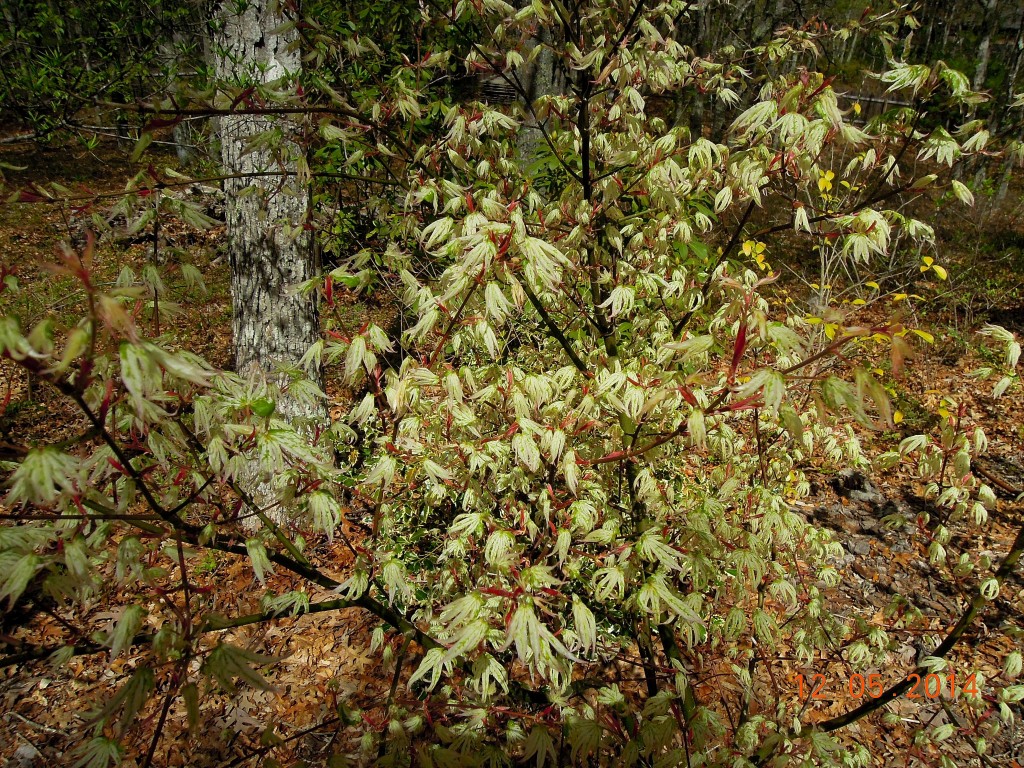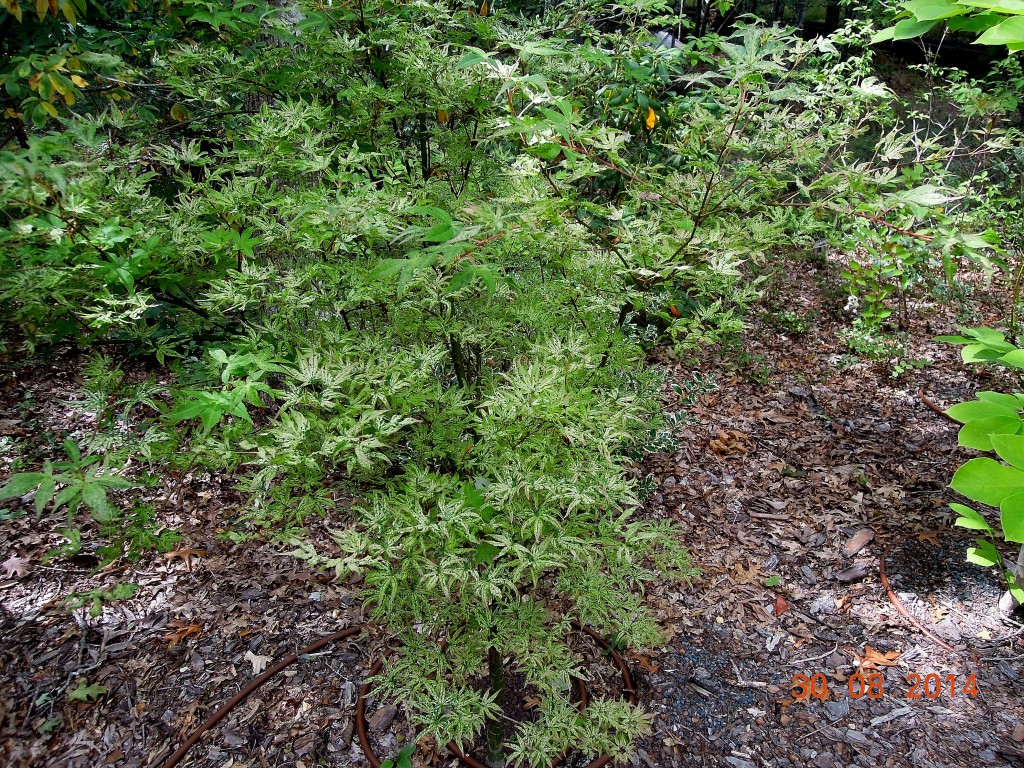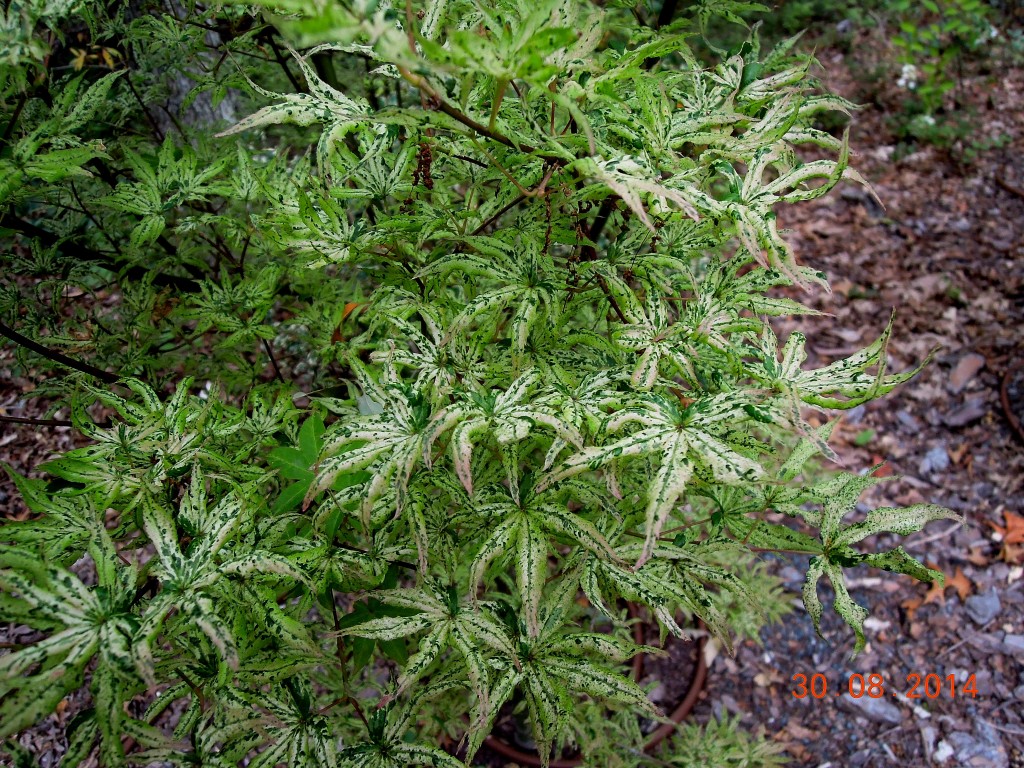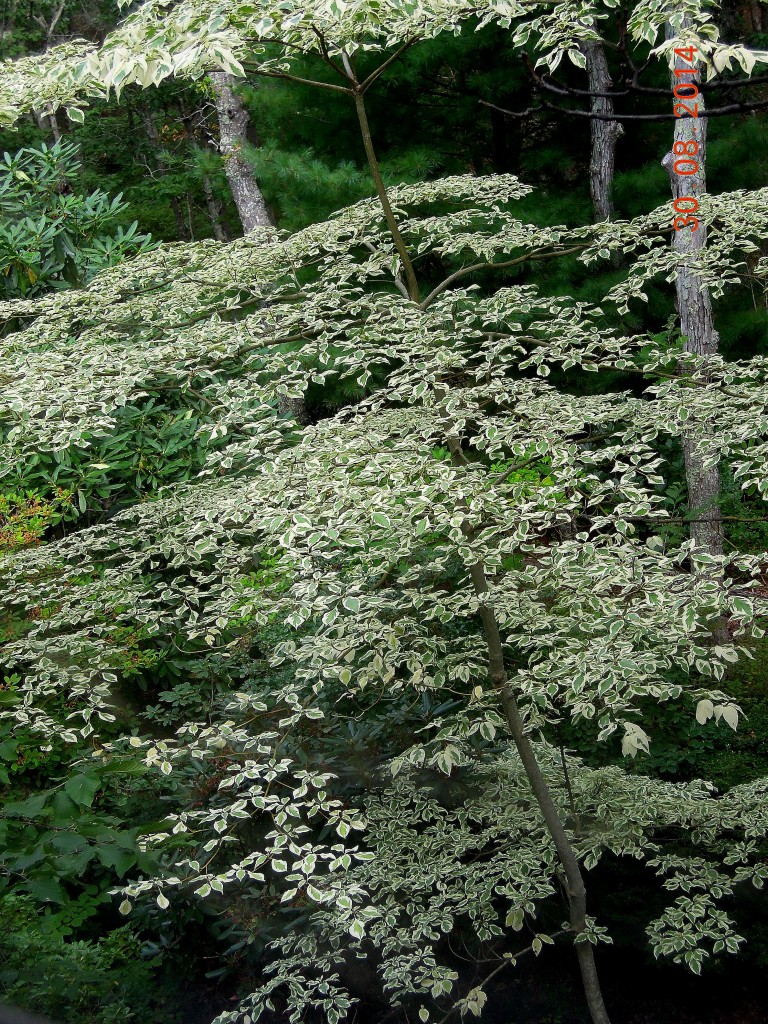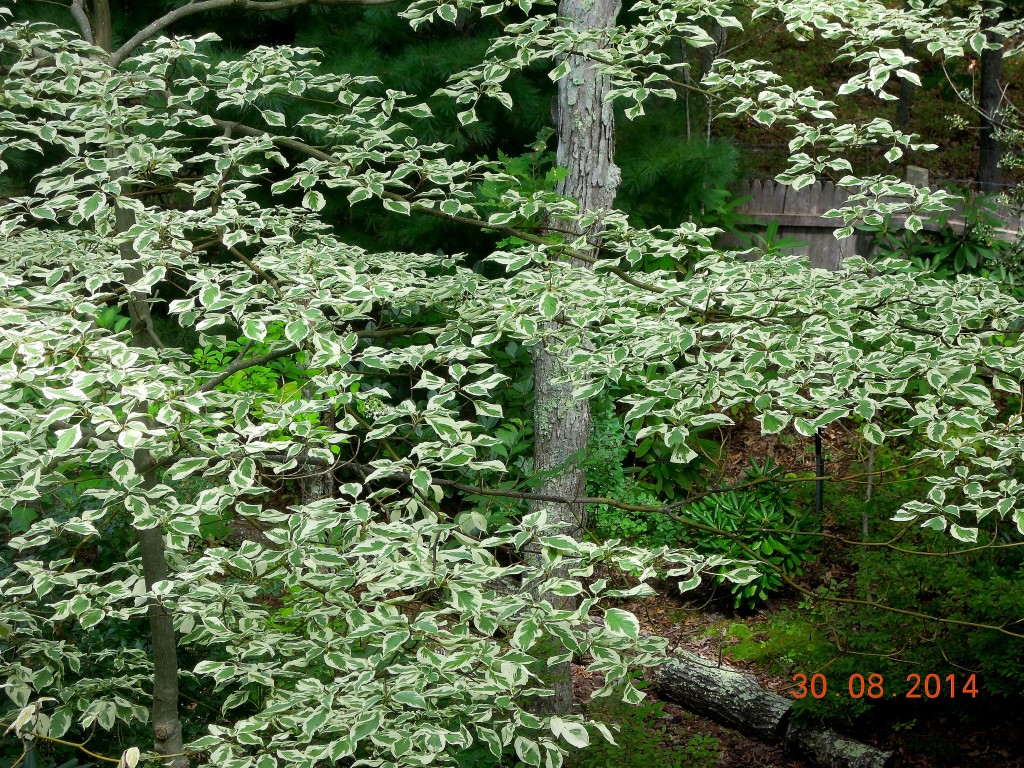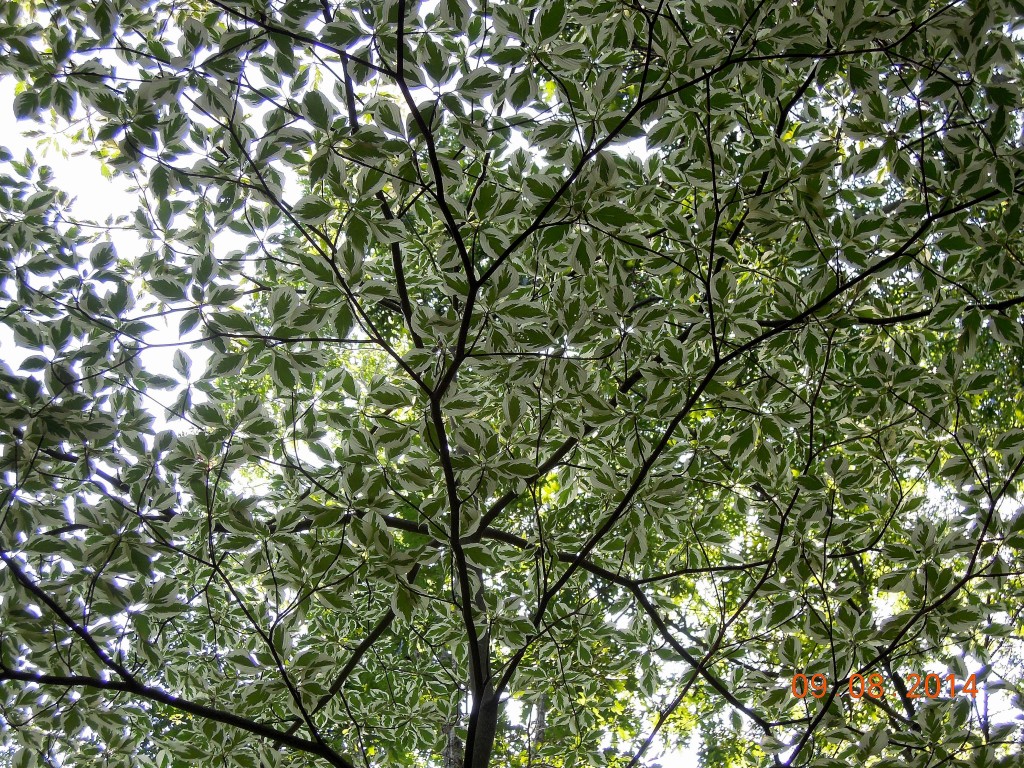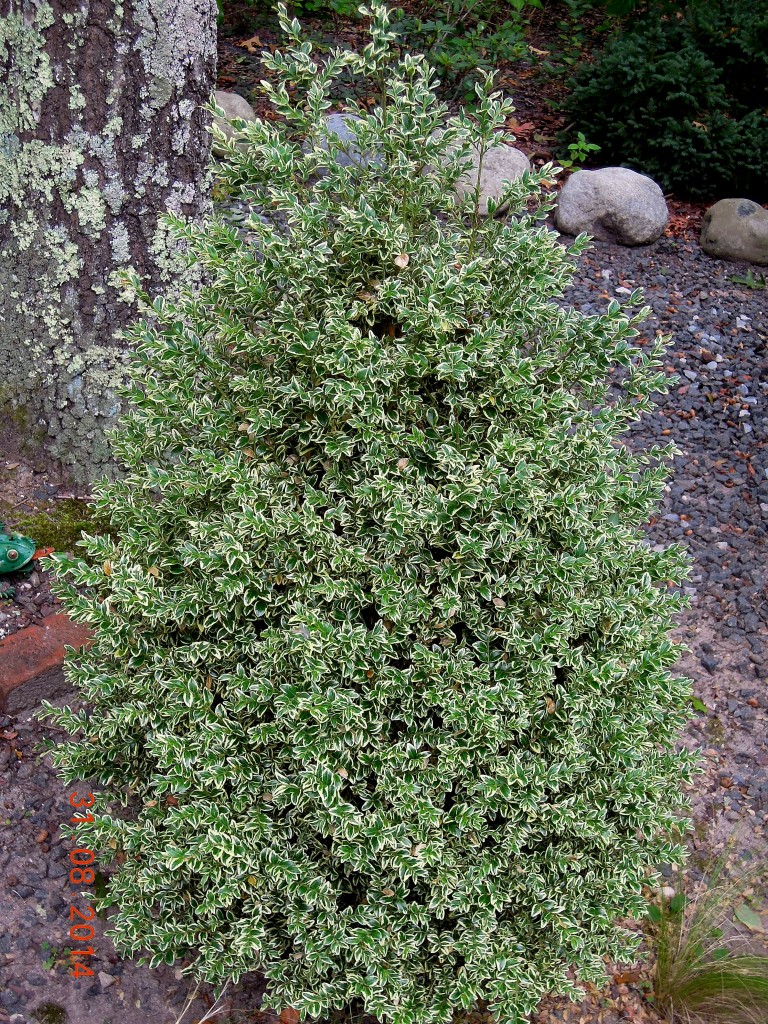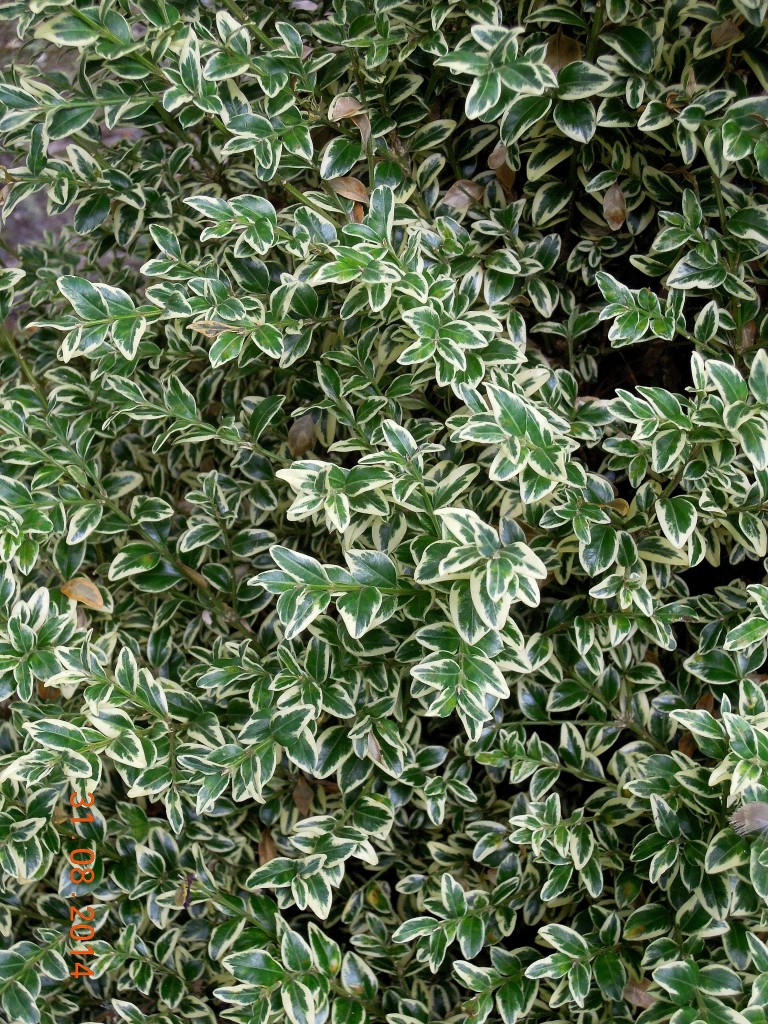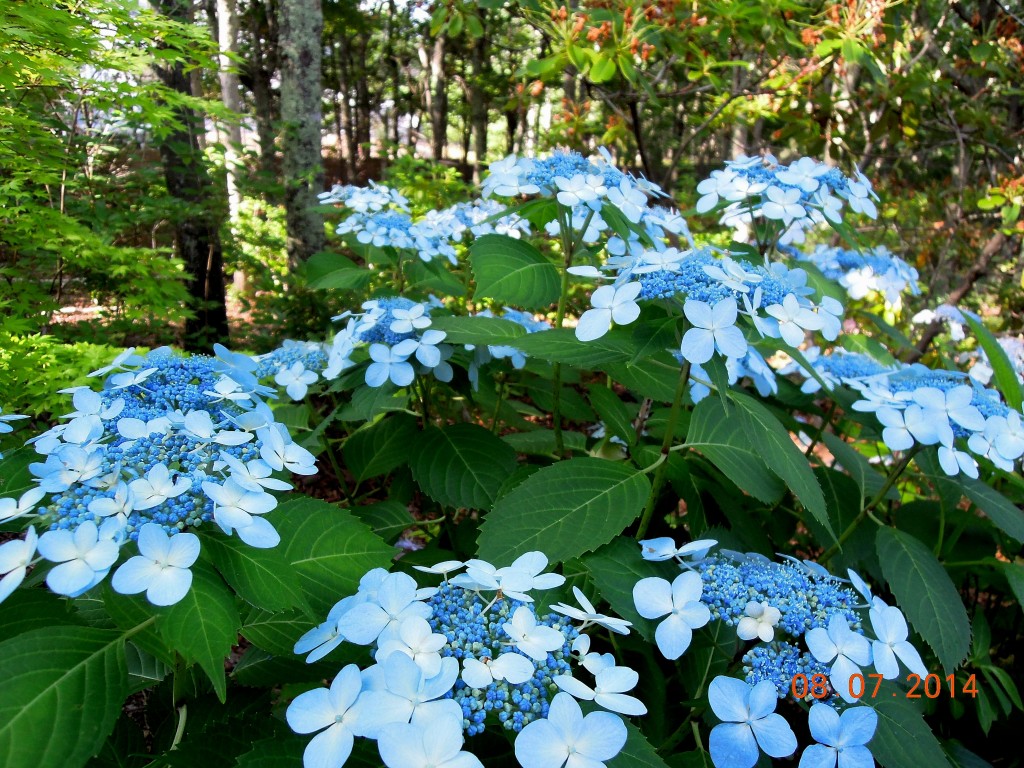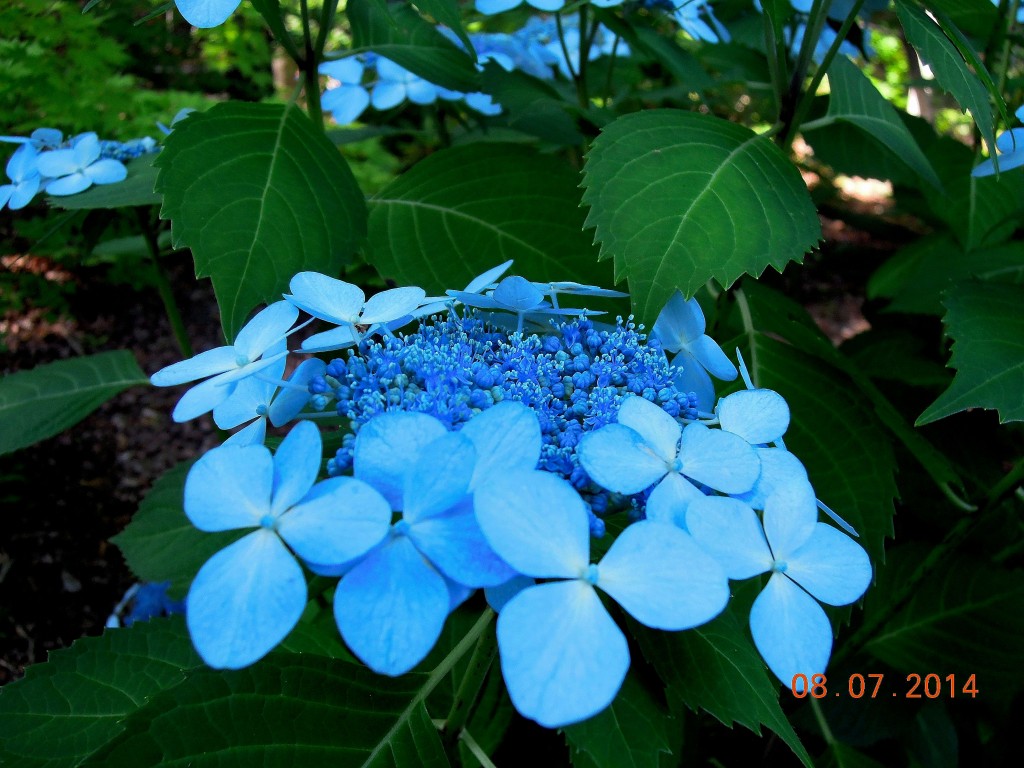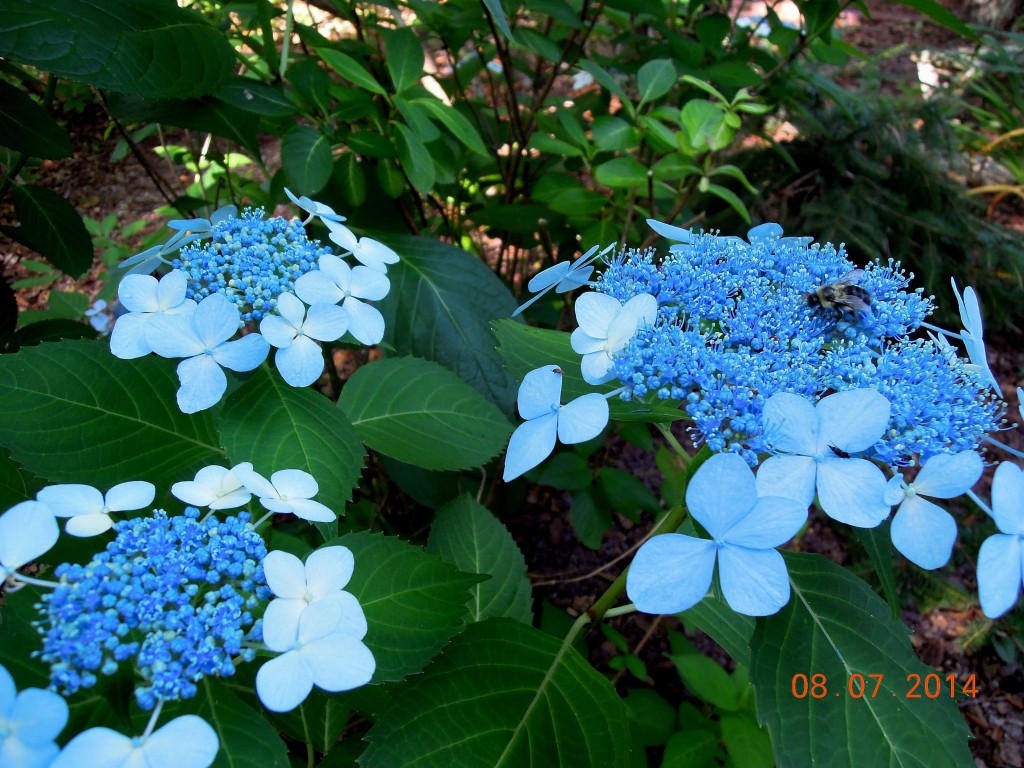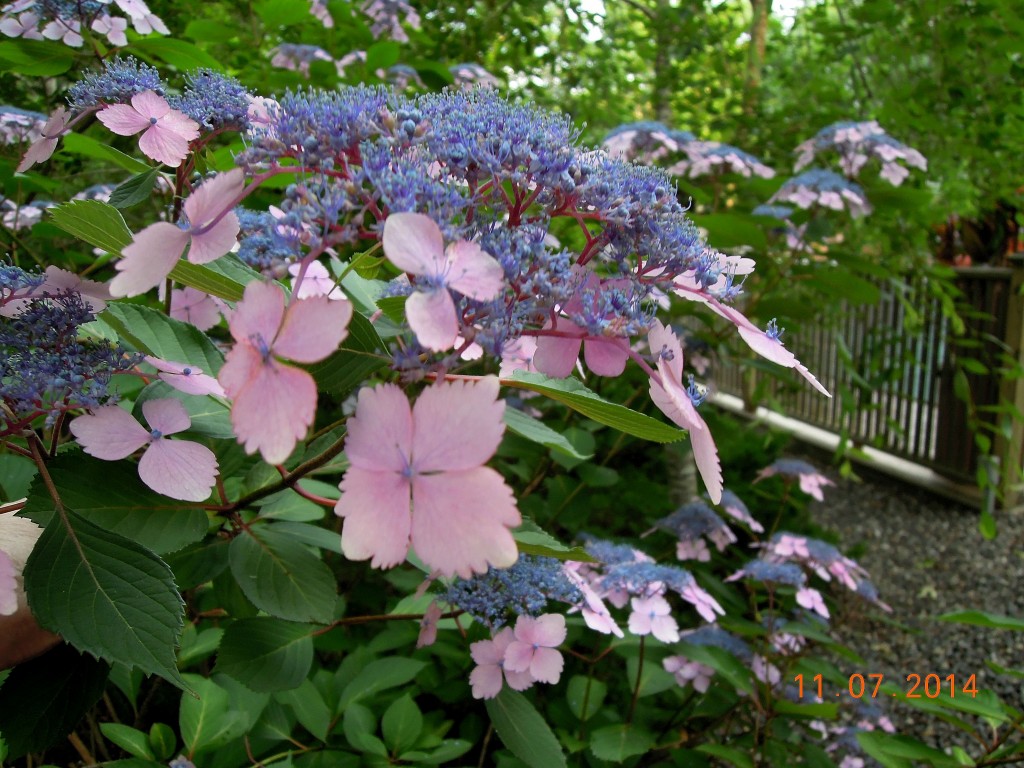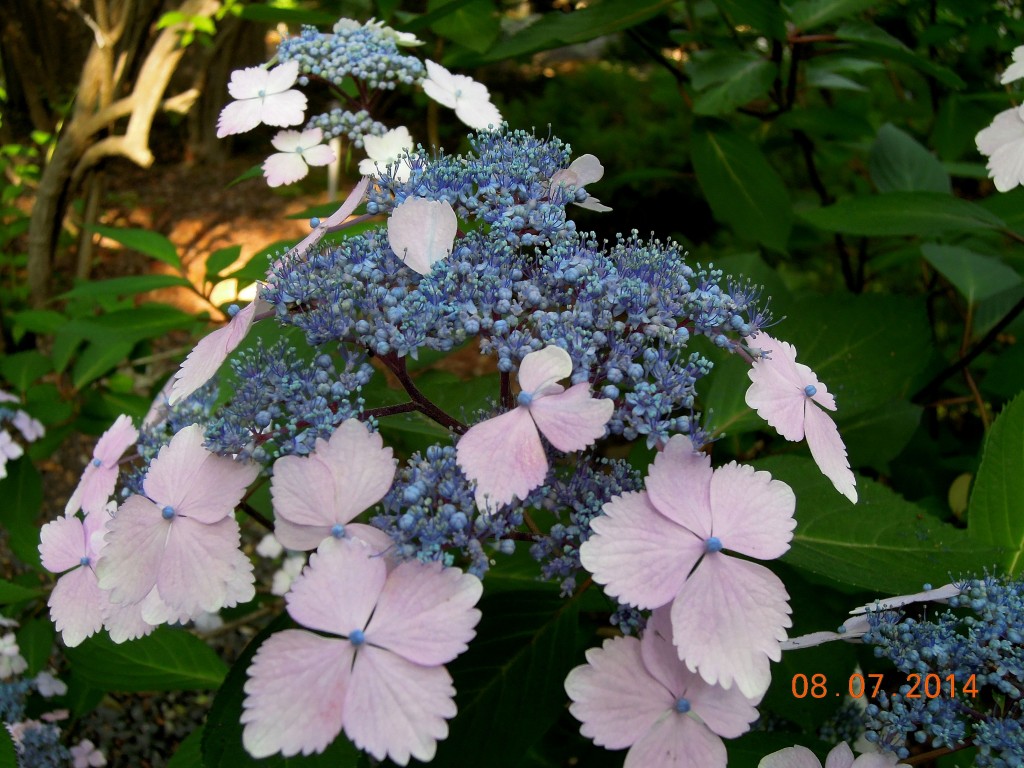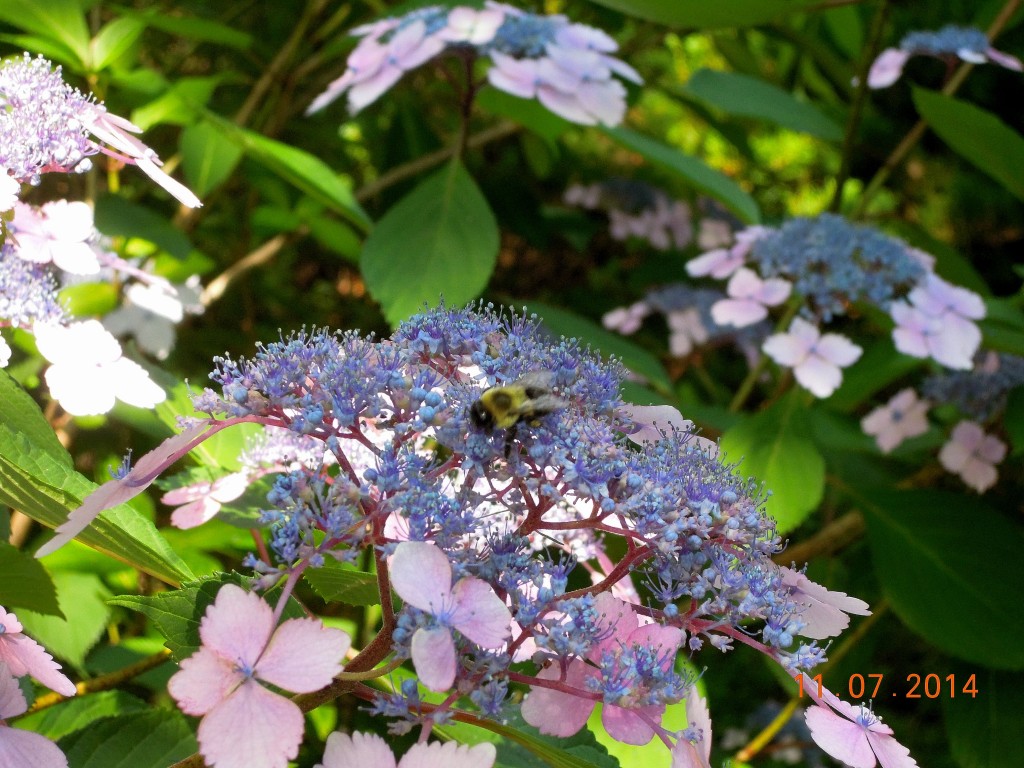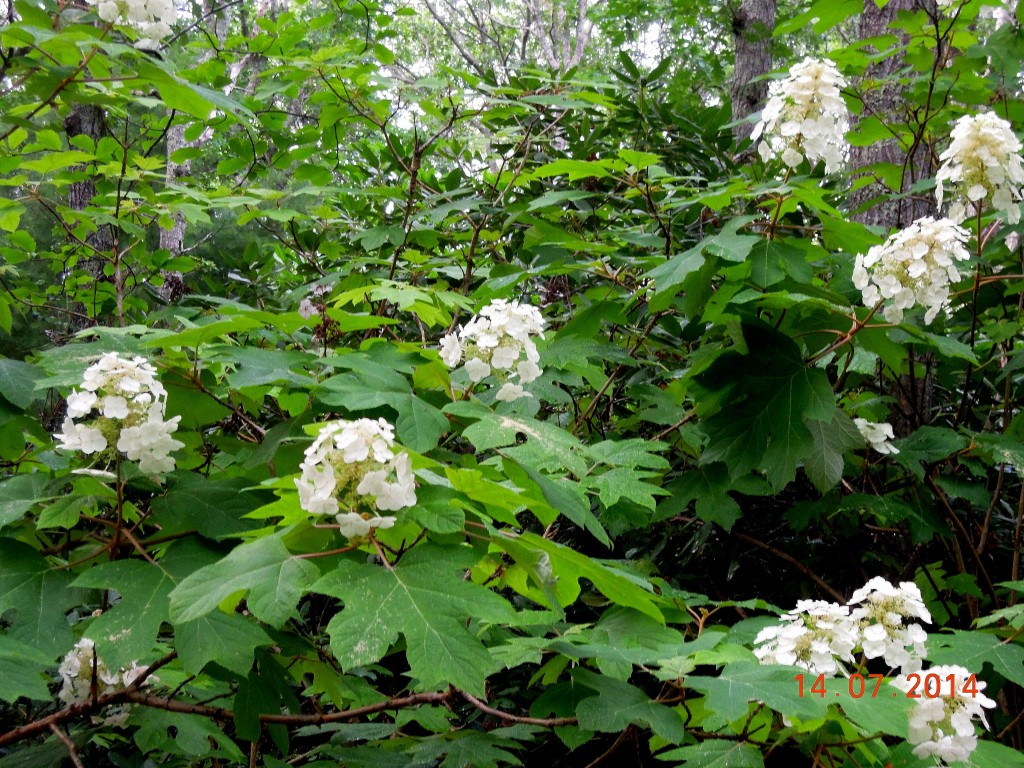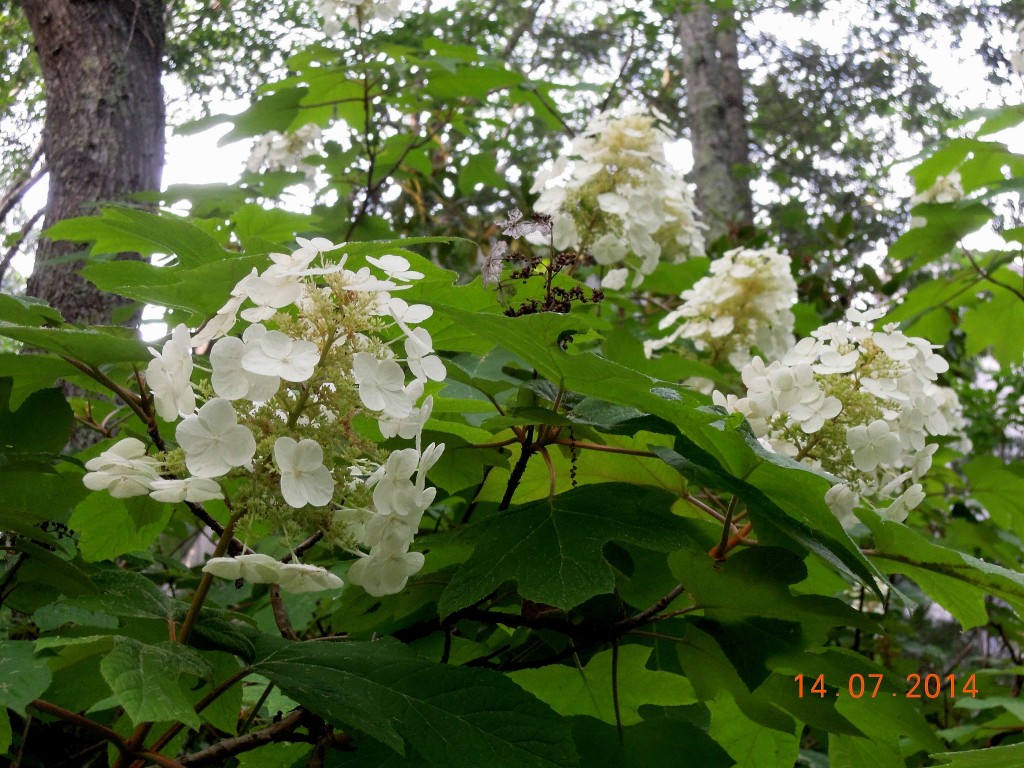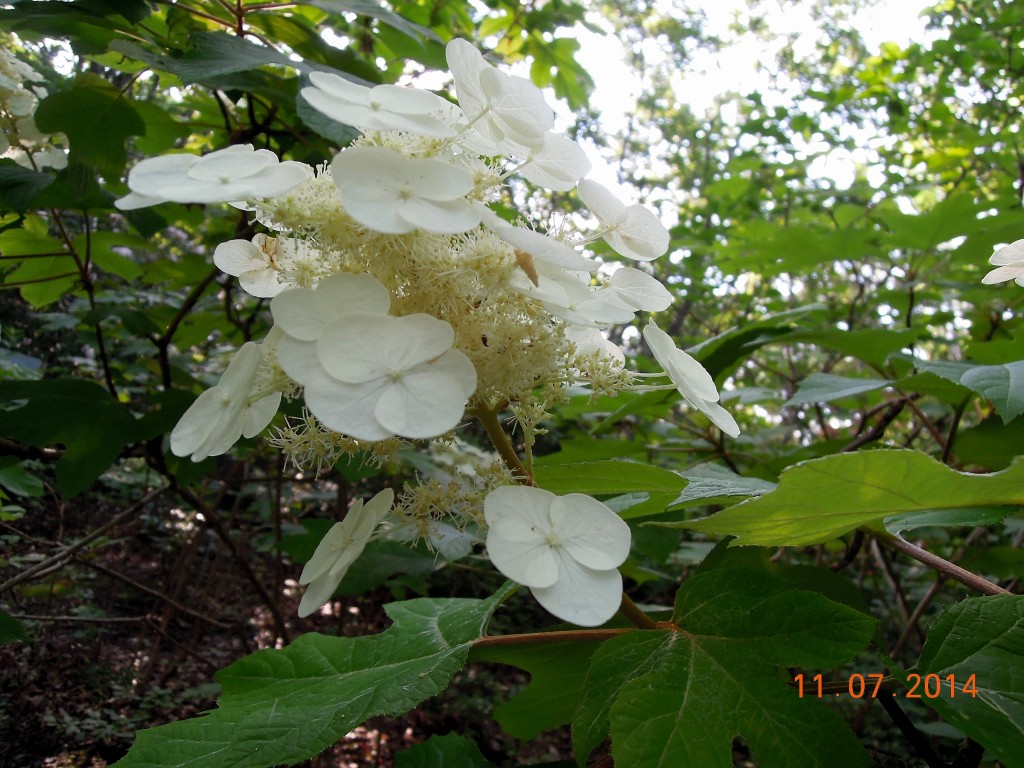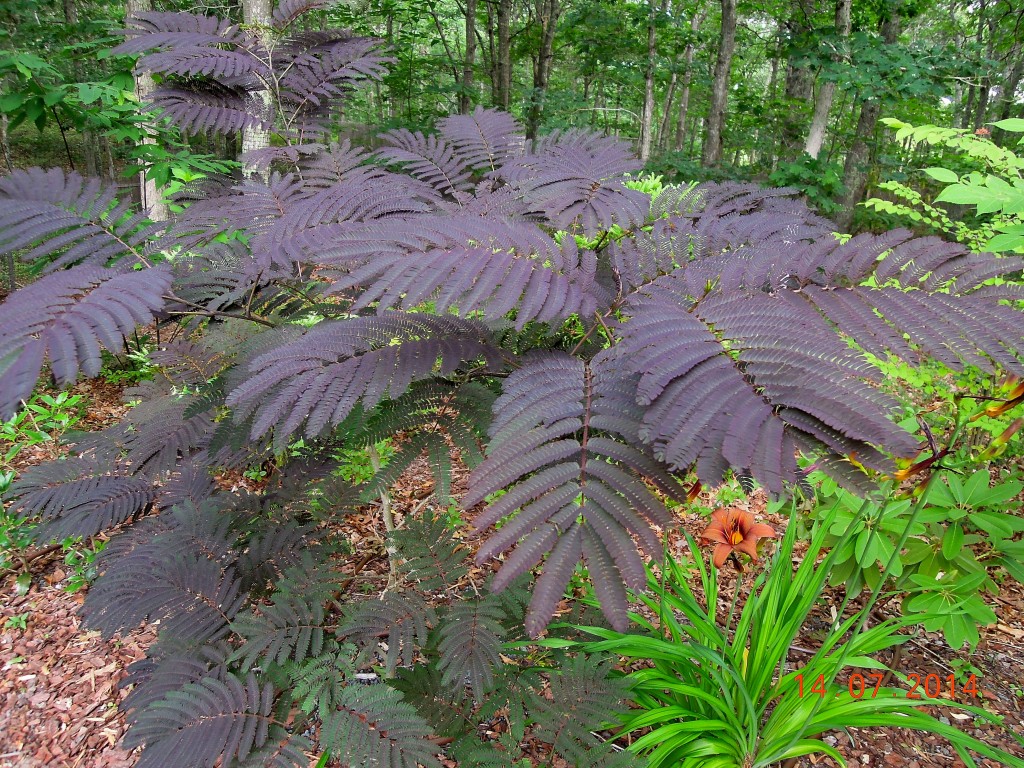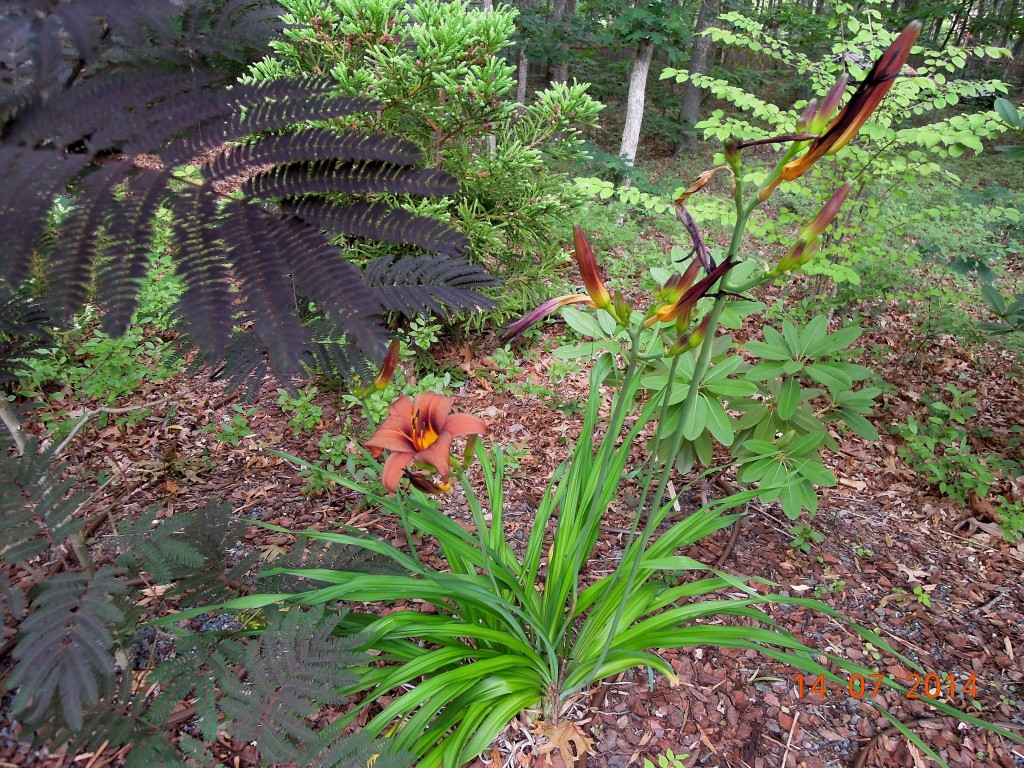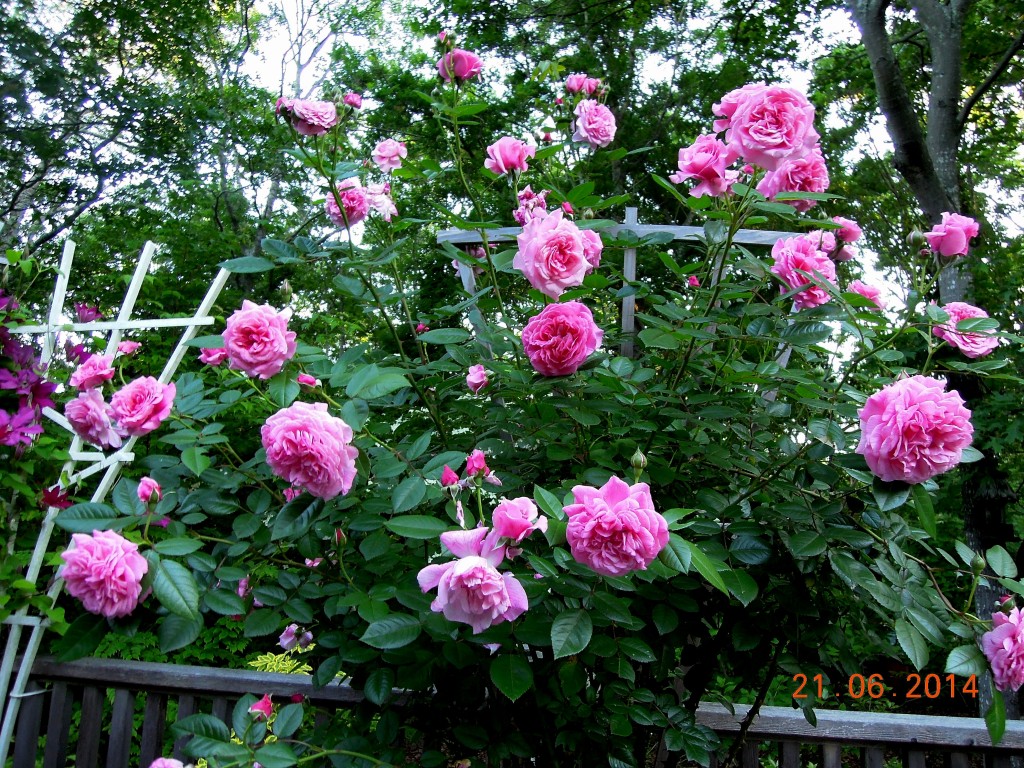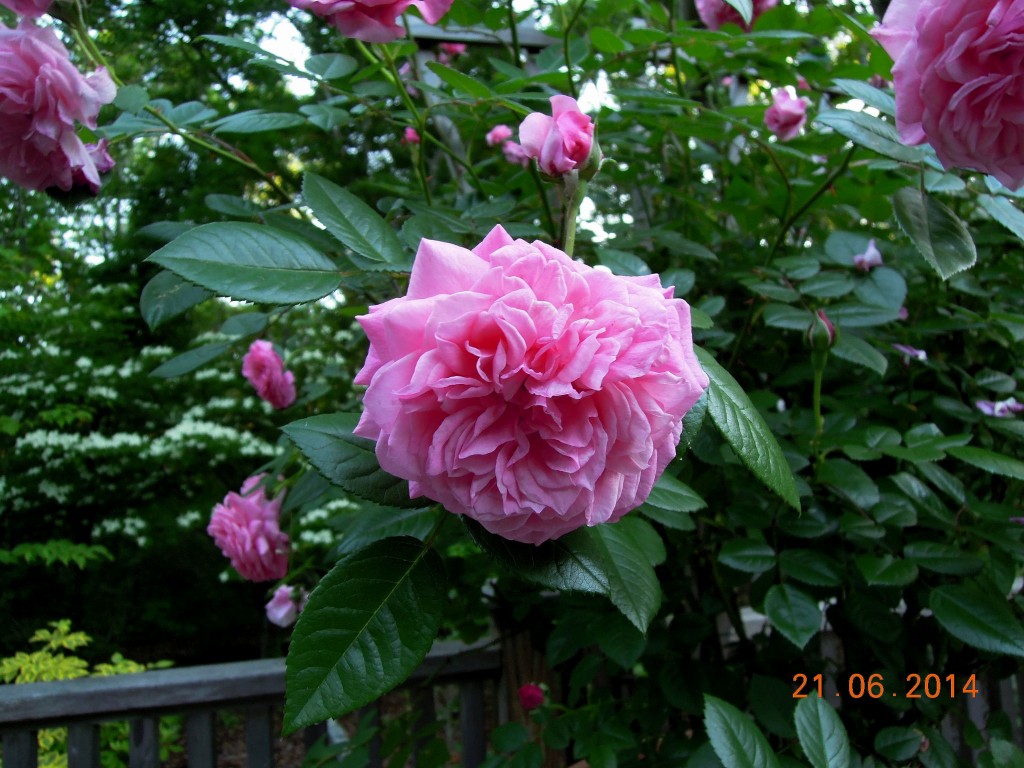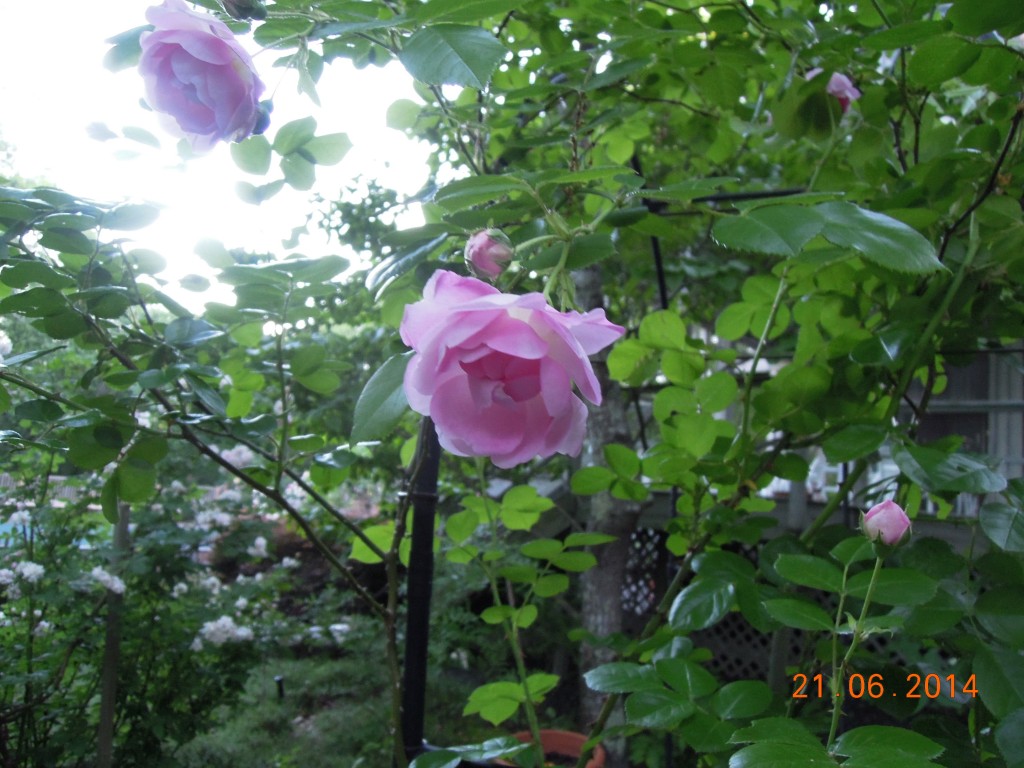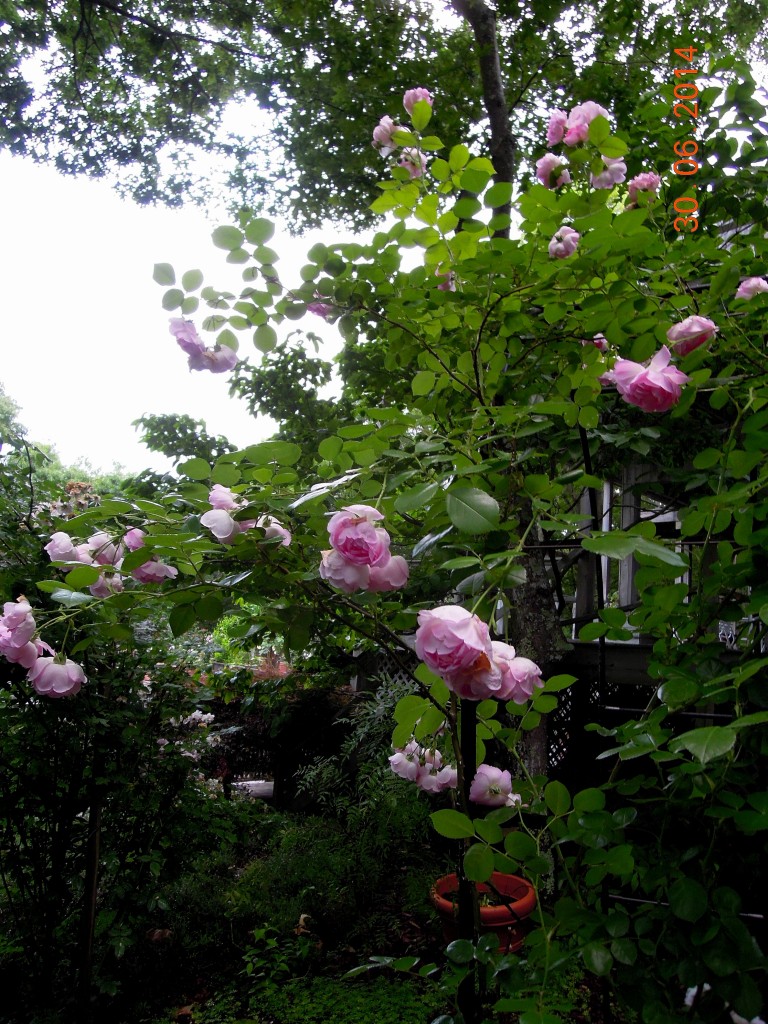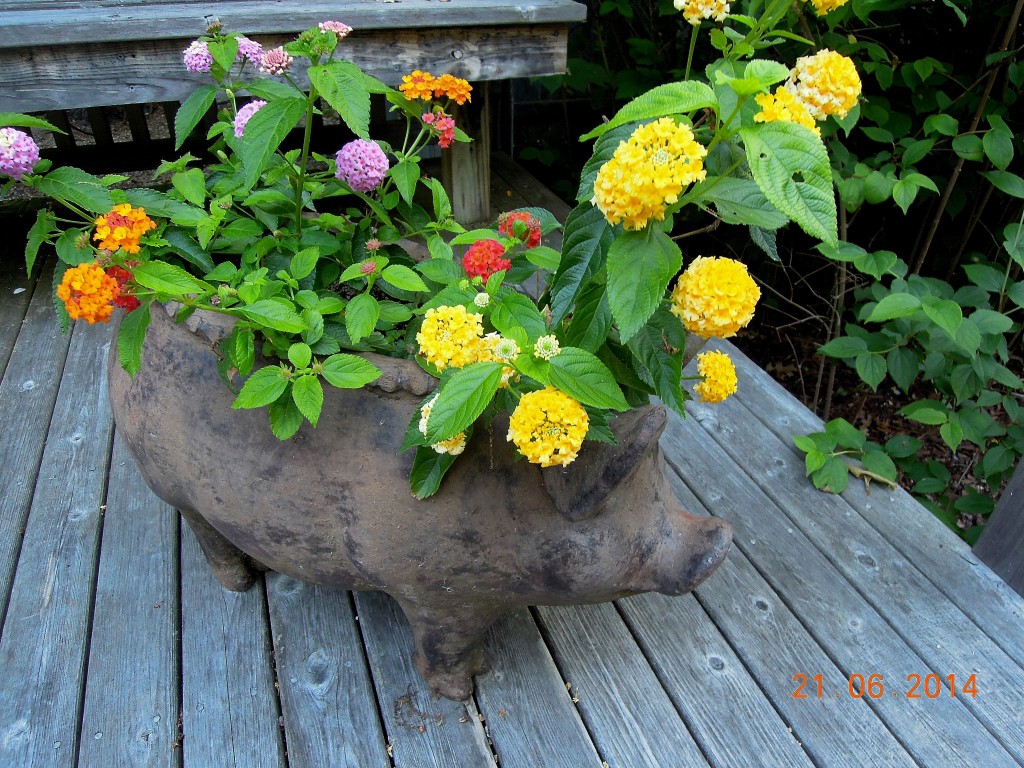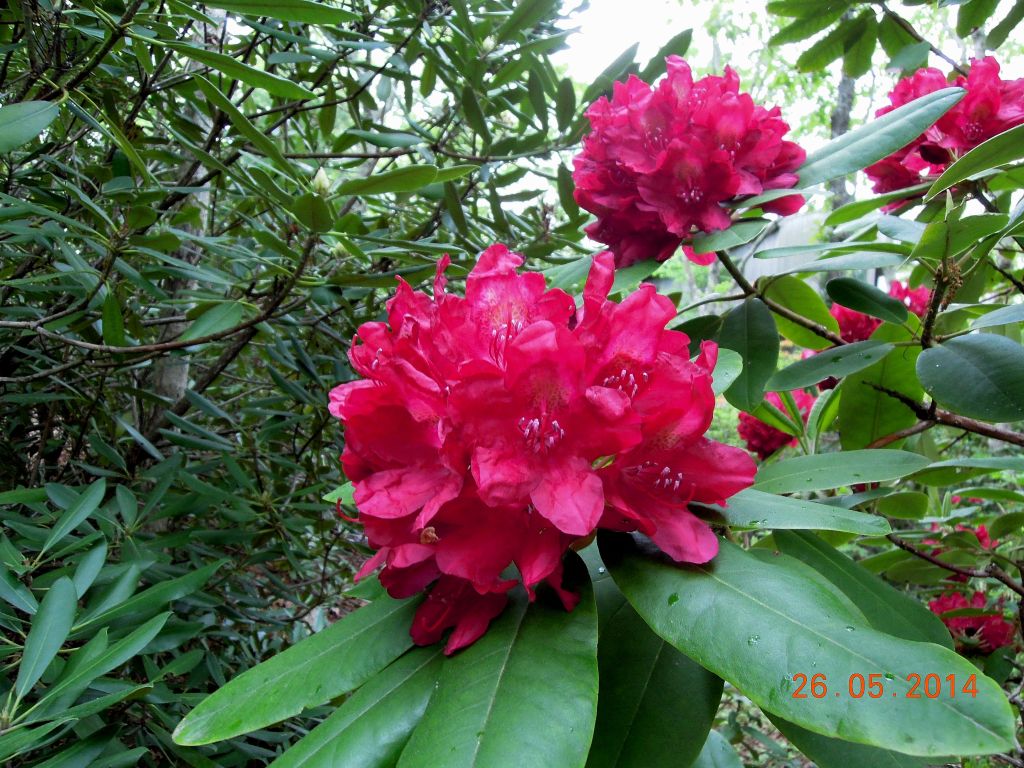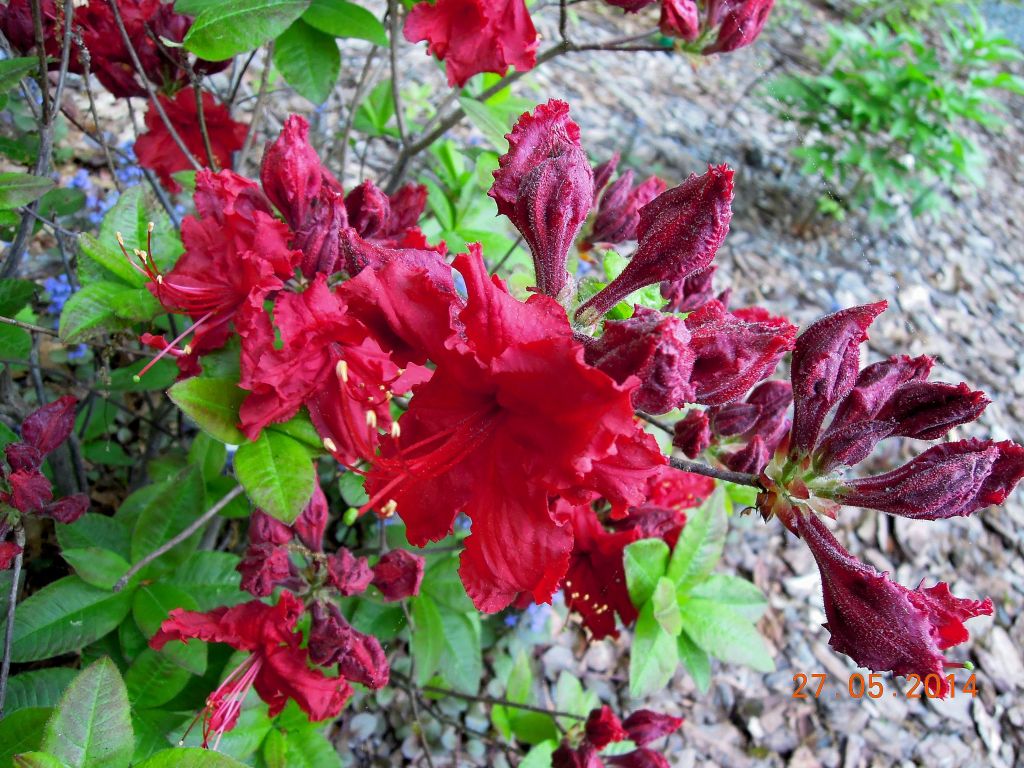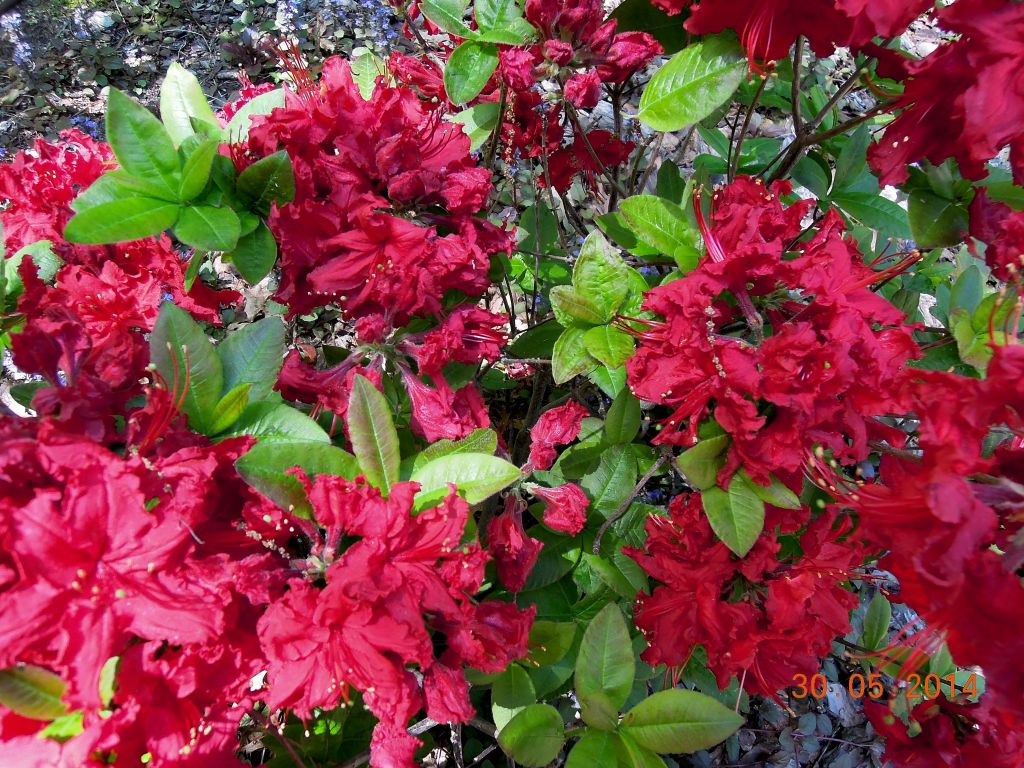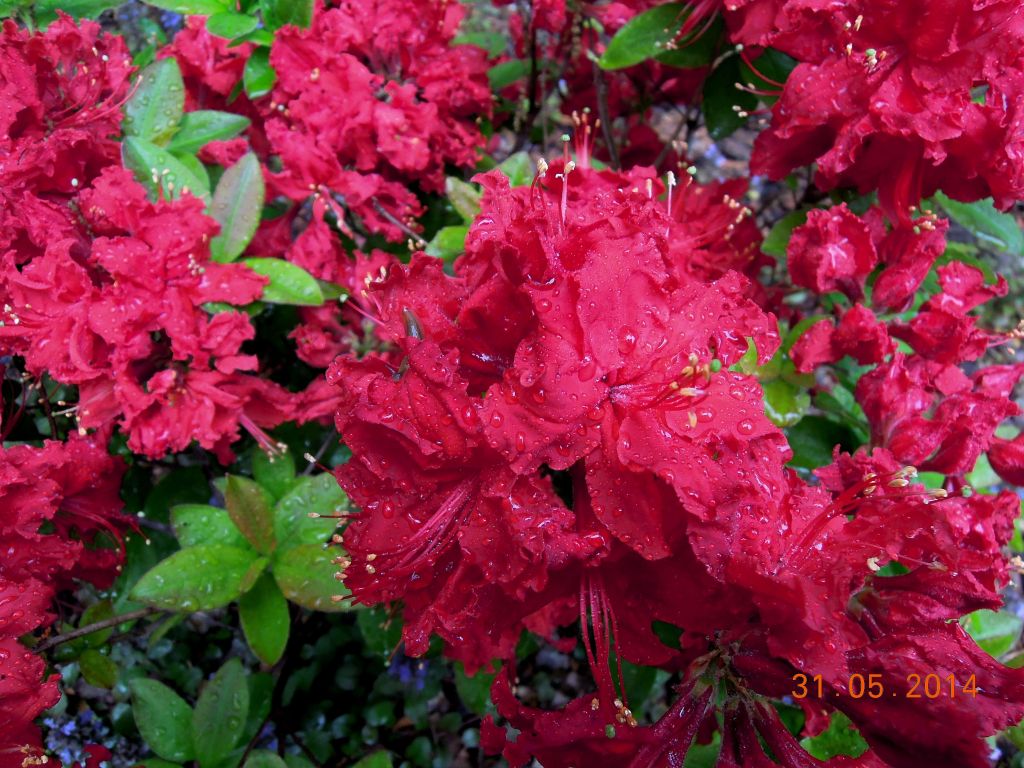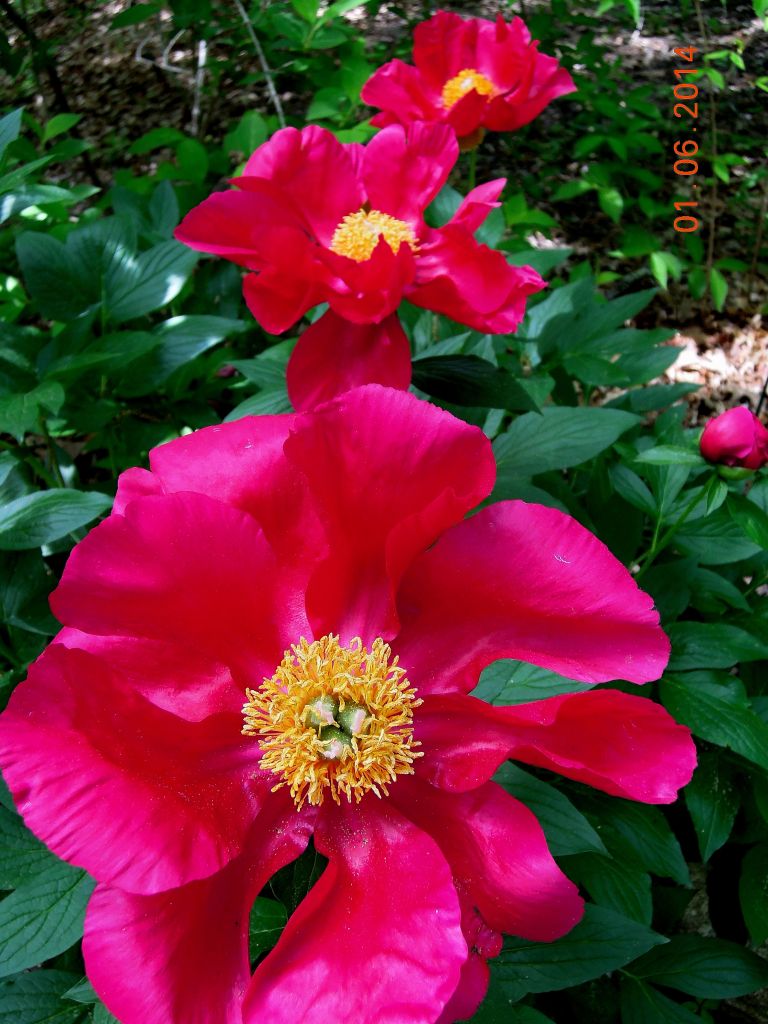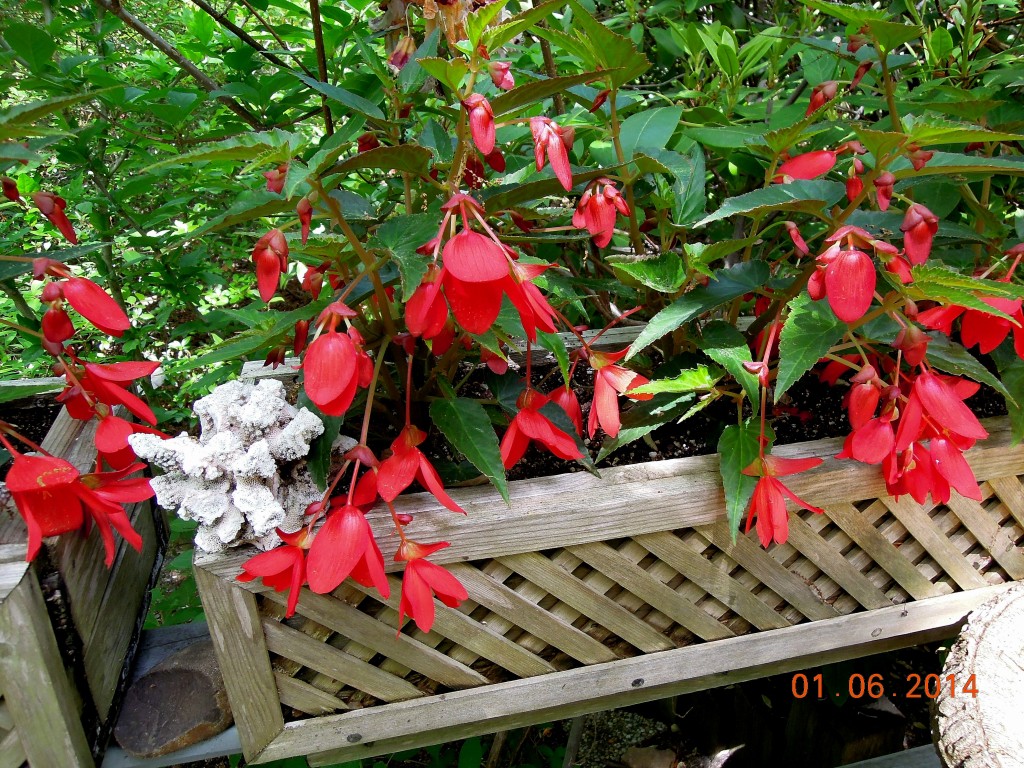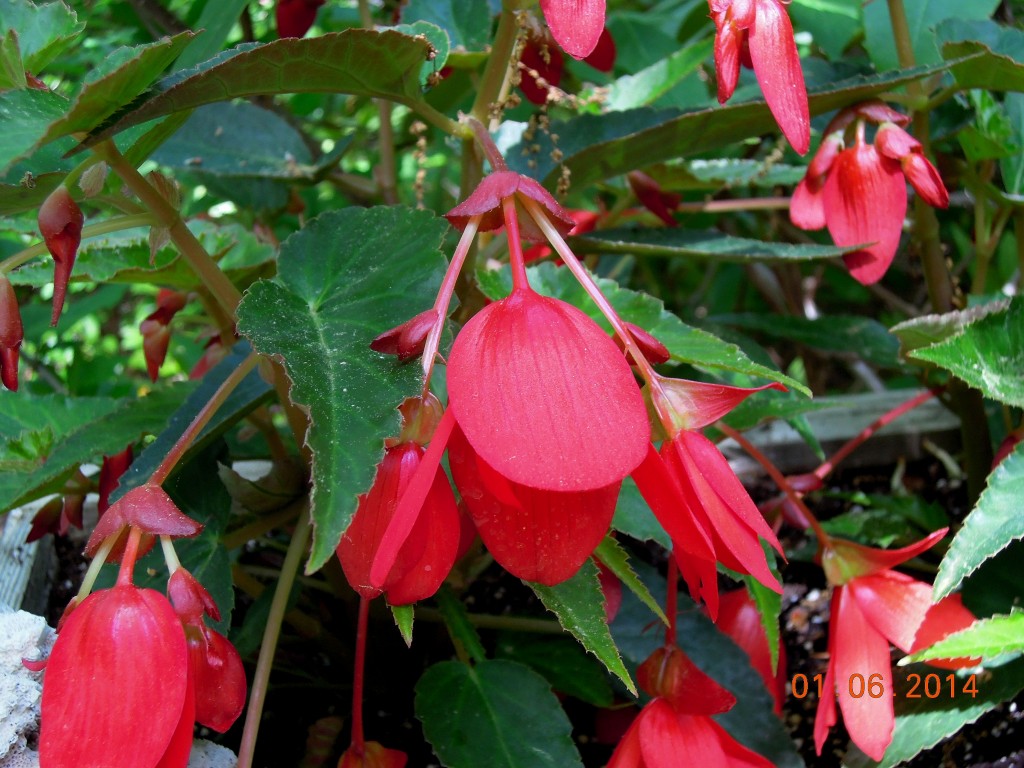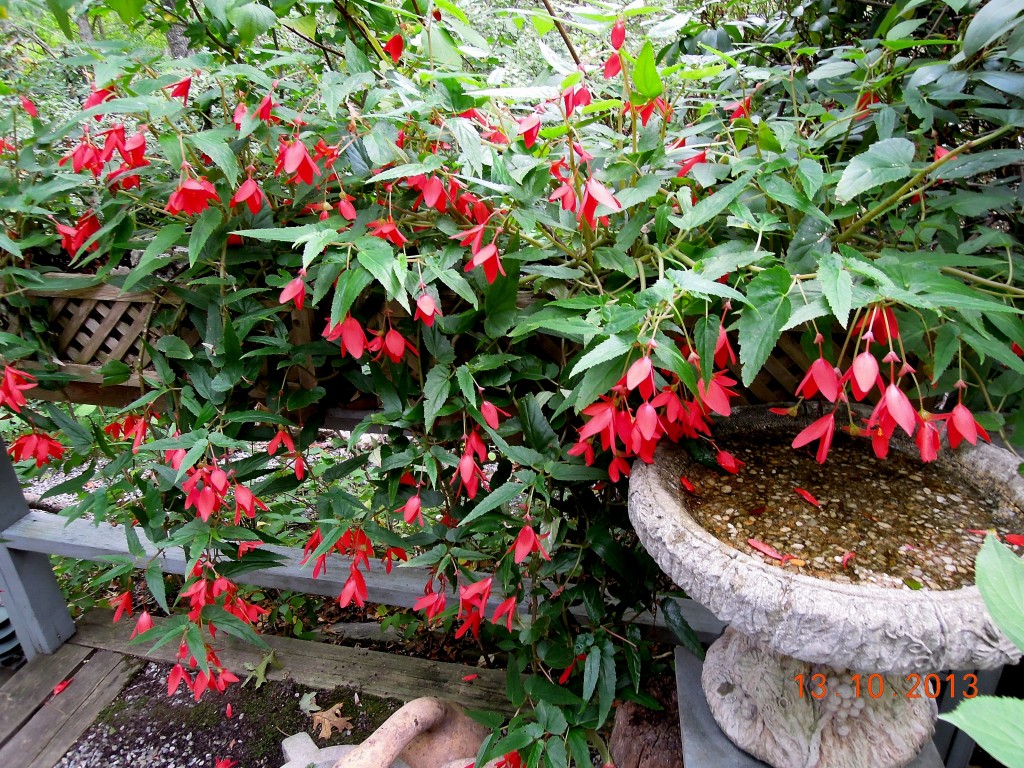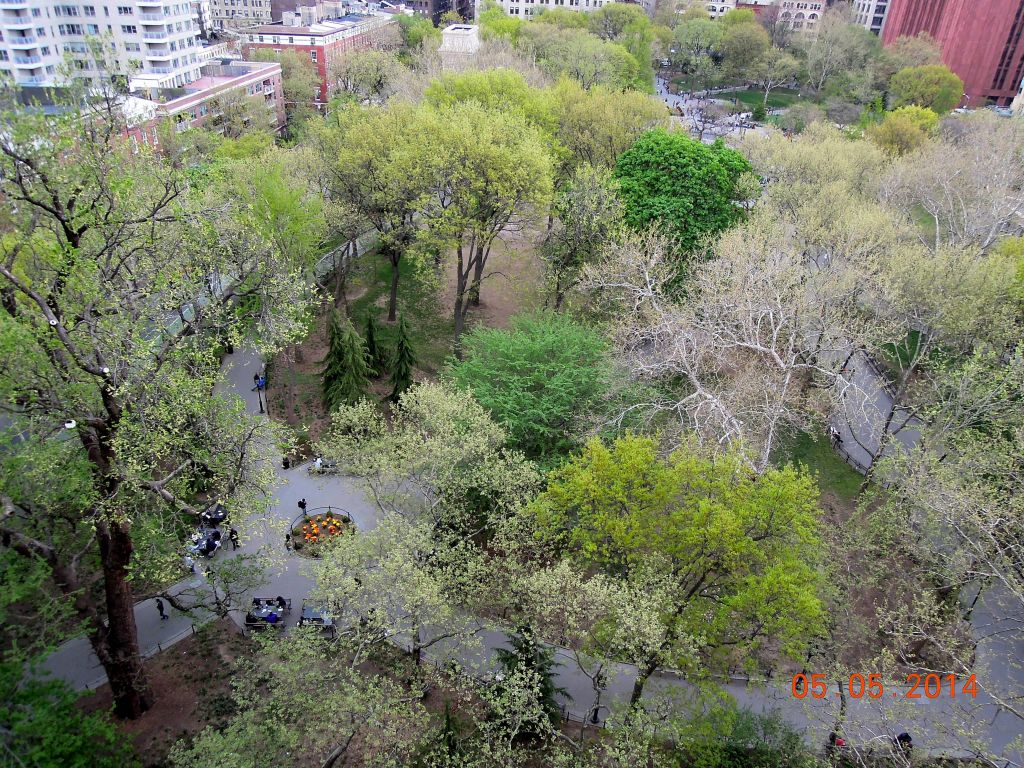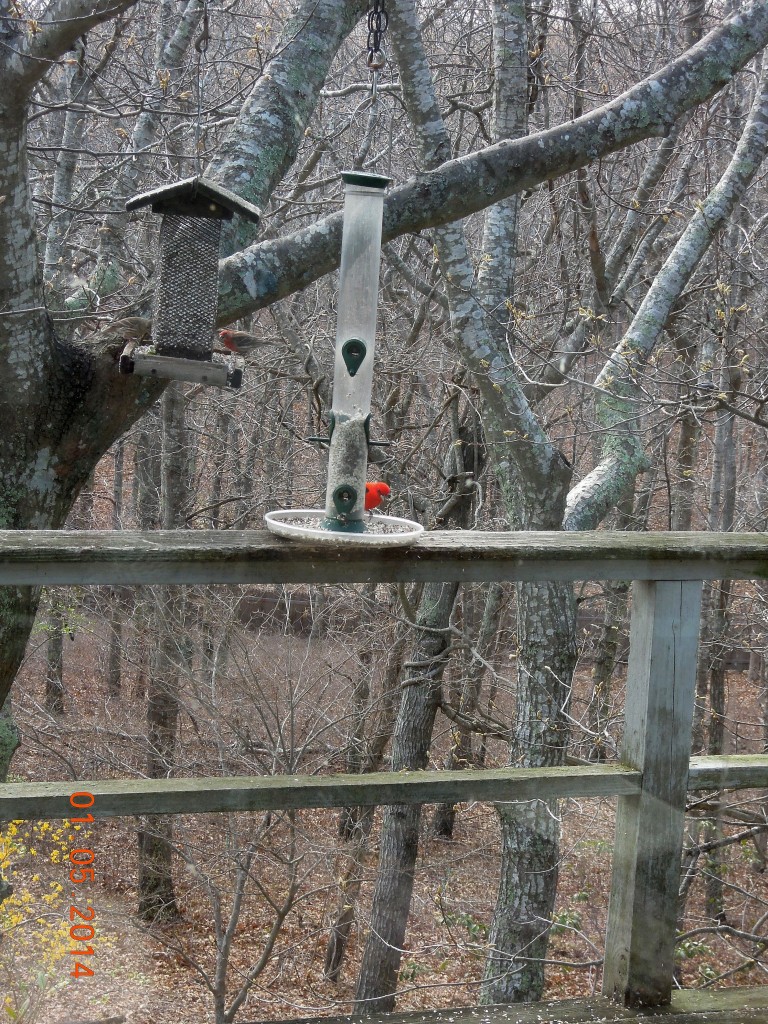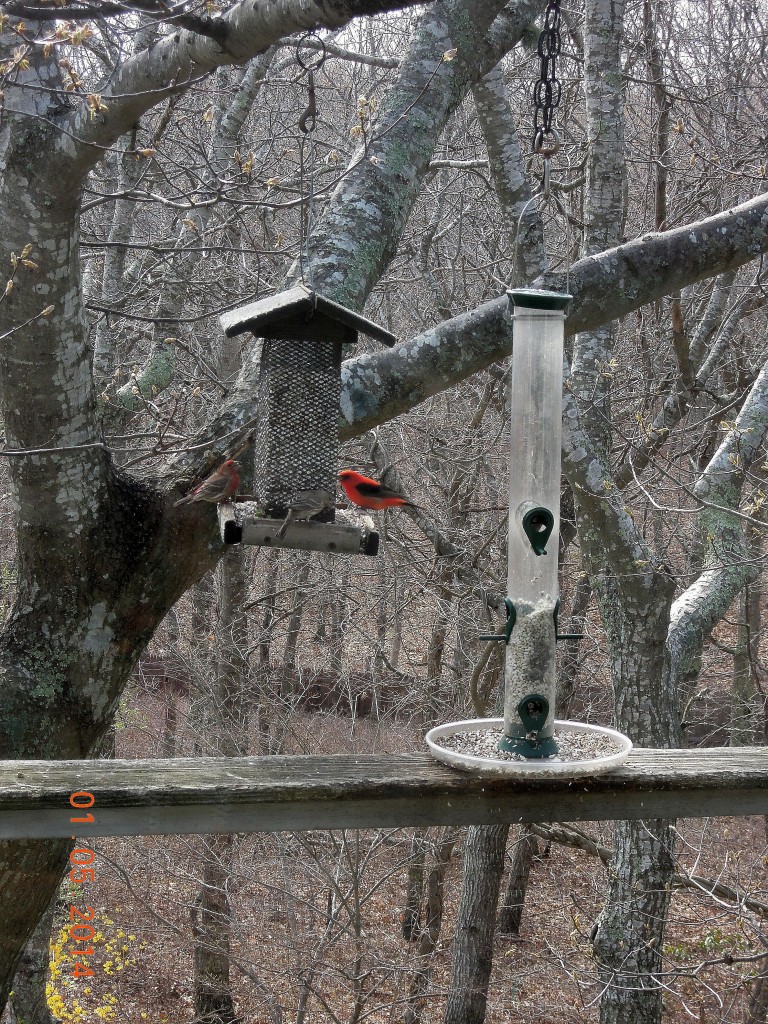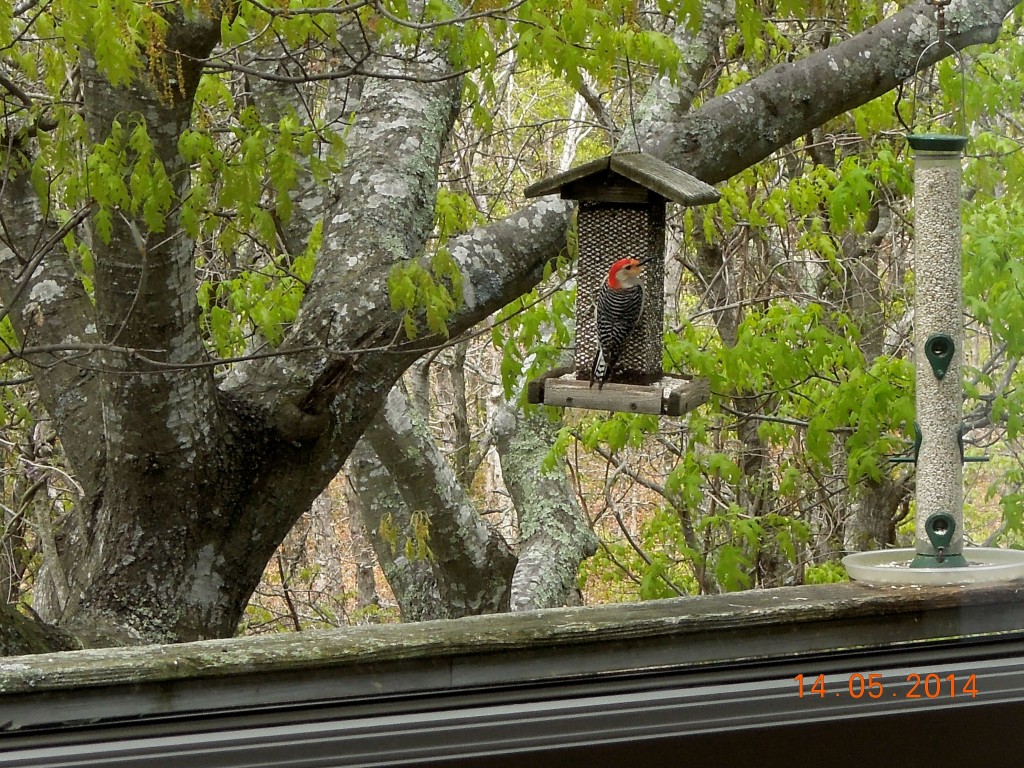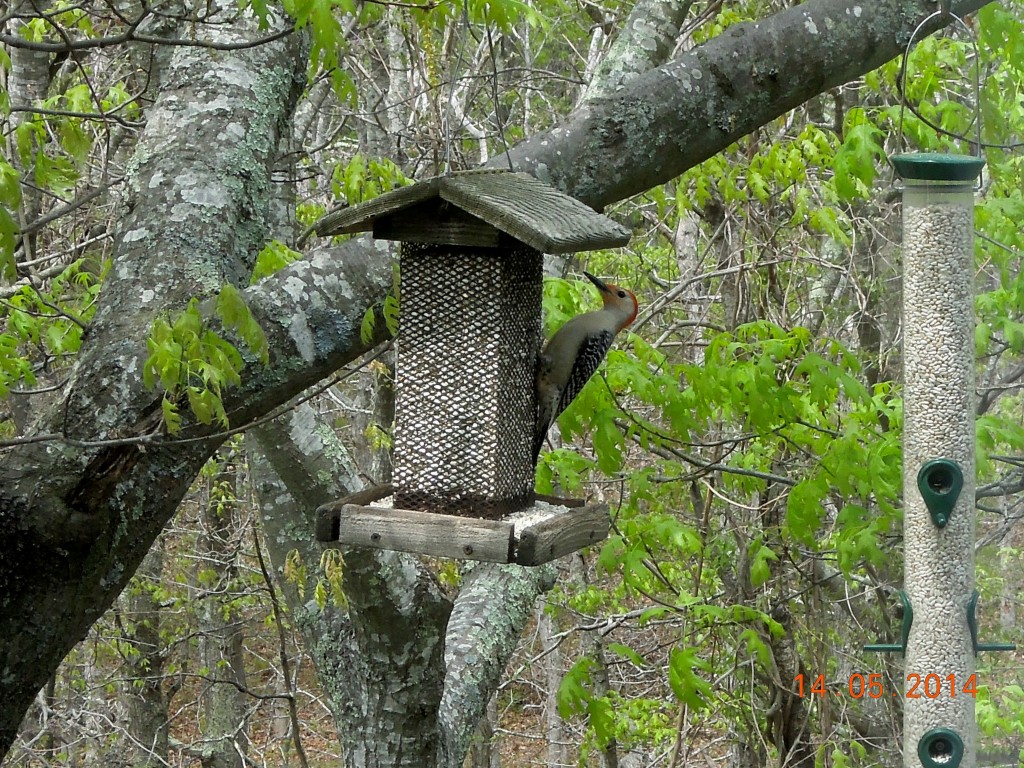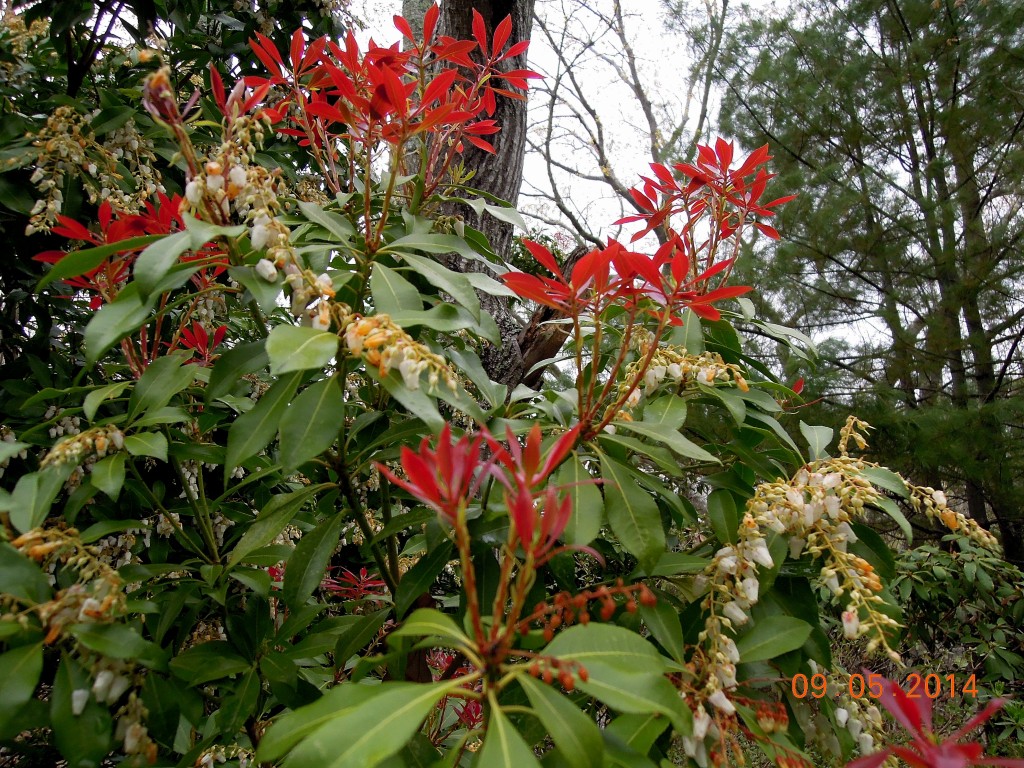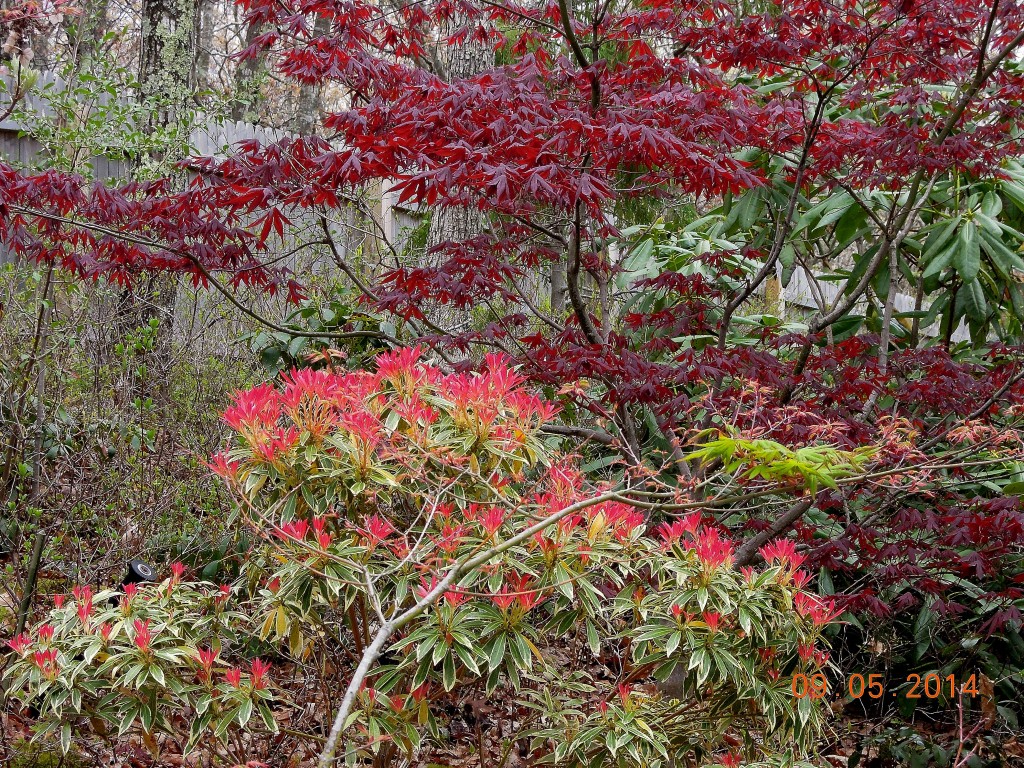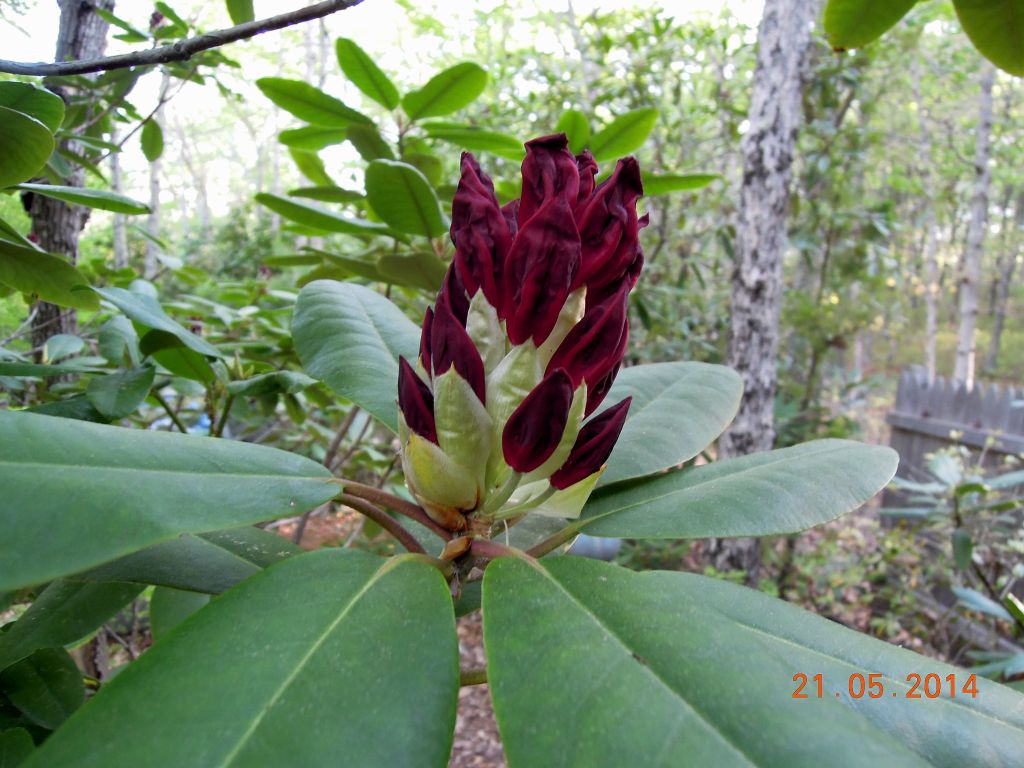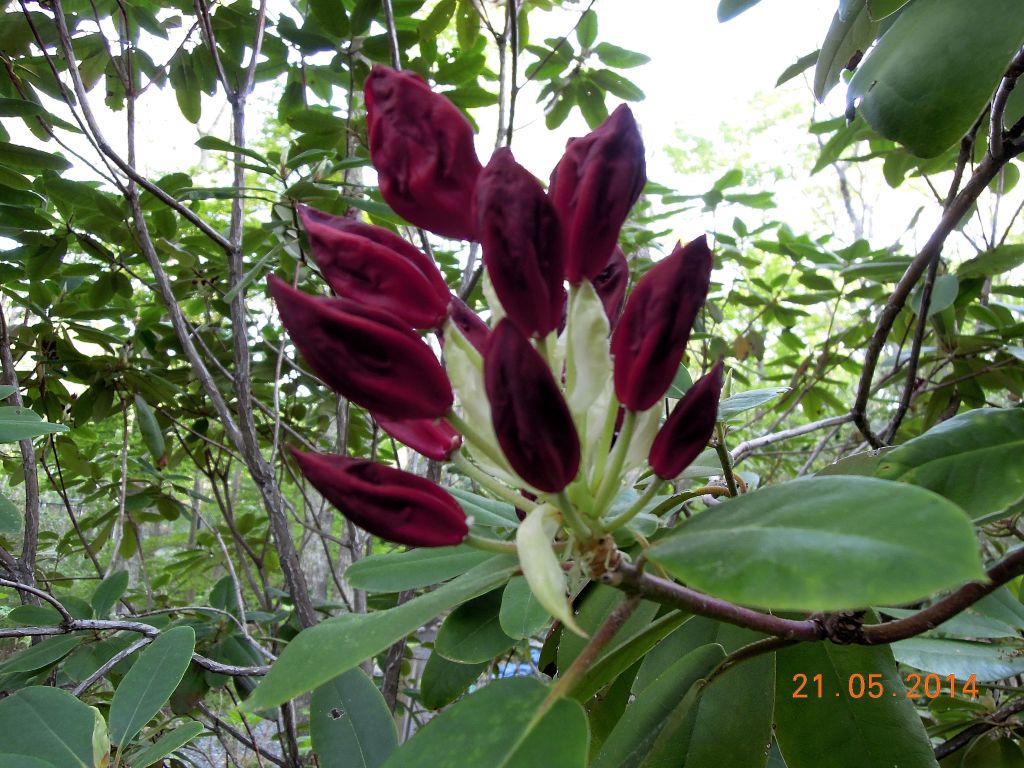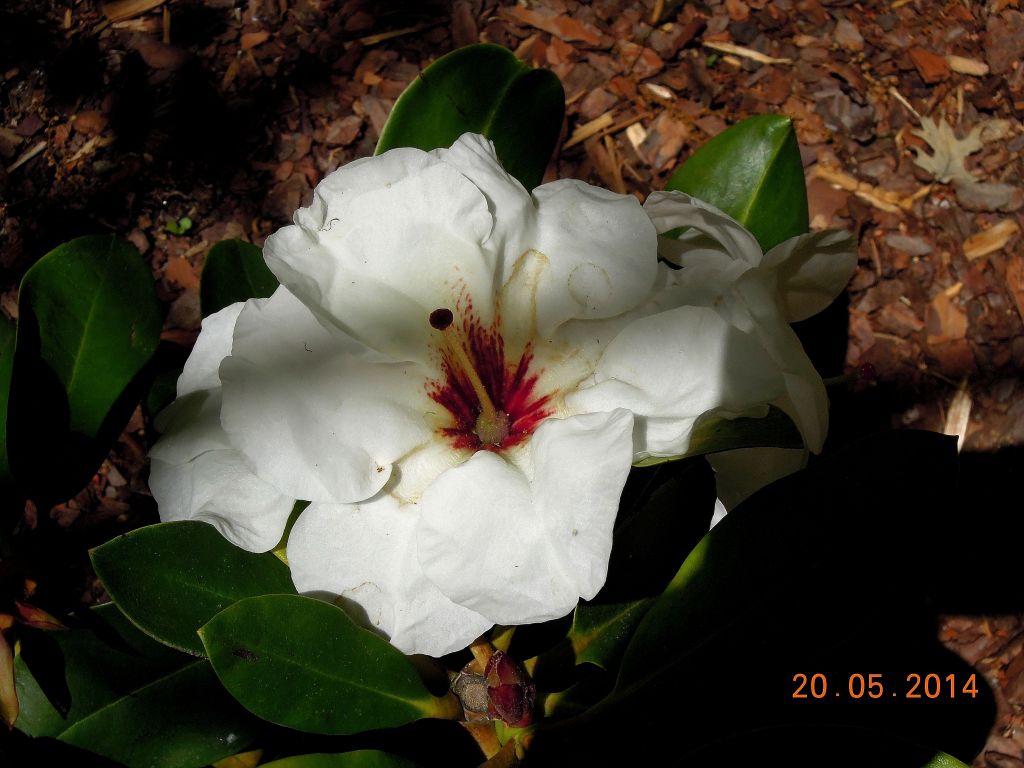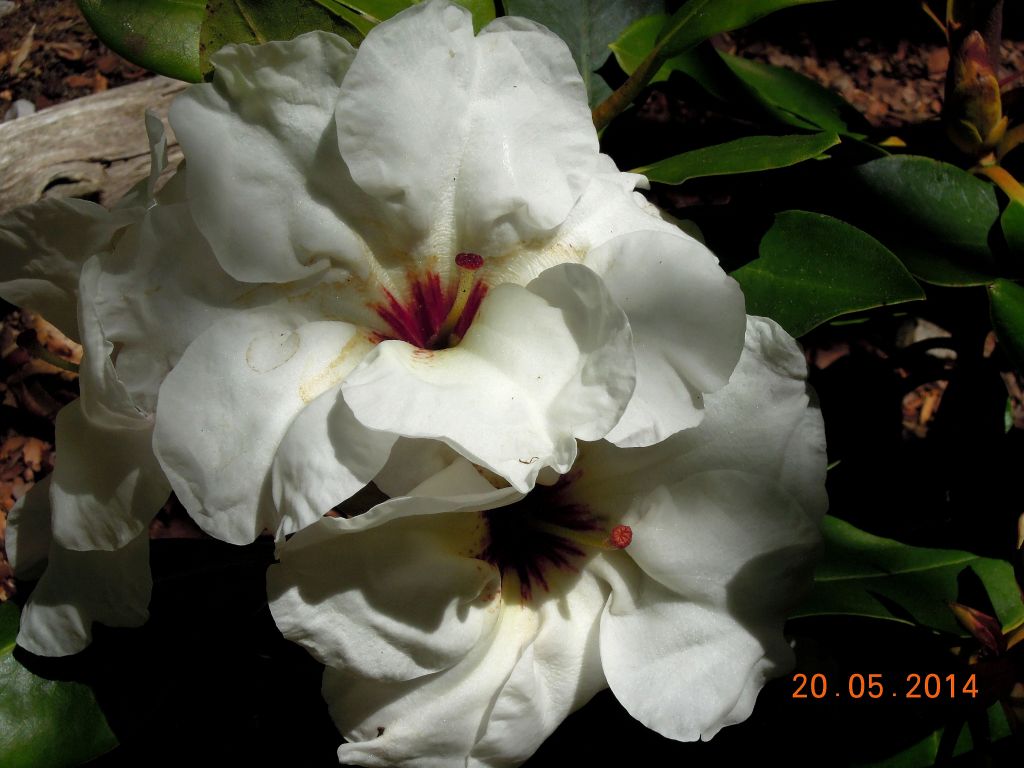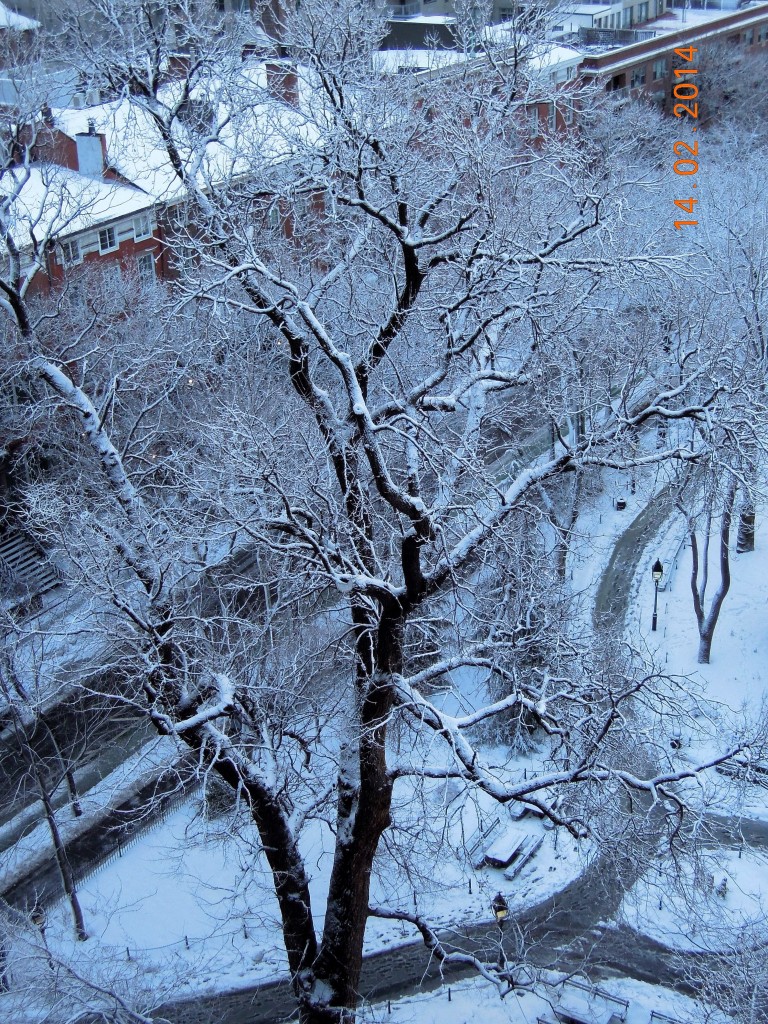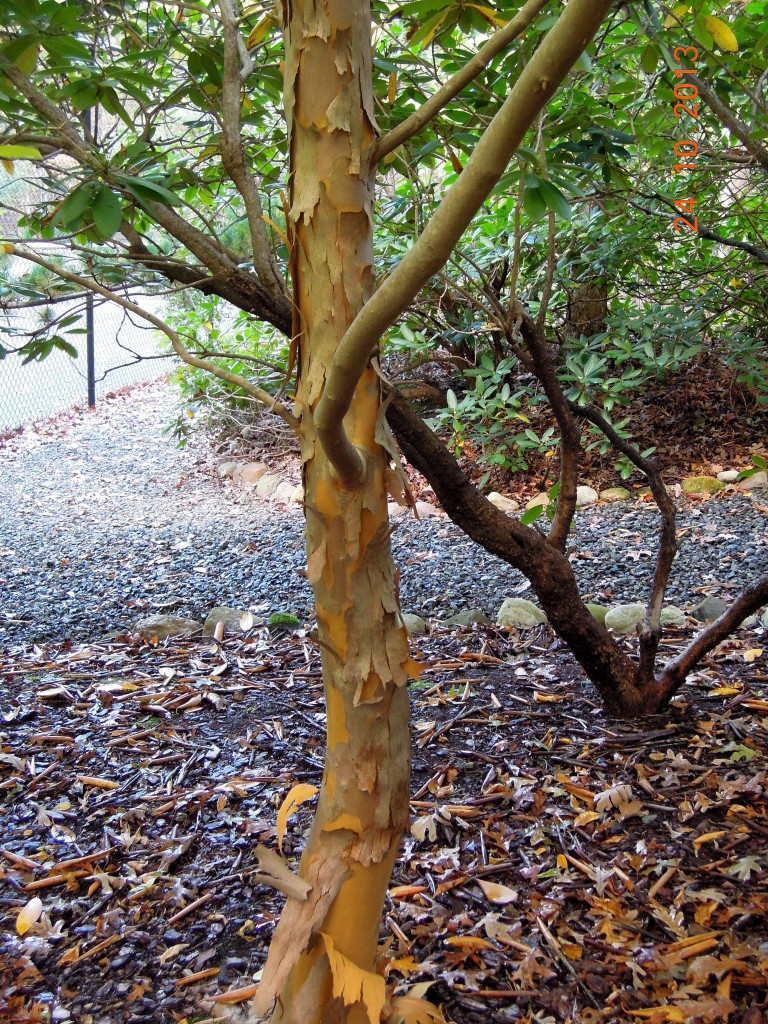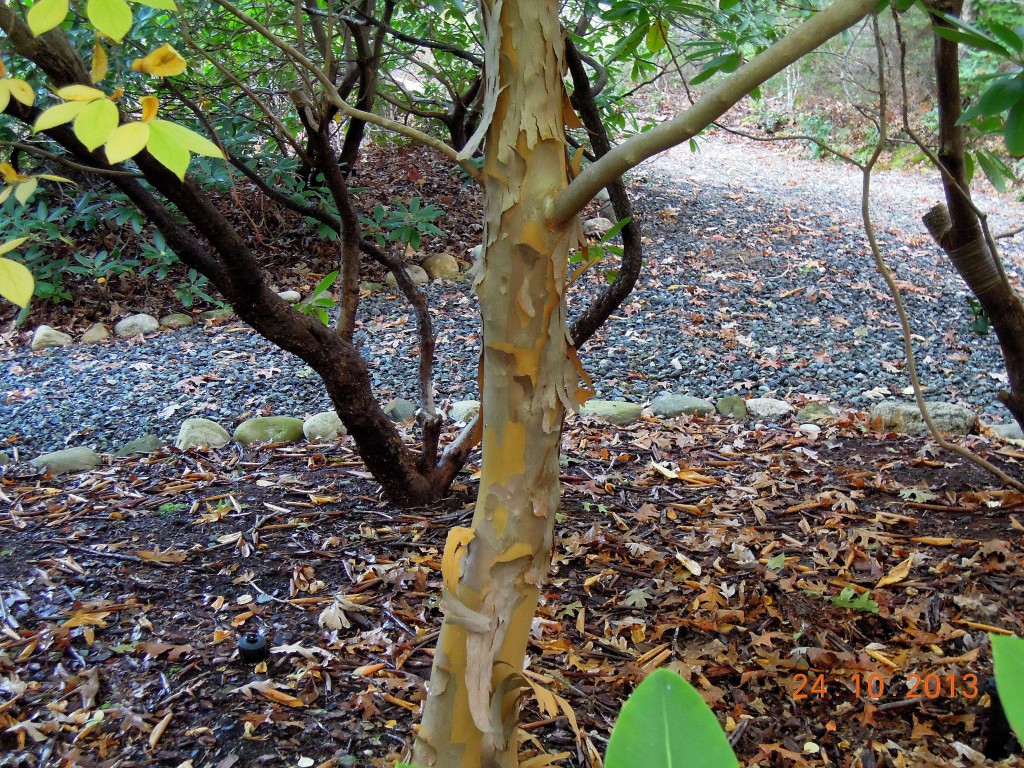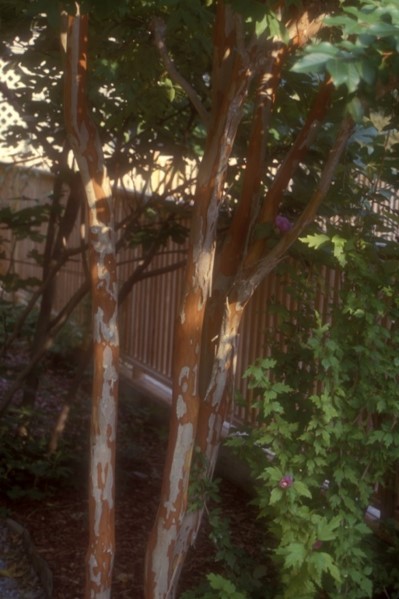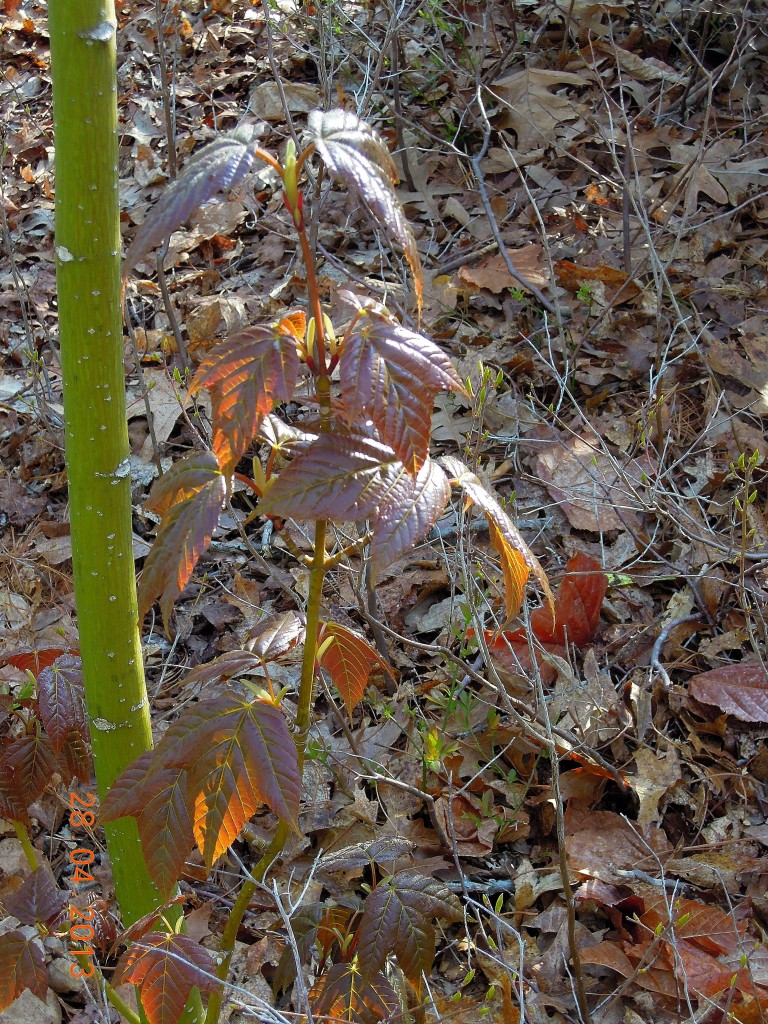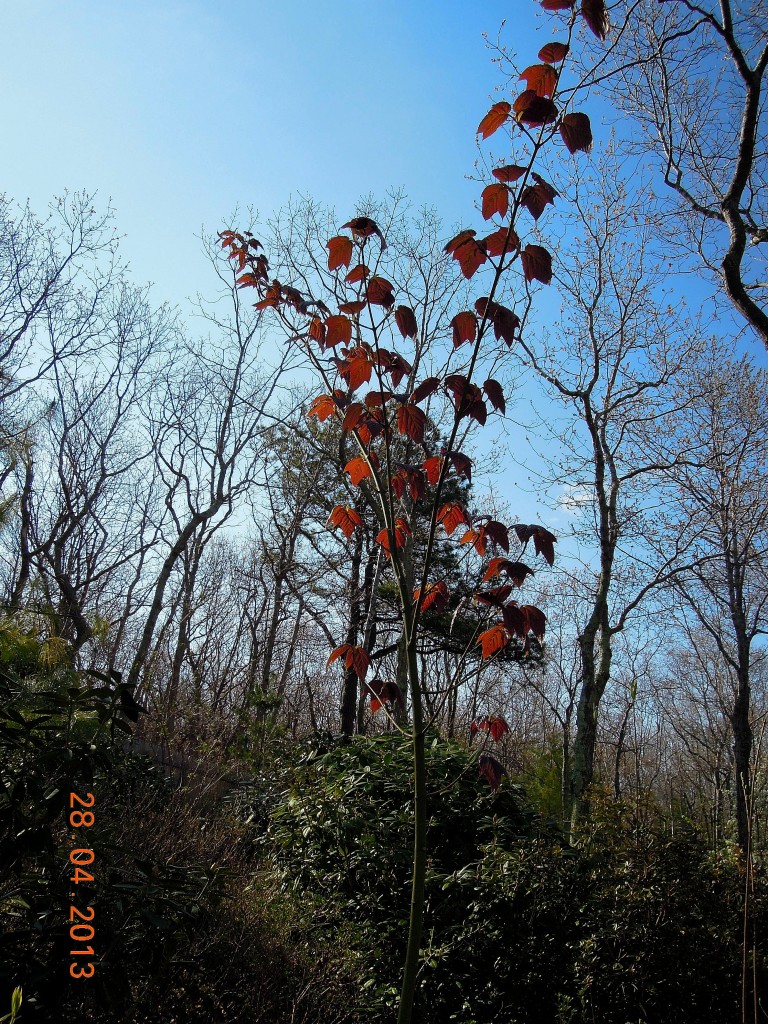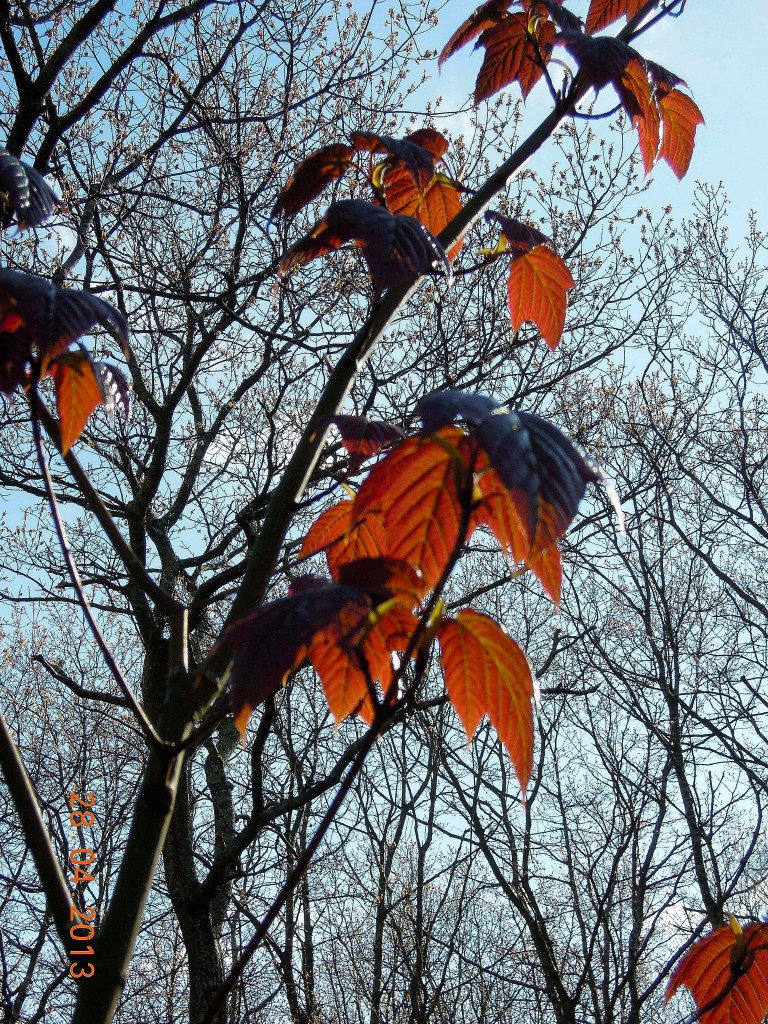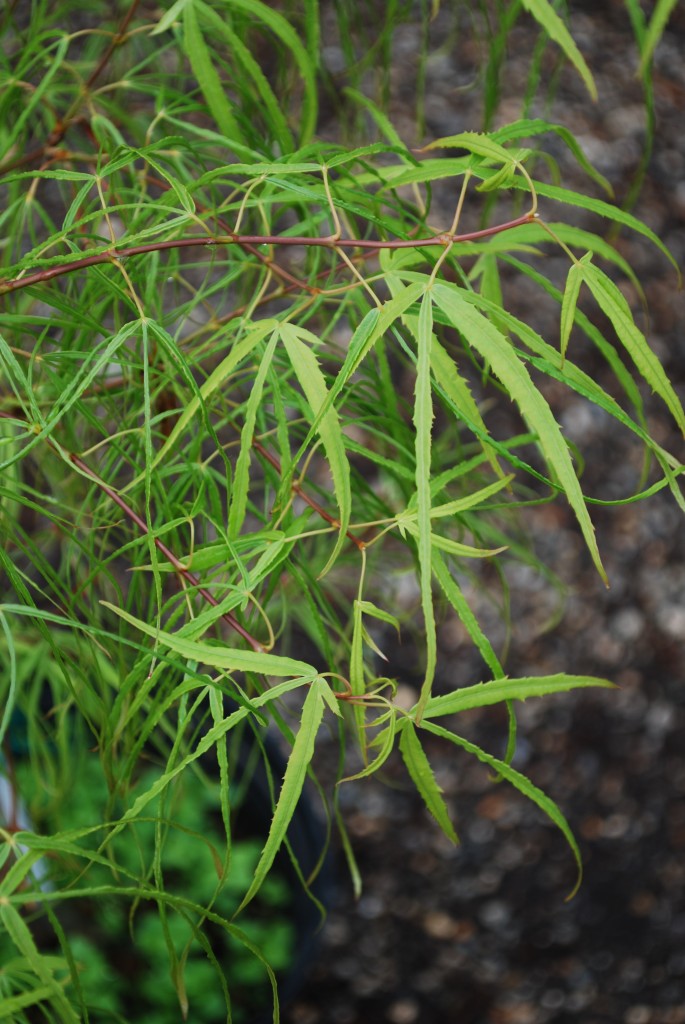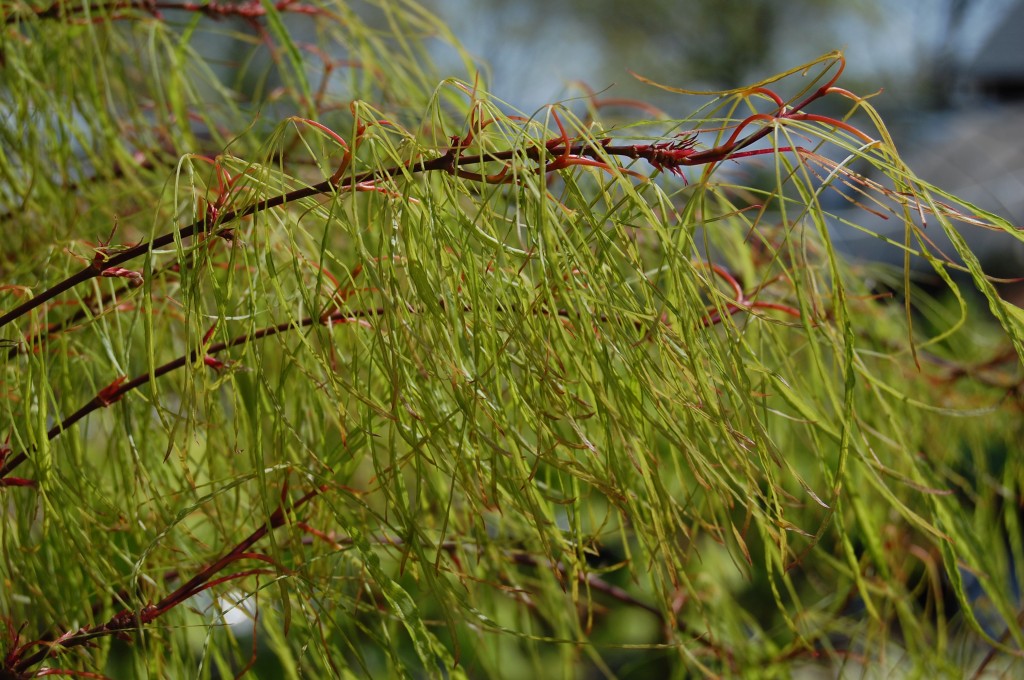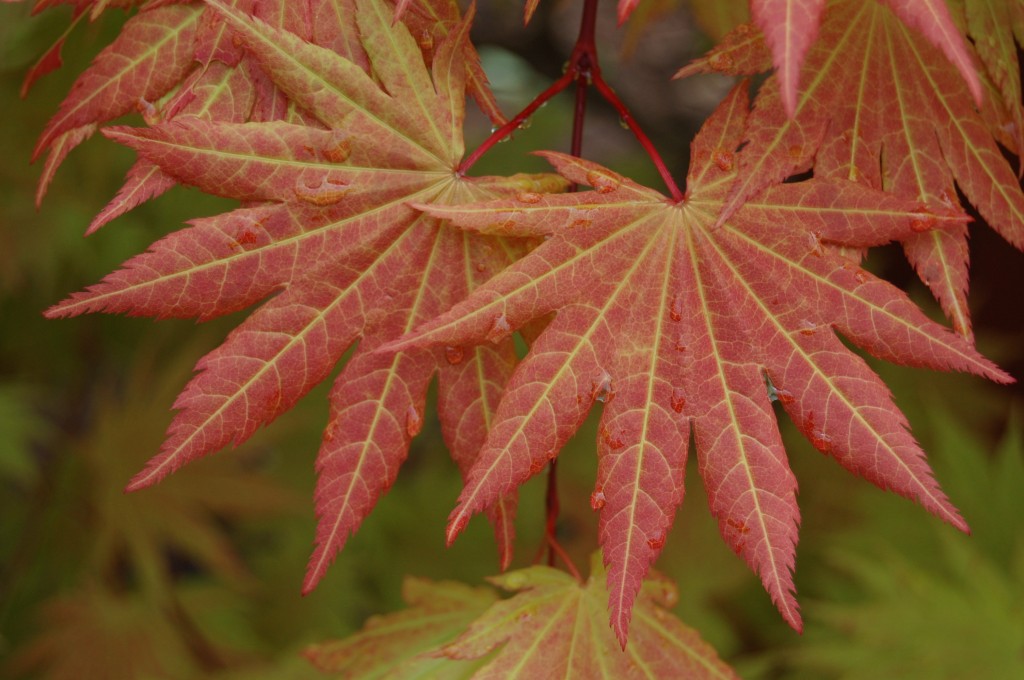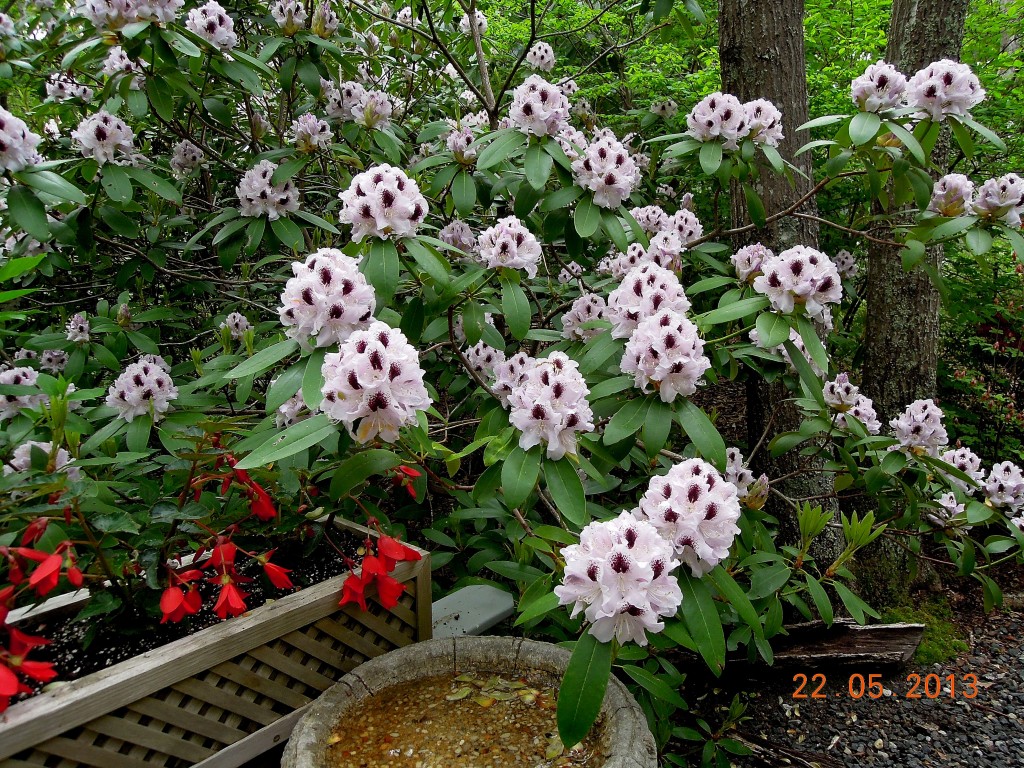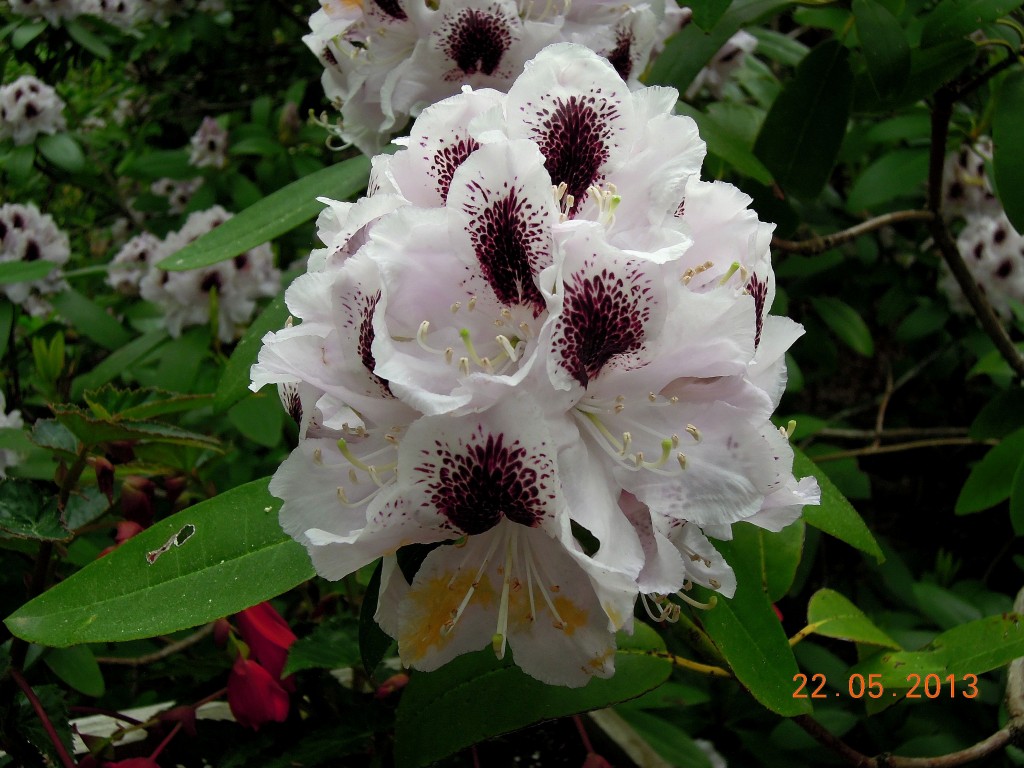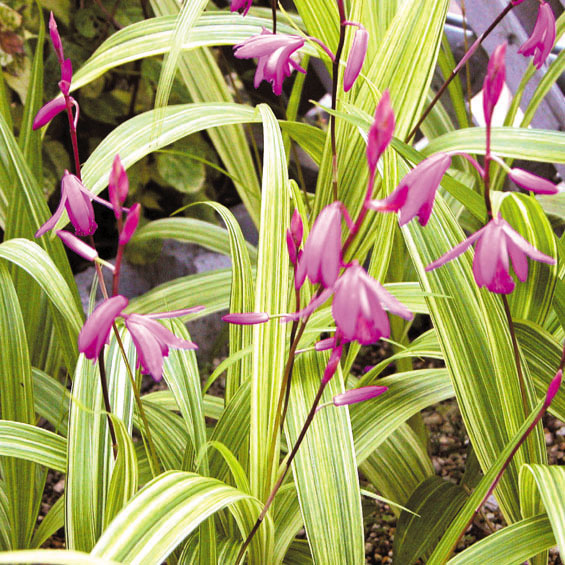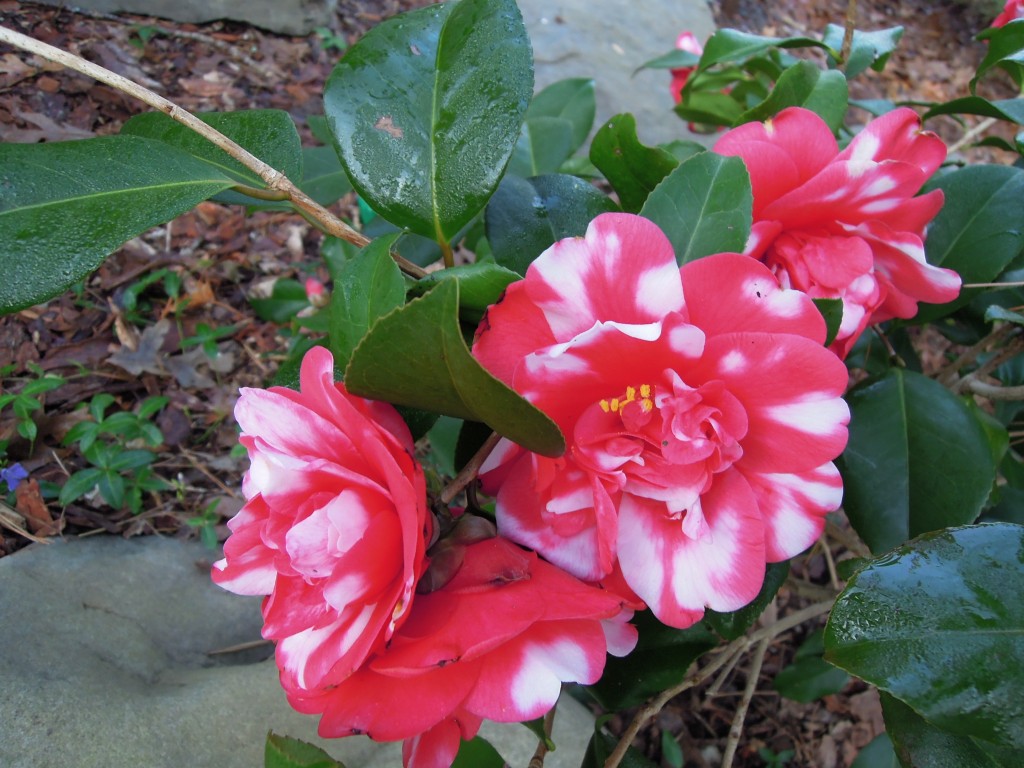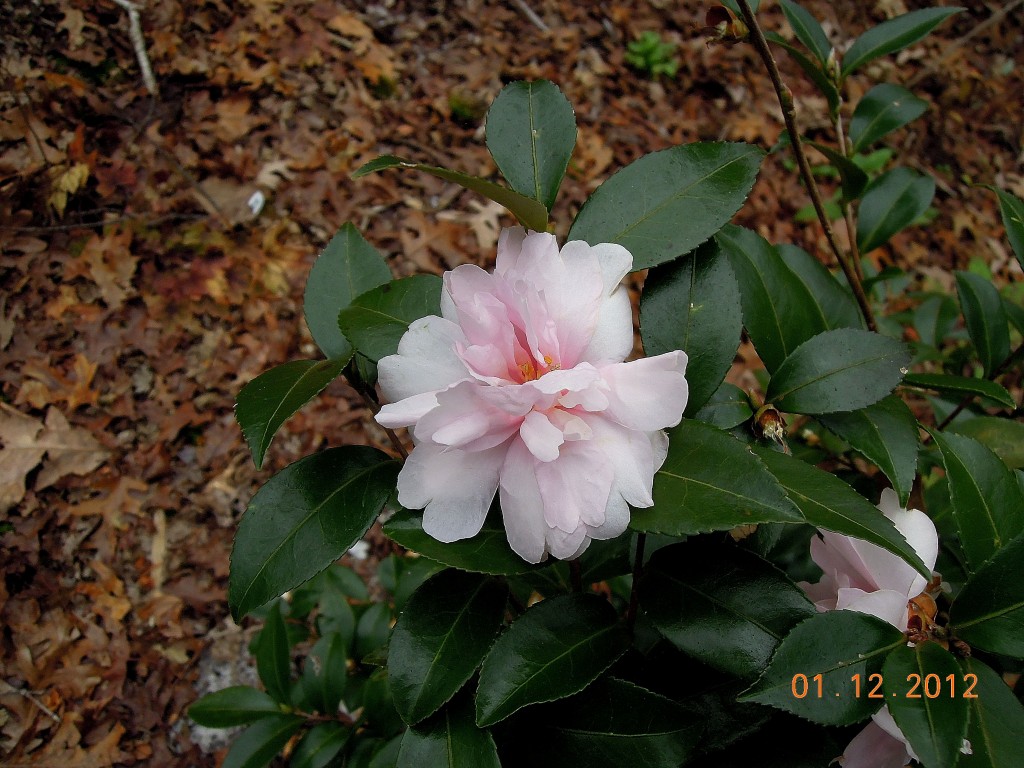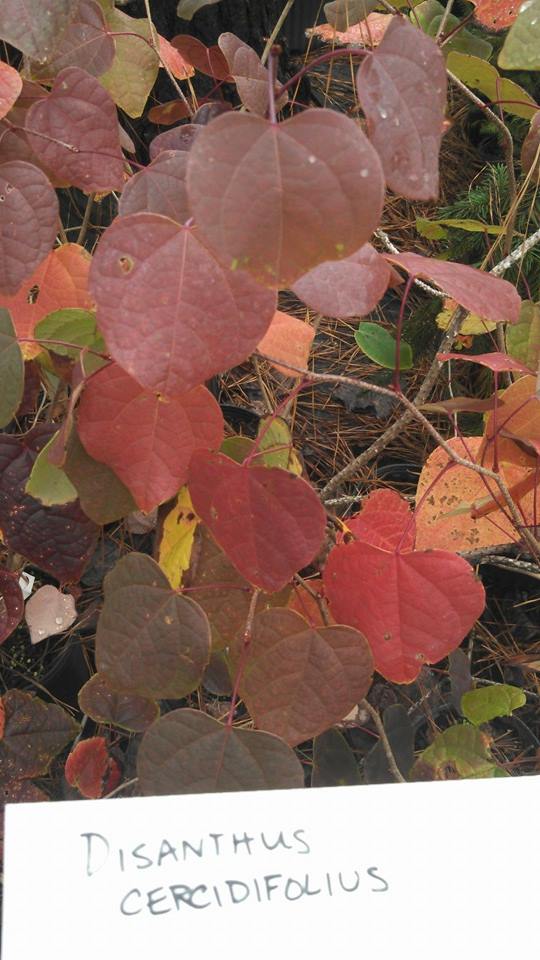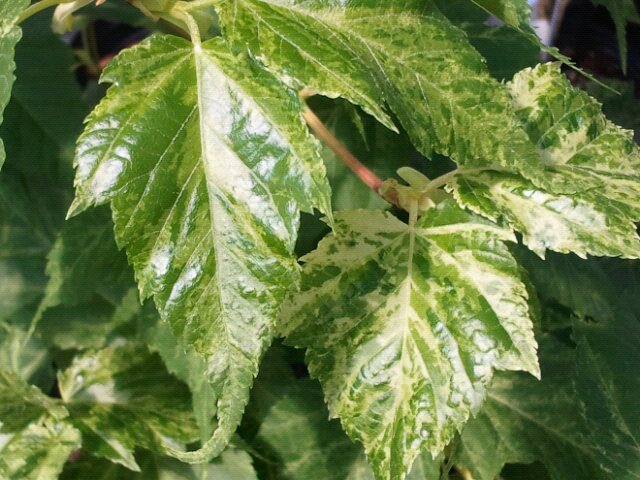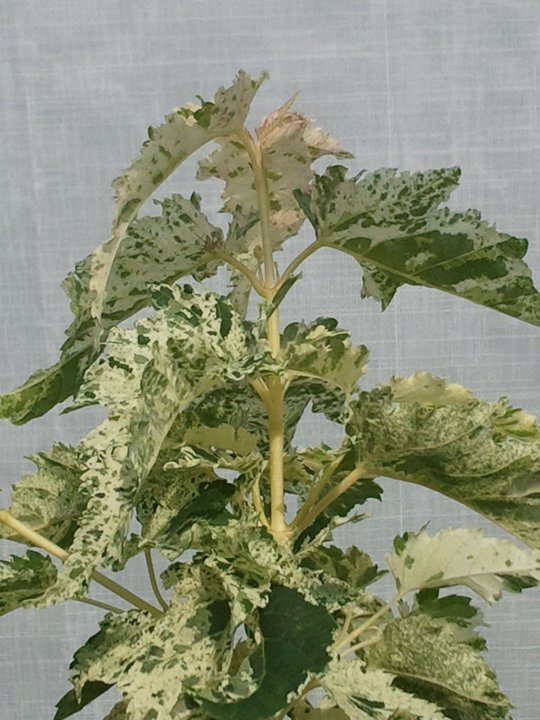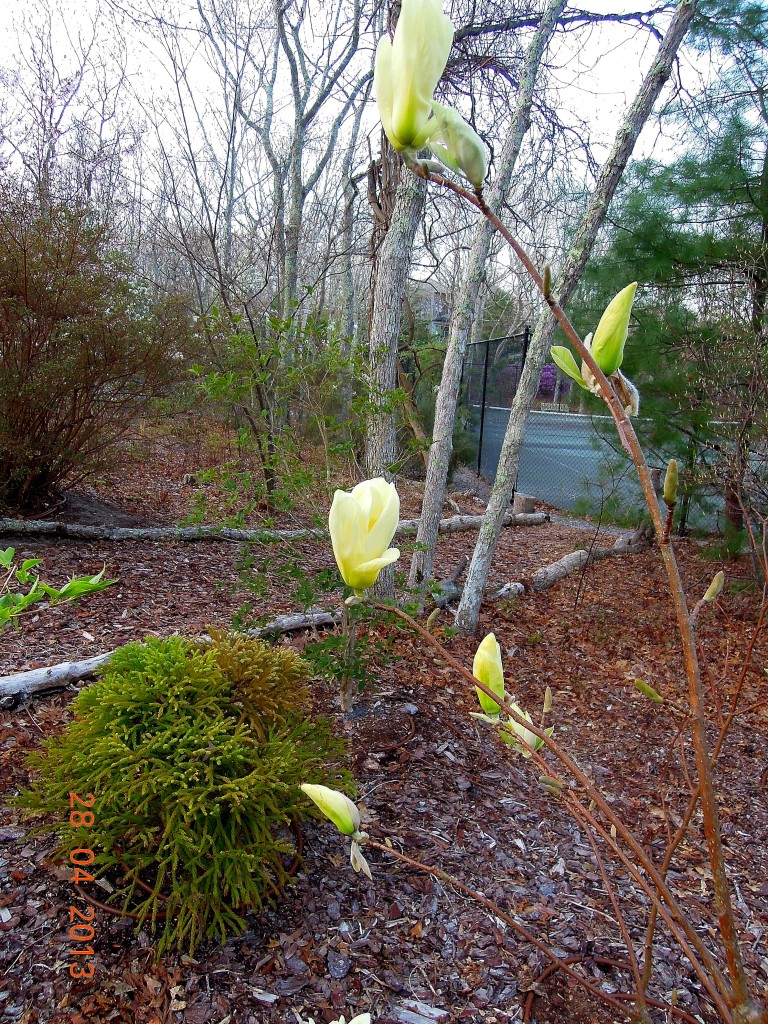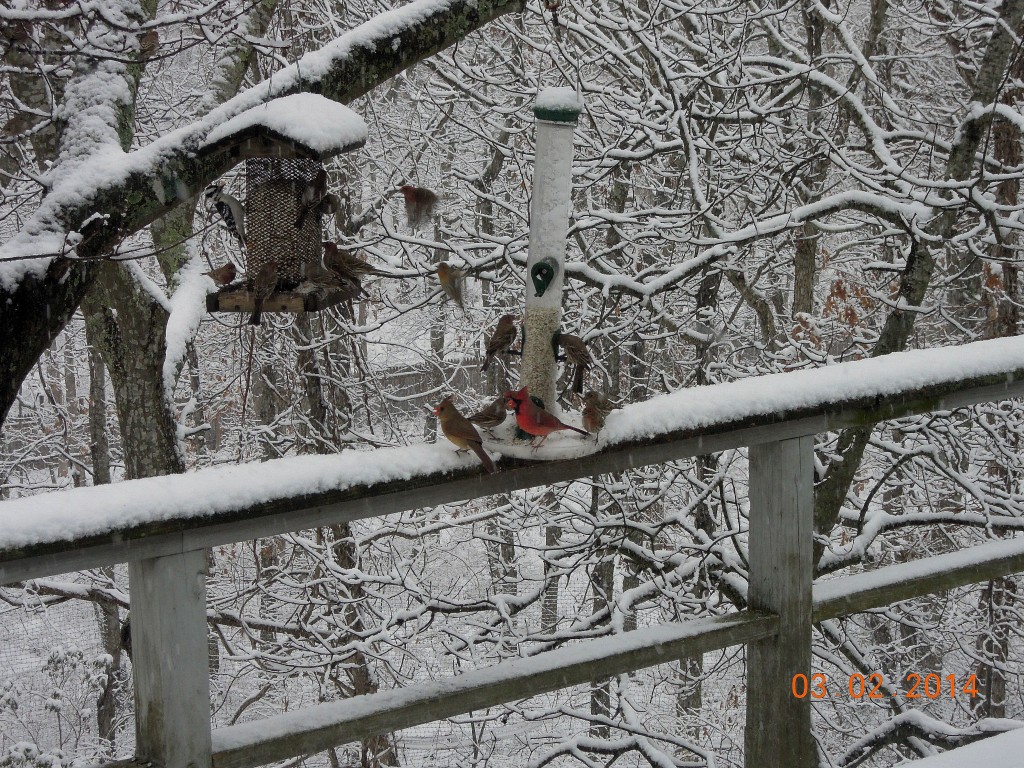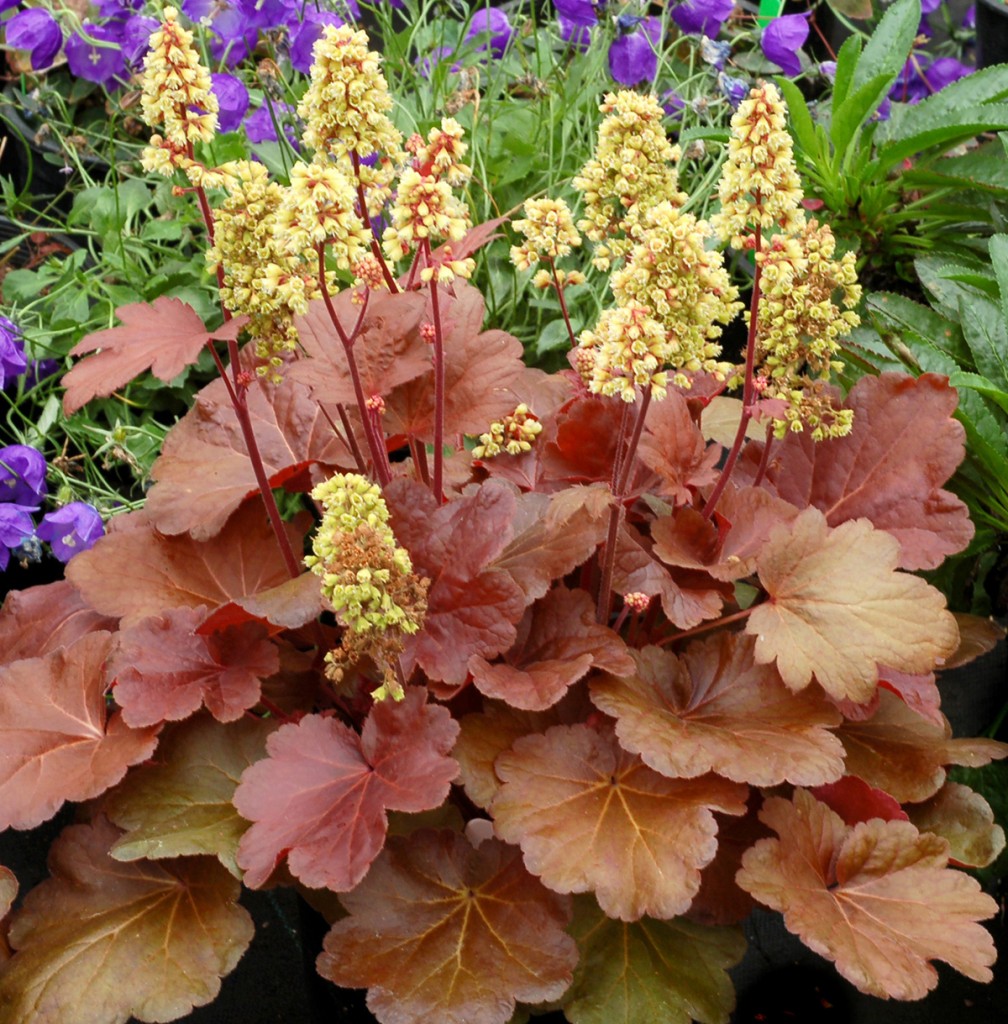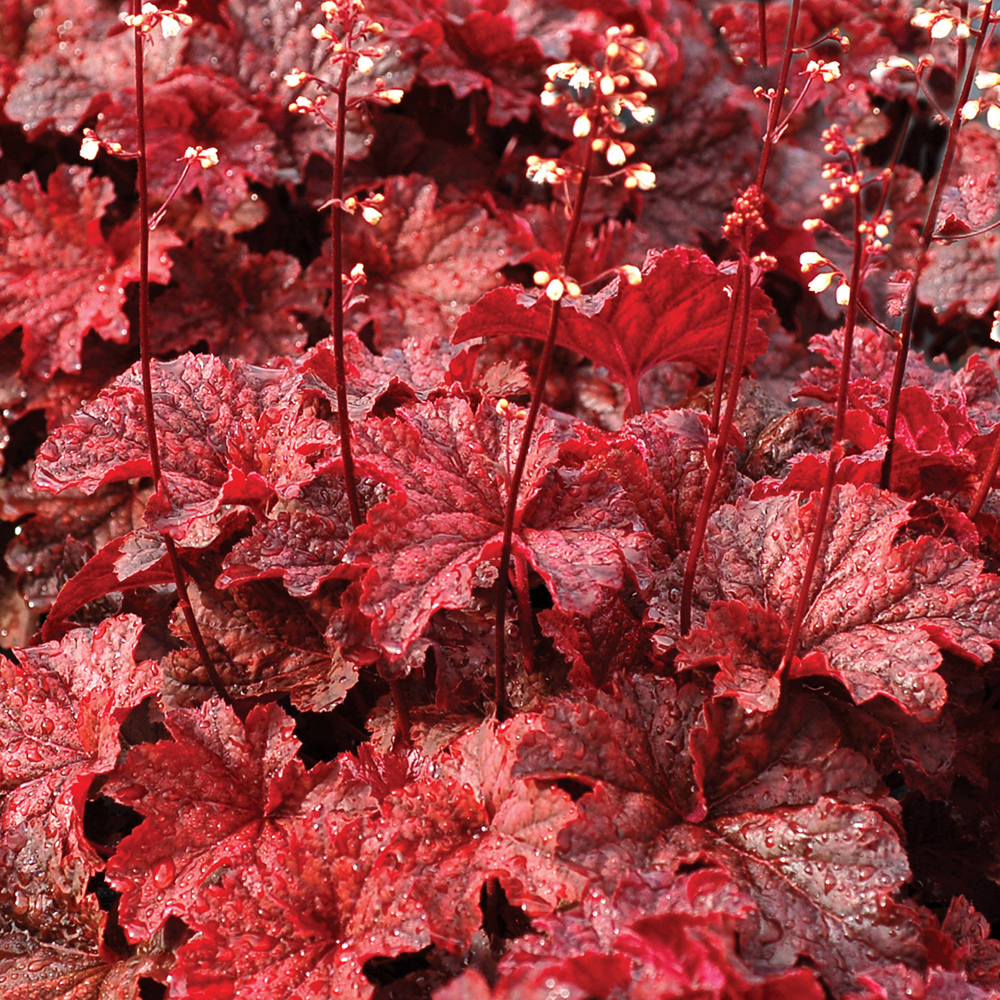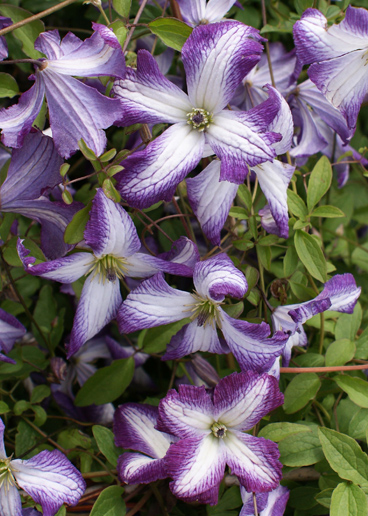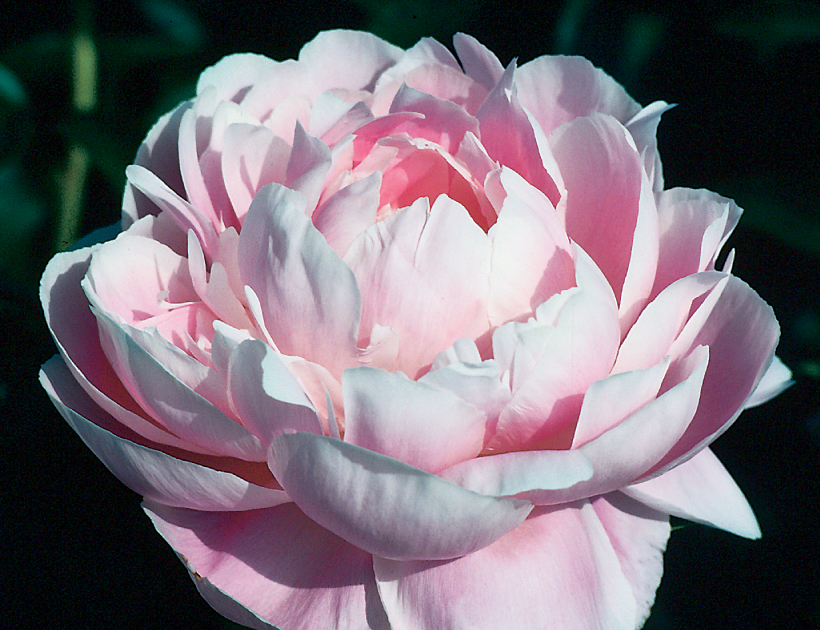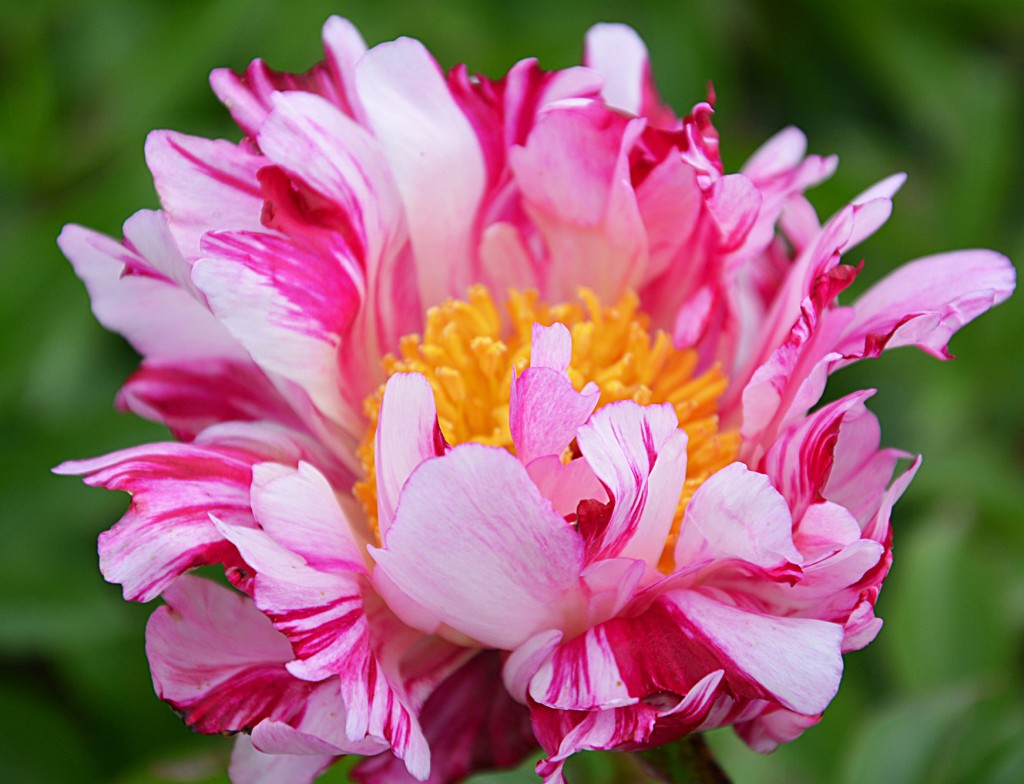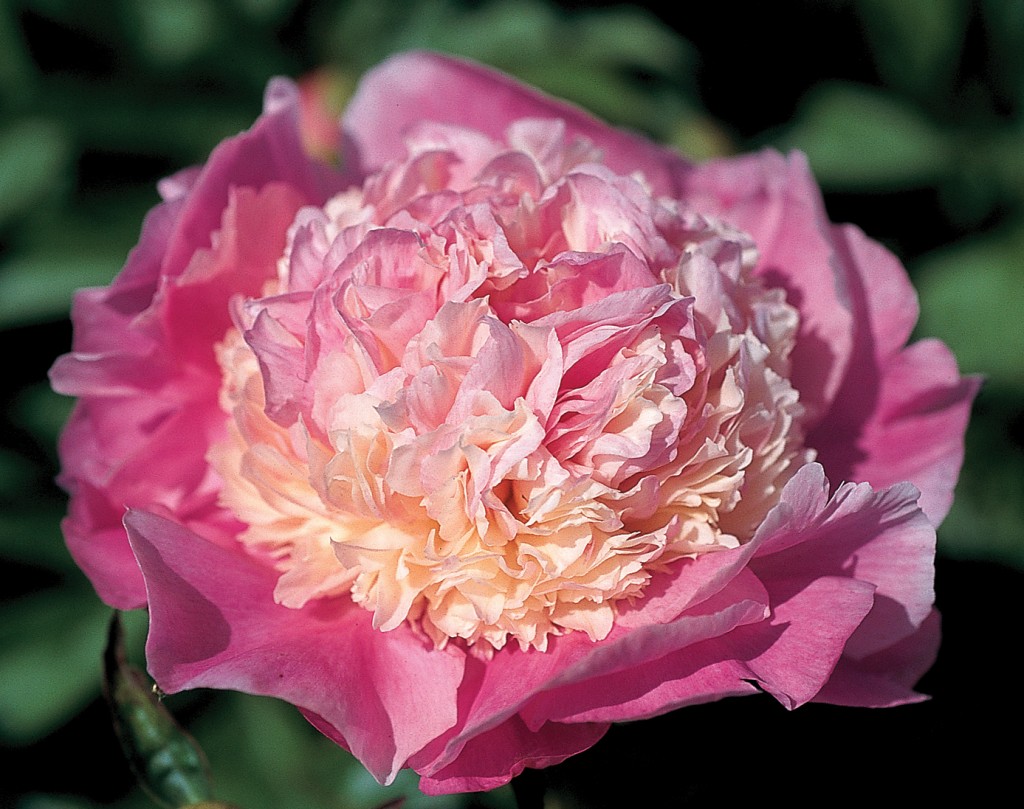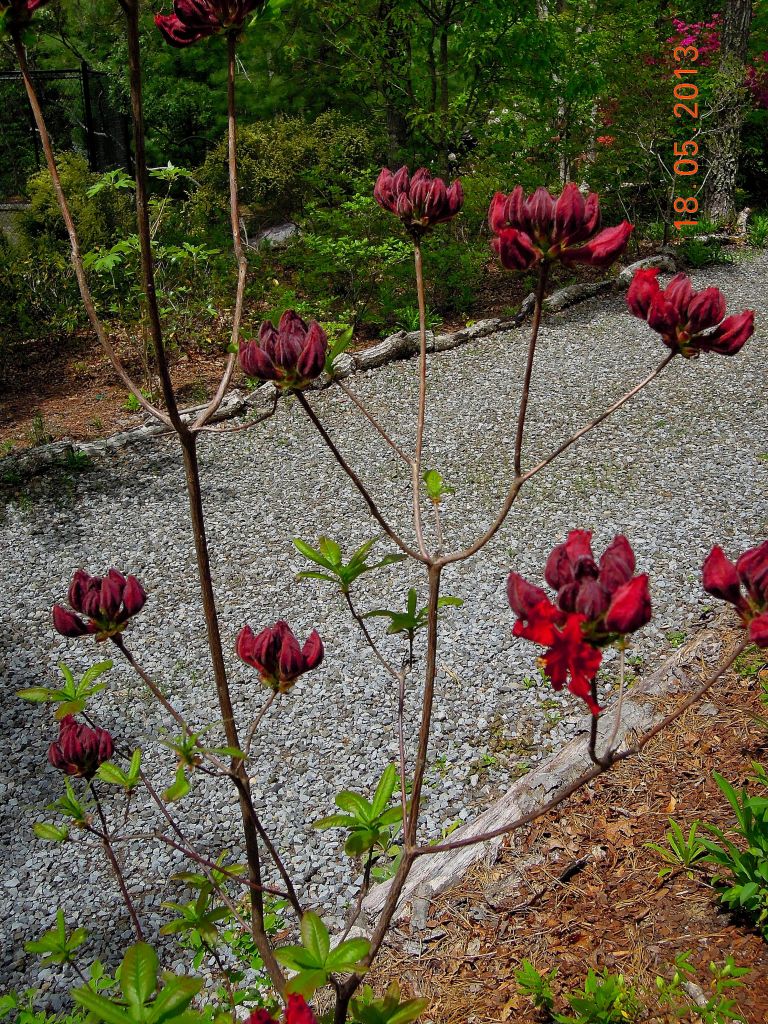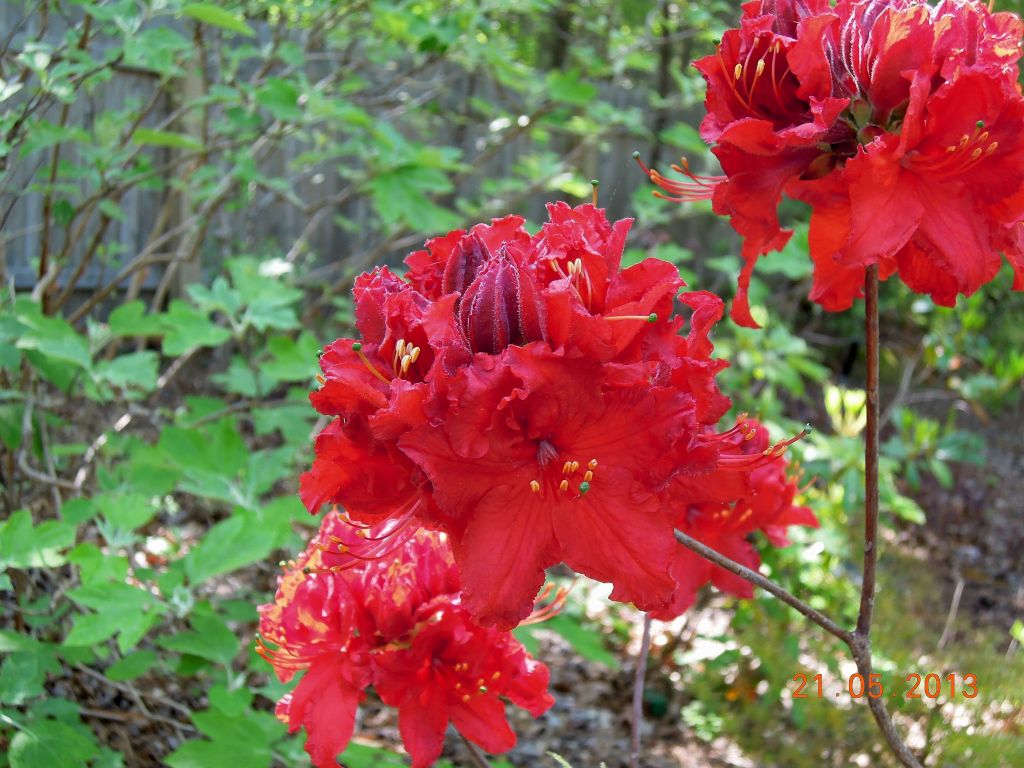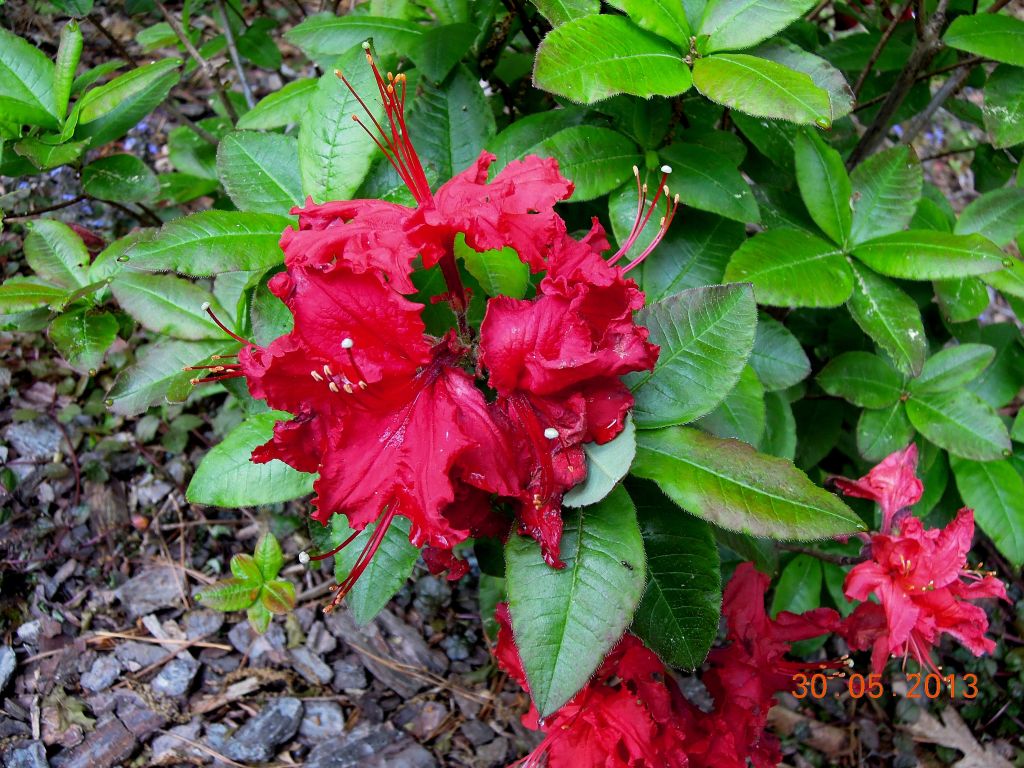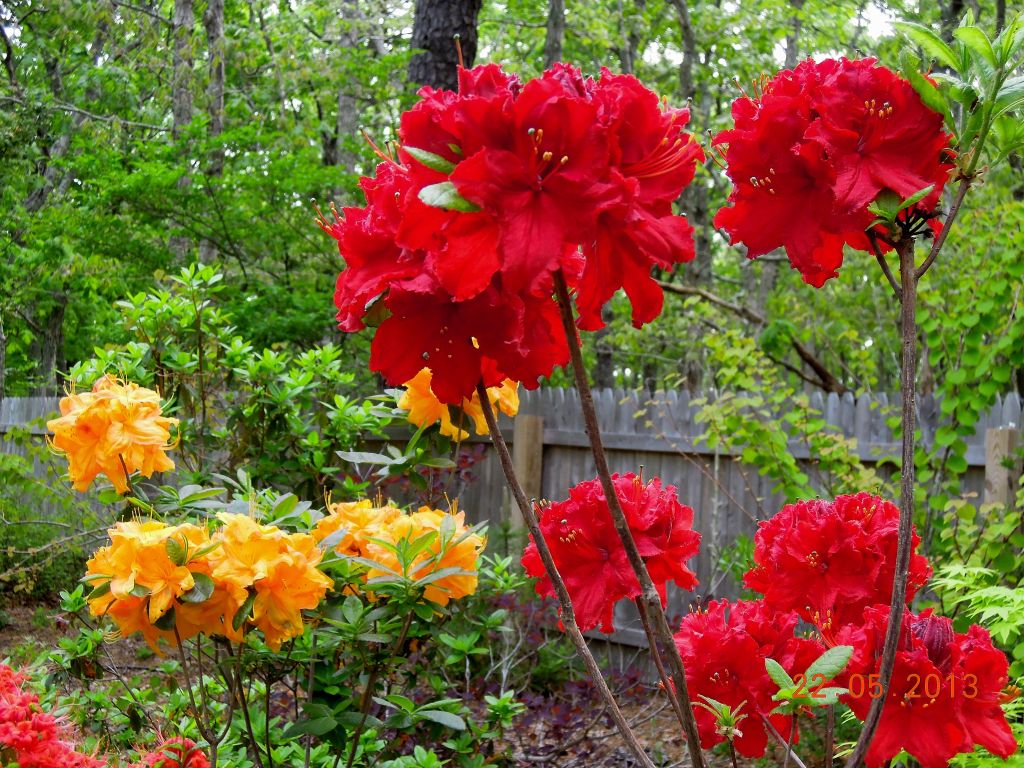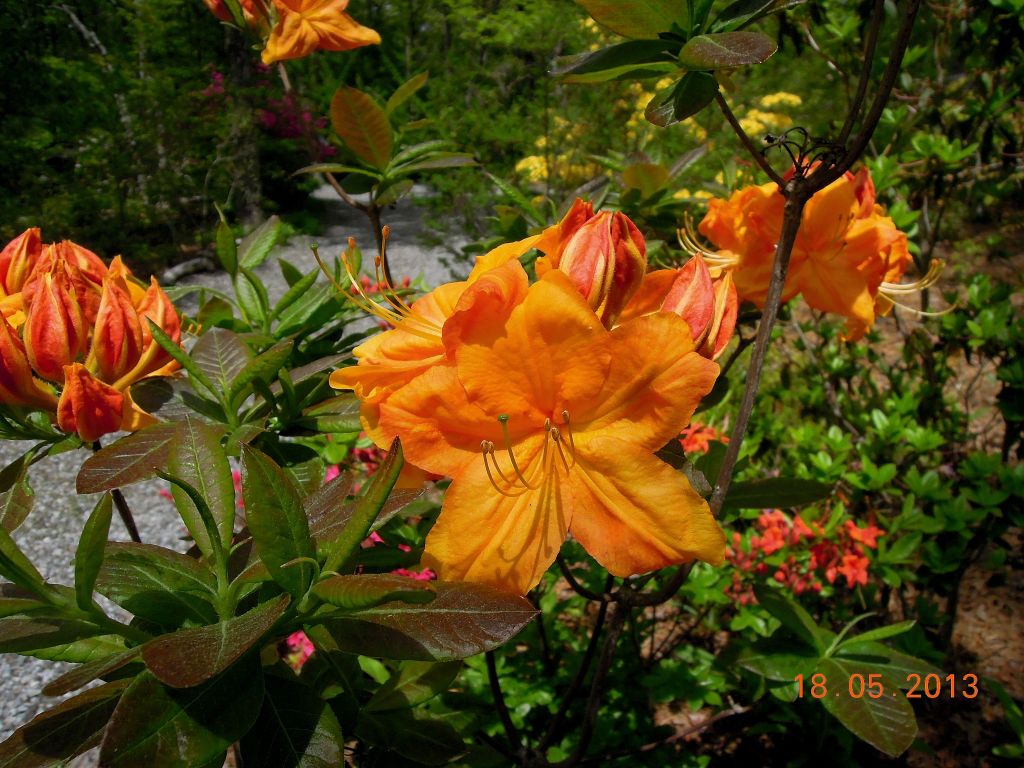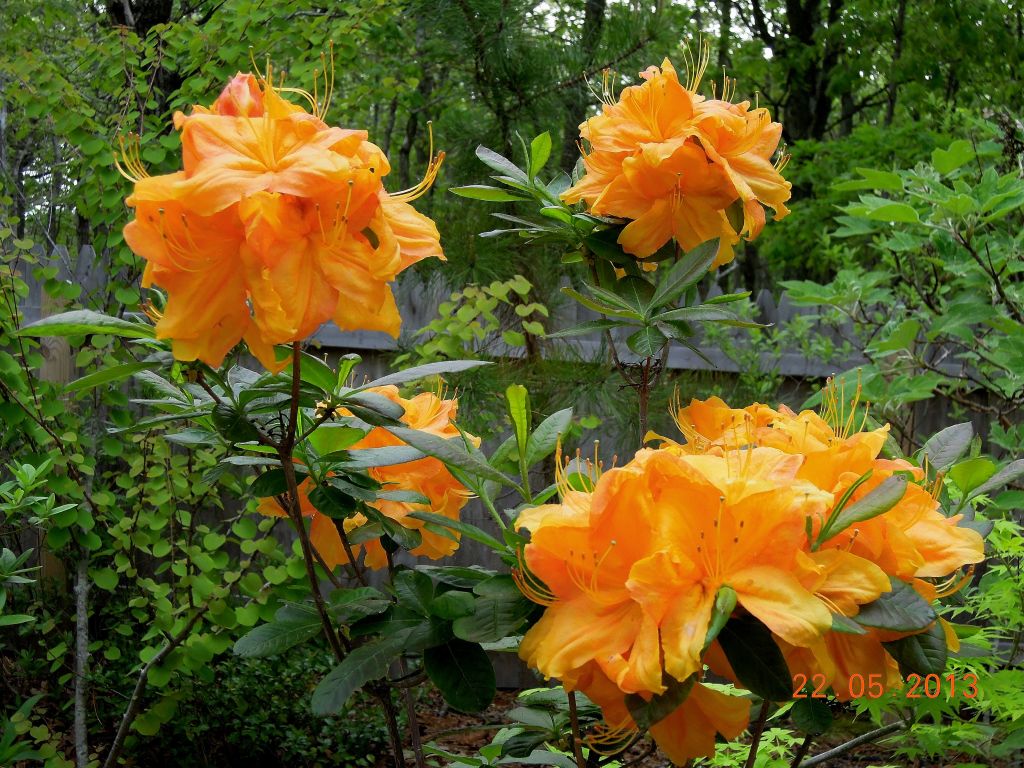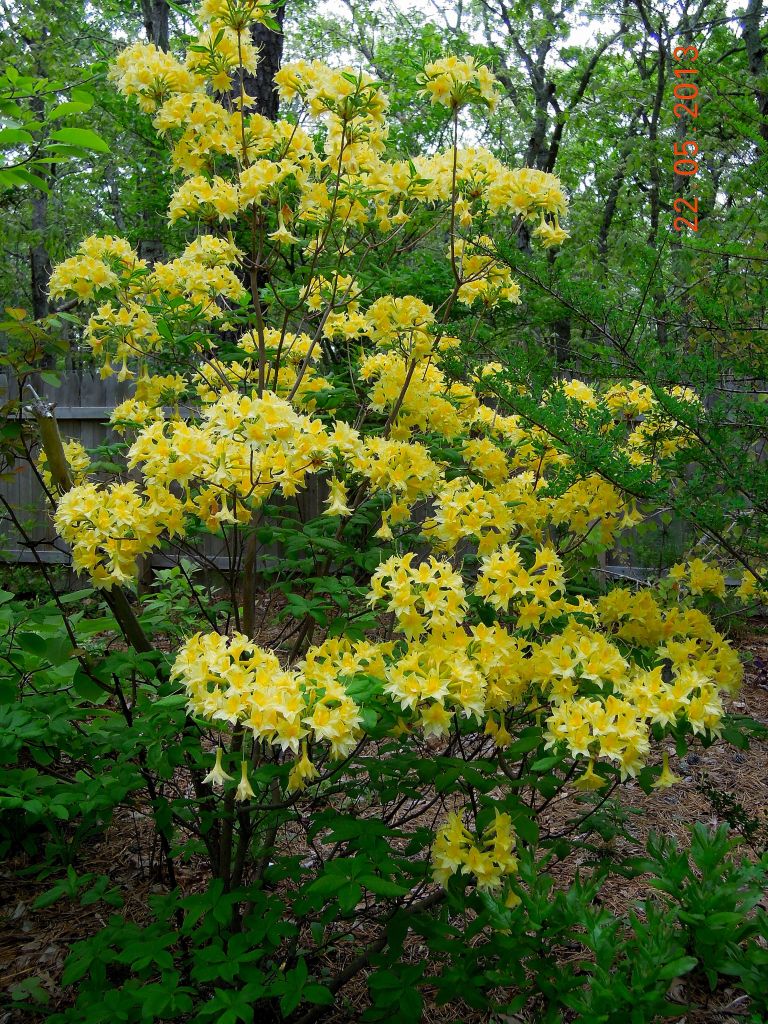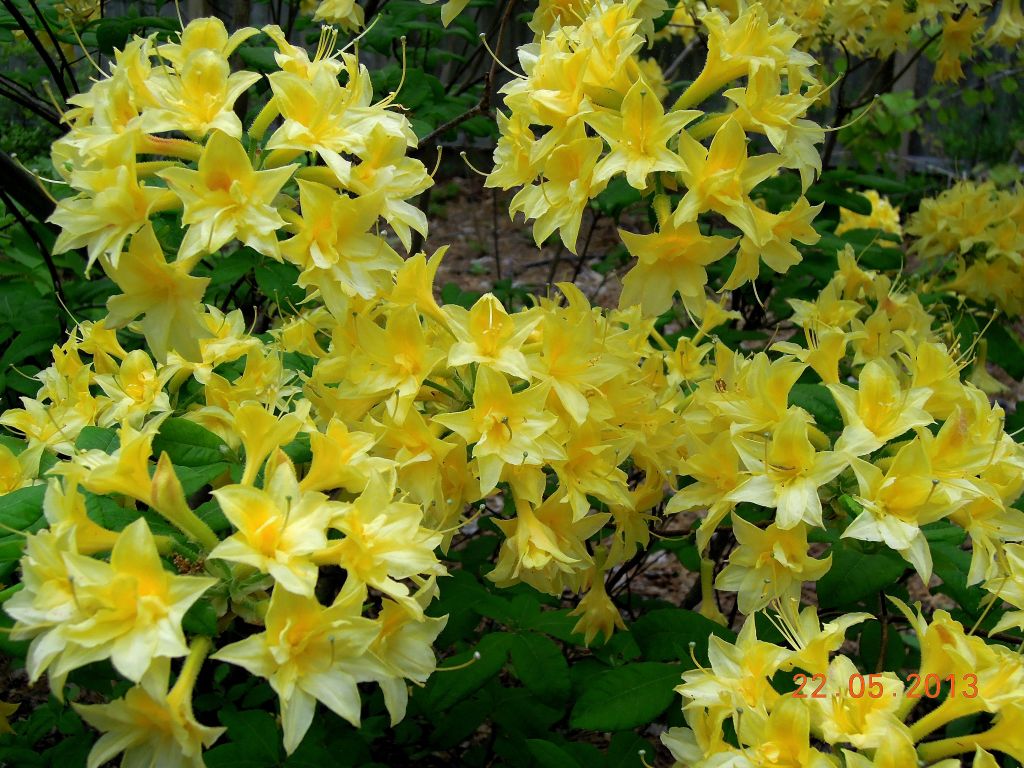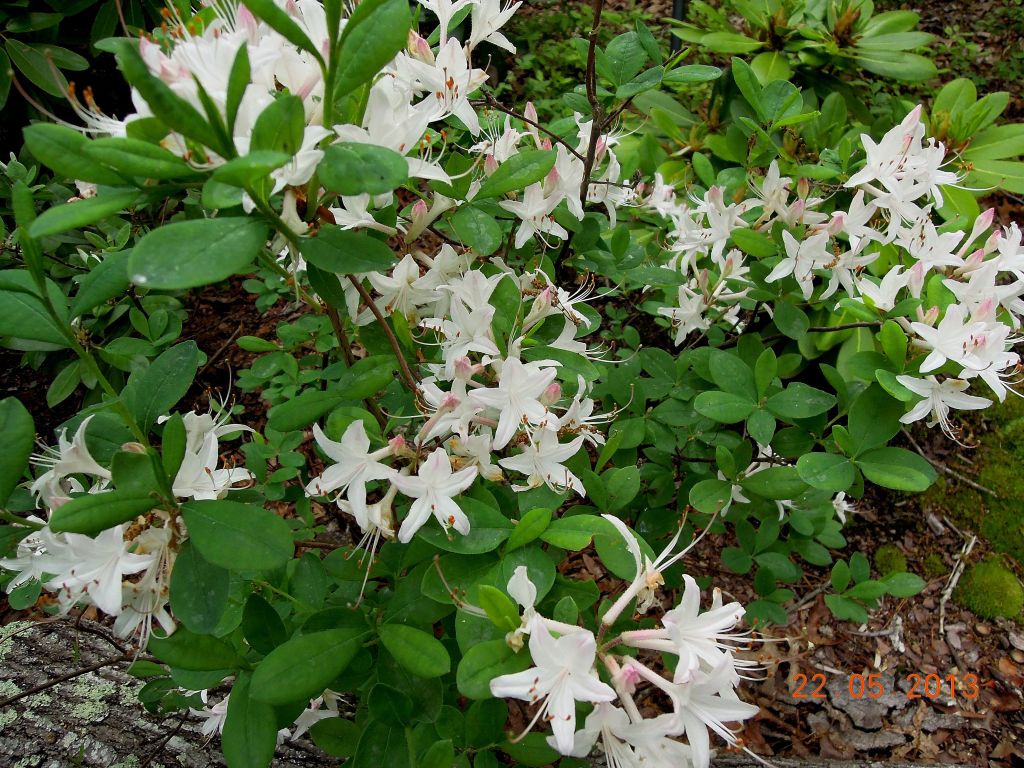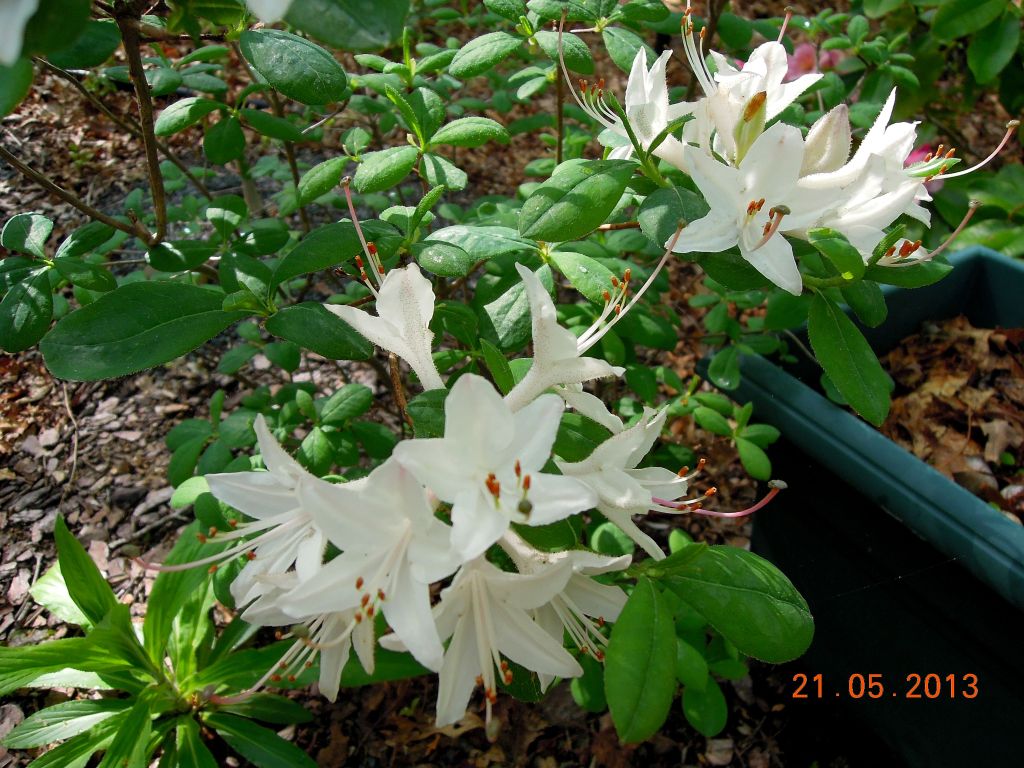The birds are singing love songs, the bumble bees are buzzing and the forsythia is in bloom. It must be Spring. AT LAST! Thought it would never come.
When Vita Sackville West created the celebrated and widely copied White Garden at Sissinghurst, it was meant to be viewed in summer; the plants — lilies, roses, delphiniums, etc. — were at their flowering peak in July and August. While I don’t have a White Garden, I’m quite fond of easy-care white flowering trees and shrubs, especially the early Spring bloomers. After our horrific winters, these beauties are a joy to behold:
Pieris japonica ‘Mountain Fire’ (Zones 4-7)
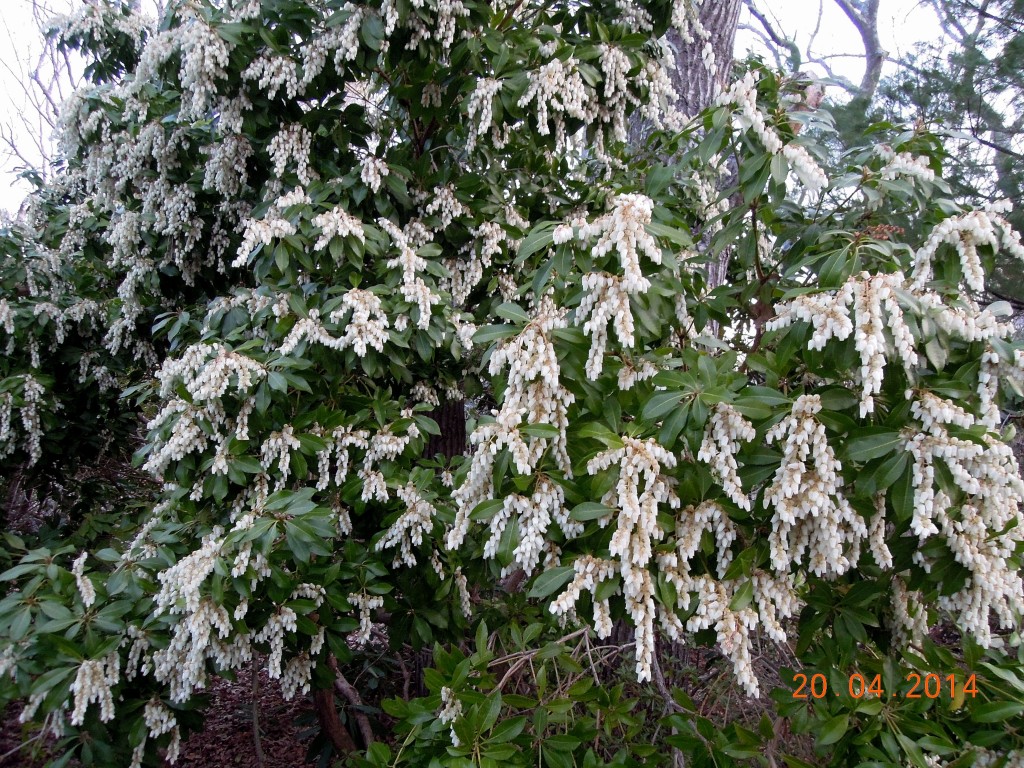
copyright 2014 – Lois Sheinfeld
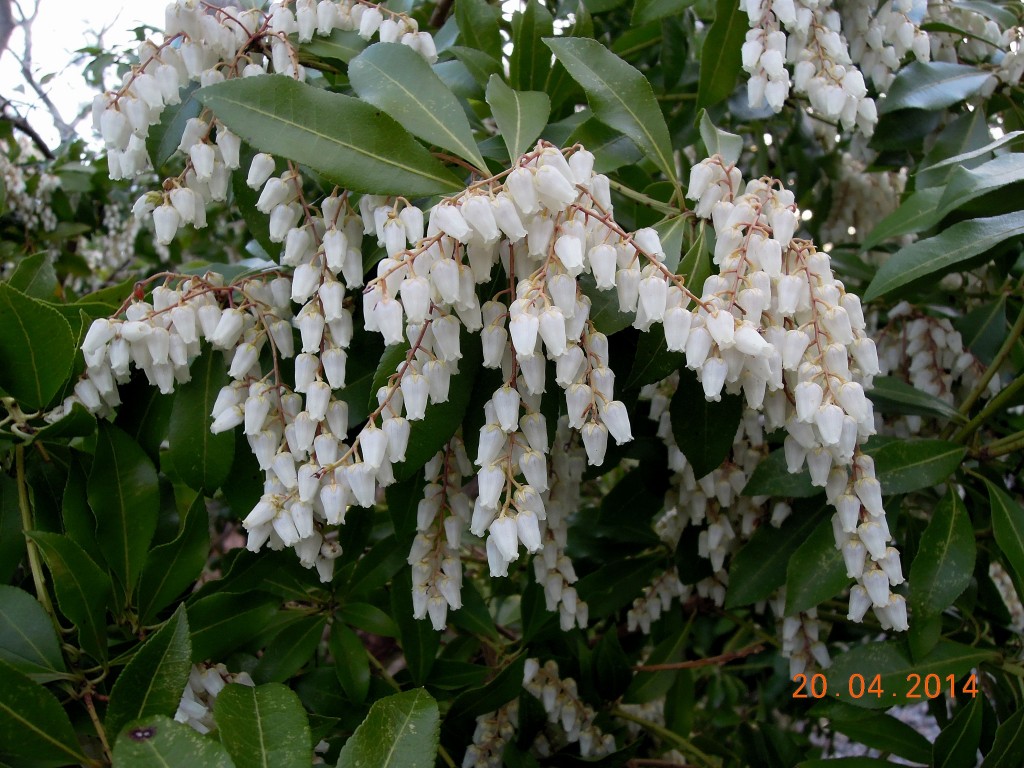
copyright 2014 – Lois Sheinfeld
I have been growing this sensational evergreen shrub for over twenty years and I recommend it without reservation. To my mind, it’s a perfect plant. P. japonica ‘Mountain Fire’ has bloomed reliably every year, cloaking itself with an abundance of pendulous, snowy-white, fragrant, urn-shaped flowers that attract bees and butterflies. When the flowers fade, the new foliage growth is a dramatic fire-engine red, fading to copper, and then dark green.
New flower buds form in summer adding to Fall and Winter interest. Truly a four-season performer. And the shrub is deer-resistant. (In my garden it has been deer-free, even before our garden became a formidable fenced fortress.)
Pieris does require organic rich, well-drained acid soil, and adequate moisture. And most important, plant in shade. If planted in sun, Pieris is vulnerable to ruinous lace bug attack.
My shrubs are now about 12 feet tall — ideal evergreens for hiding anything untoward — but you can hard prune after flowering if you prefer smaller plants. Or try Pieris x ‘Spring Snow’, a cross between our native P. floribunda and P. japonica, which won’t exceed 3 feet in height and also produces radiant spring flowers. ( Photo below.) The new foliage has pleasing coppery shades.
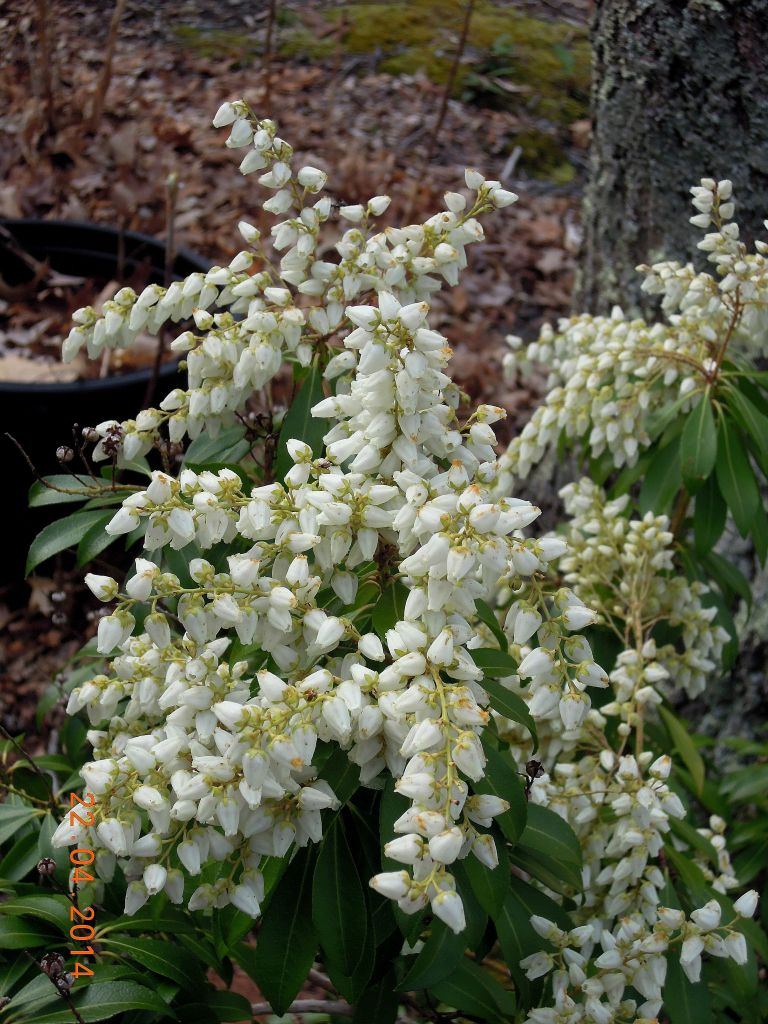
copyright 2014 – Lois Sheinfeld
Rhododendron ‘White Surprise’ (Zones 6-8)
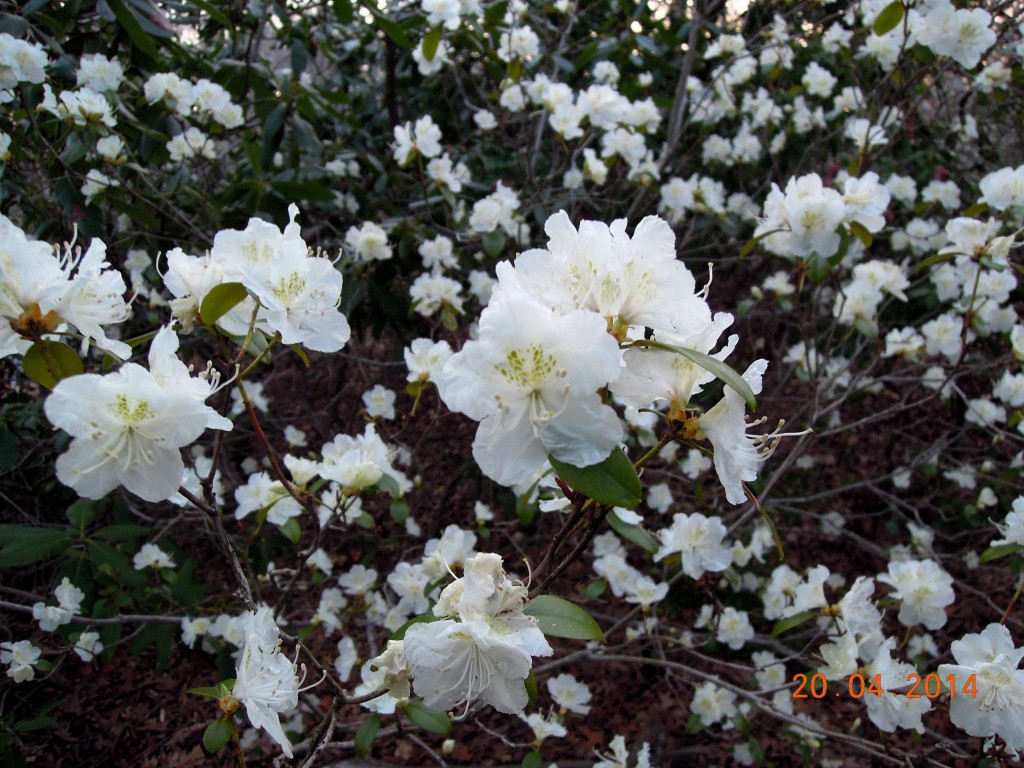
copyright 2014 – Lois Sheinfeld
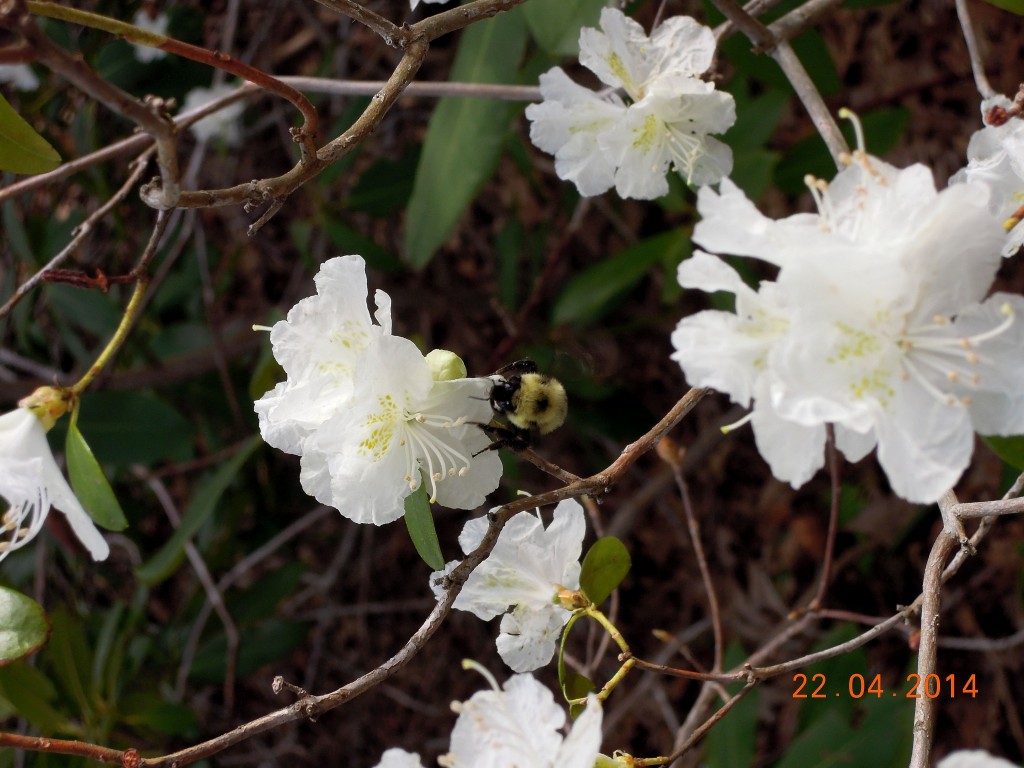
copyright 2014 – Lois Sheinfeld
This lepidote Rhododendron, a Gustav Mehlquist hybrid, is another old-timer in my garden. Like Pieris, it is a dazzling, reliable bloomer — never missing a year despite having been moved three times. A can-do plant. The flowers are pure white with just a sweet dusting of lime-green freckles on an upper petal, and they are very attractive to bees. ( In my garden that’s a good thing. A very good thing.)
After fifteen years my White Surprise is about six feet tall. Its culture requirements are similar to Pieris, though it would probably appreciate and benefit from a bit of sun.
(Note: Another Mehlquist hybrid you might like is the compact, semi-dwarf elepidote, Rhododendron ‘Ingrid Mehlquist‘, which flaunts lovely, frilly pink flowers later in the season. One of my favorites.)
Prunus ‘Snow Fountain’ (a/k/a ‘White Fountain’) (Zones 6-8)
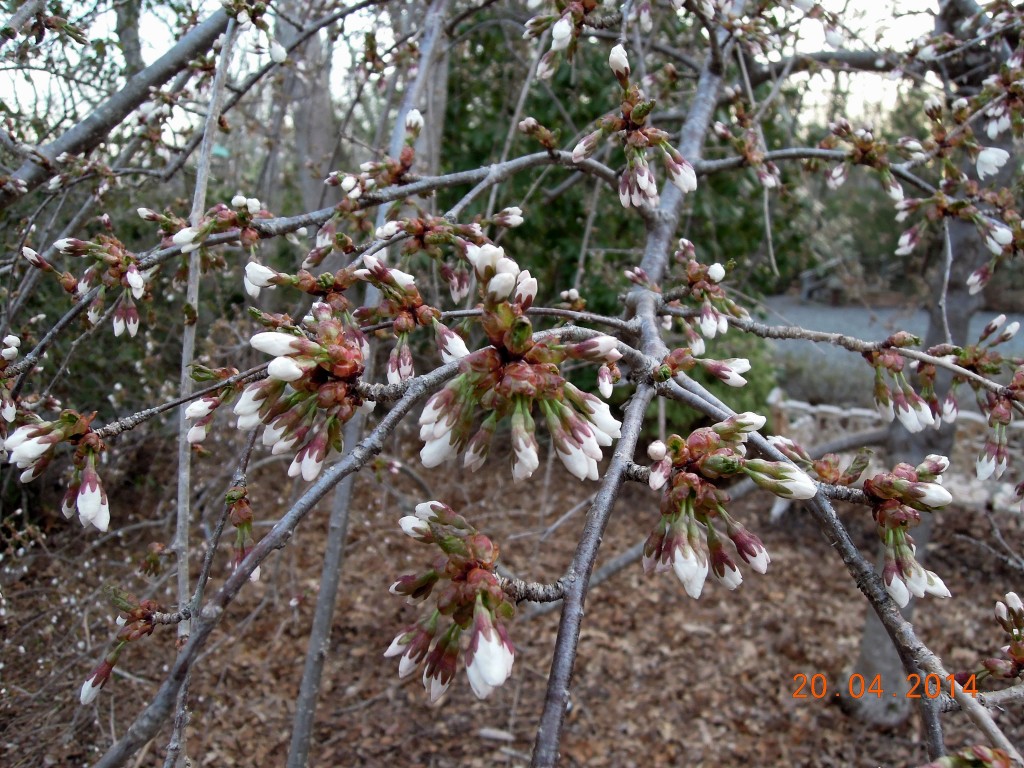
copyright 2014 – Lois Sheinfeld
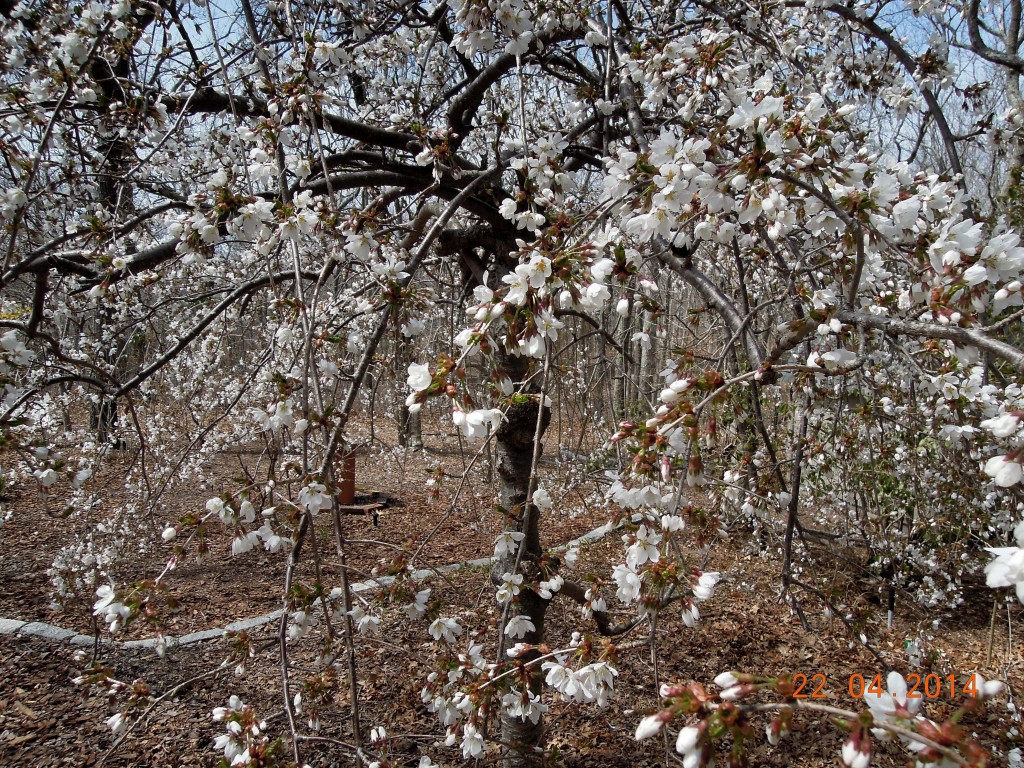
copyright 2014 – Lois Sheinfeld
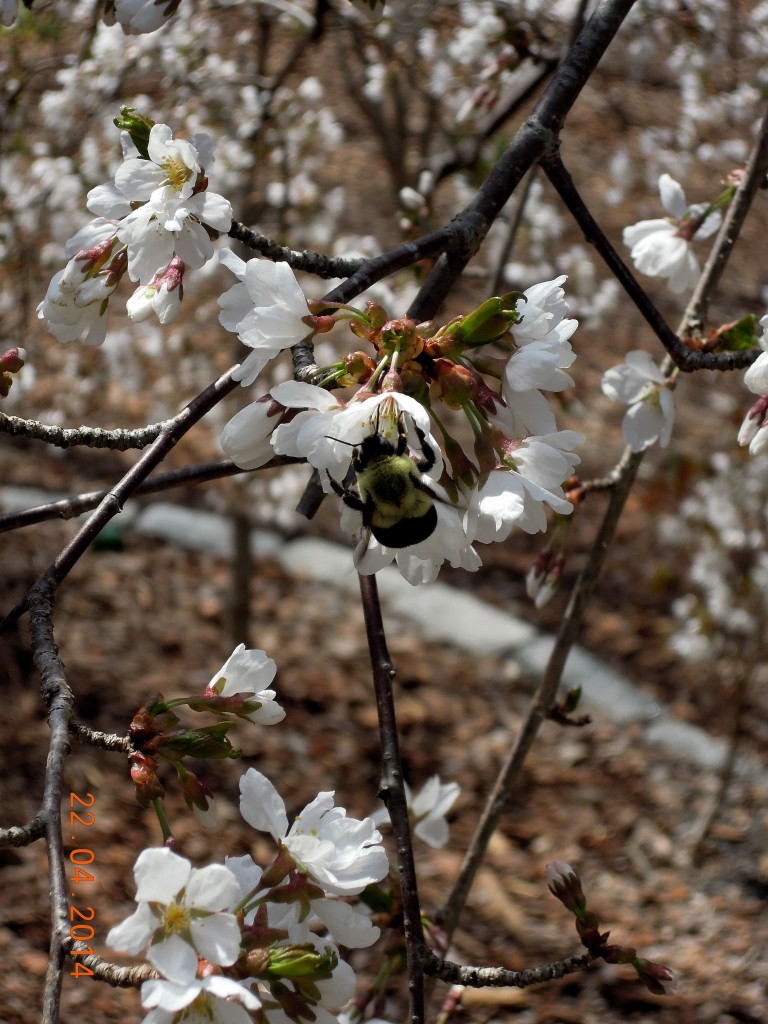
copyright 2014 – Lois Sheinfeld

copyright 2014 – Lois Sheinfeld
My Spring garden is full of wonder and surprise. I’m especially careful when I rake and weed because I never know what wonderful plants may magically appear — like seedlings of Prunus ‘Snow Fountain’.
Over twenty years ago at the Philadelphia flower show I saw this luminous weeping cherry for the first time. Awestruck, I had to have it. Easier said than done. The tree had no identifying tag, it wasn’t part of a sponsored exhibit, and no one knew anything about it. Kidnapping crossed my mind but this angel’s 12 foot wide wingspan smothered in snowy-white blossoms was a tad much for the Metroliner.
As soon as I got home I hit the phones; the tree was identified and two months later a lovely young clone of the Philly angel was mine. Unlike other cherries, Snow Fountain has been disease-free and — save for the nibbling of rabbits — pest-free as well. It flourishes in the shade of deciduous oaks, blooms reliably every year, and is breathtaking in the fall when the foliage turns autumnal shades of red, orange and gold.
Even before all of the tree’s flower buds fully open, adoring bumble bees are paying homage. Moreover, when the fragrant flowers fade, the tree produces tiny ornamental fruit beloved of songbirds. Ergo, the seedling treasures that volunteer in the garden every now and then.
Ain’t Mother Nature grand?
